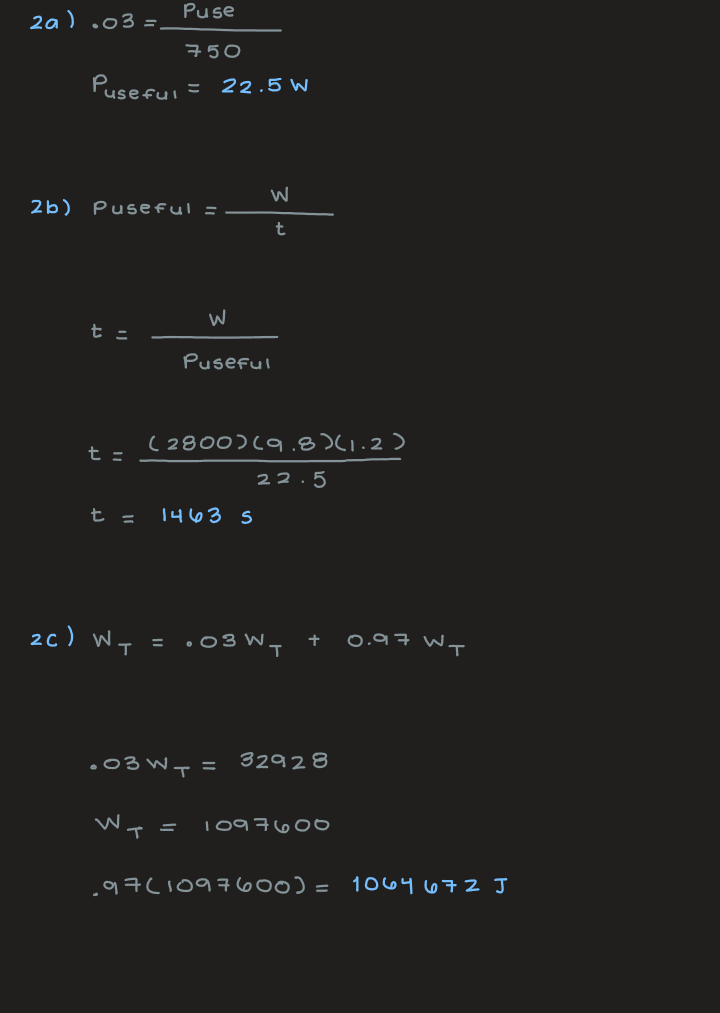PY 211 Midterm 2 Practice
1/64
Earn XP
Description and Tags
Modules 13 - 27
Name | Mastery | Learn | Test | Matching | Spaced |
|---|
No study sessions yet.
65 Terms
A 25 kg box rests on a horizontal floor, and then someone pushes on the box with a force of 650 N, 35° below the horizontal, to make it slide across the floor. What is the normal force on the box. Note, there is a friction force of unknown value that is parallel to the floor and points in the opposite direction from the motion of the box.
618 N
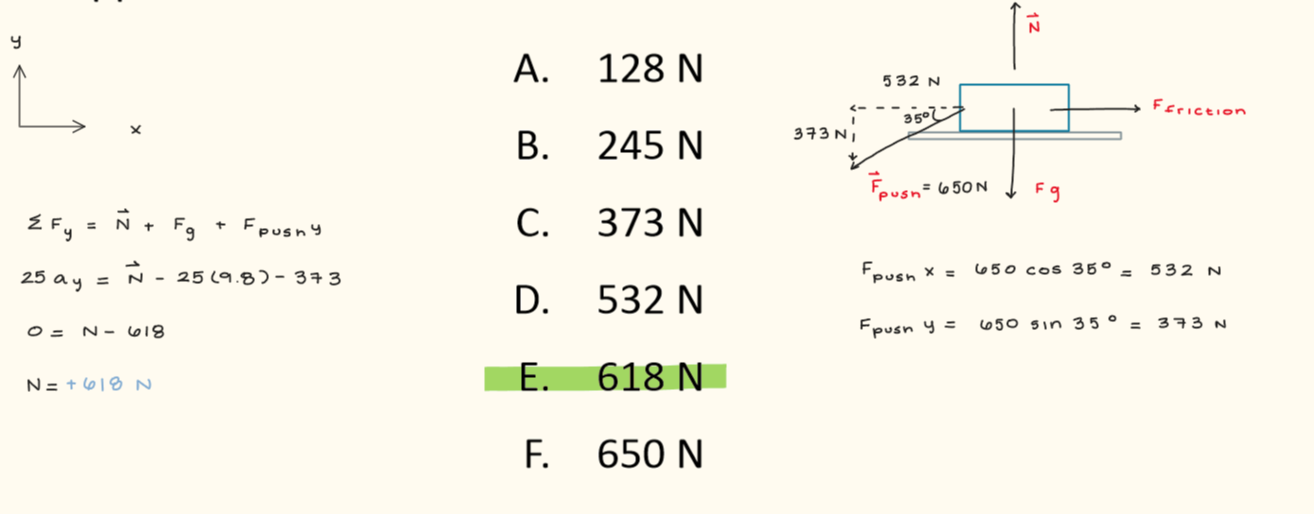
A 60 kg person stands on a bathroom scale while in an elevator. At one instant, the elevator is accelerating down at 2 m/s².
At the instant, when the elevator is accelerating down at 2 m/s², what is the reading on the scale?
468 N
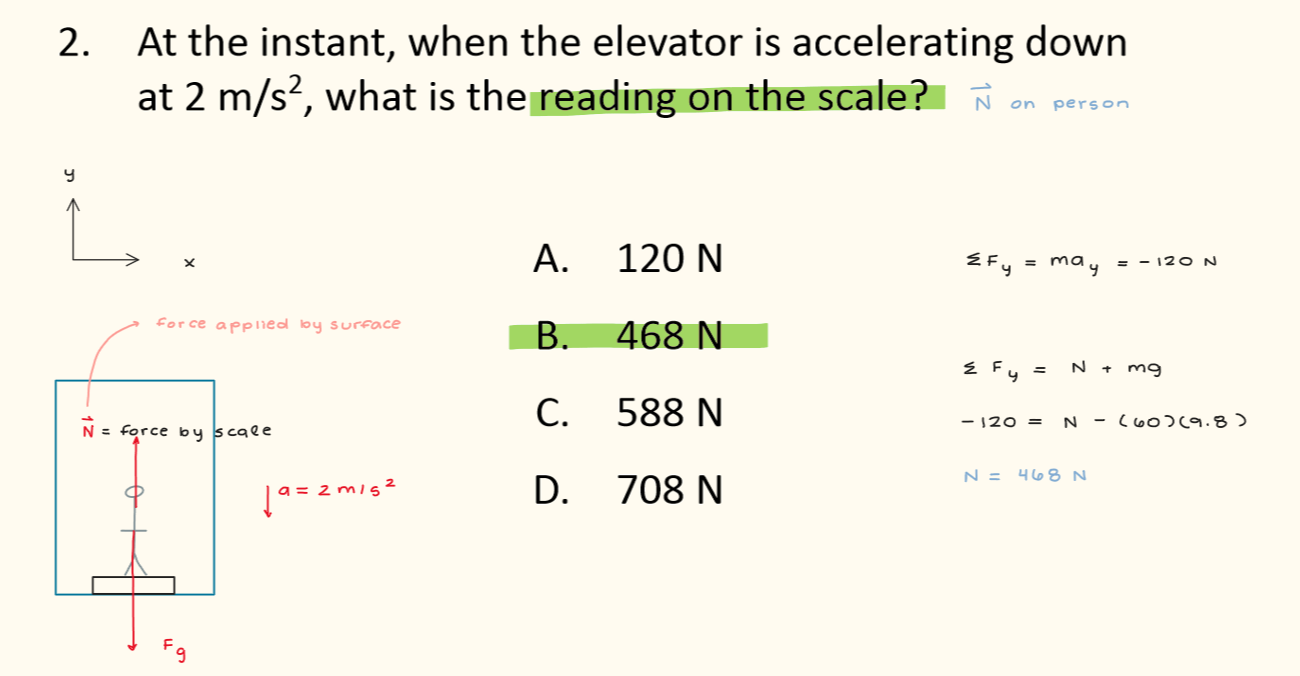
A 60 kg person slides down a water slide that has an angle of 30° below the horizontal. The water slide can be treated like a frictionless surface.
What is the normal force on the person?
What is the magnitude of the person’s acceleration?
509 N
4.90 m/s²
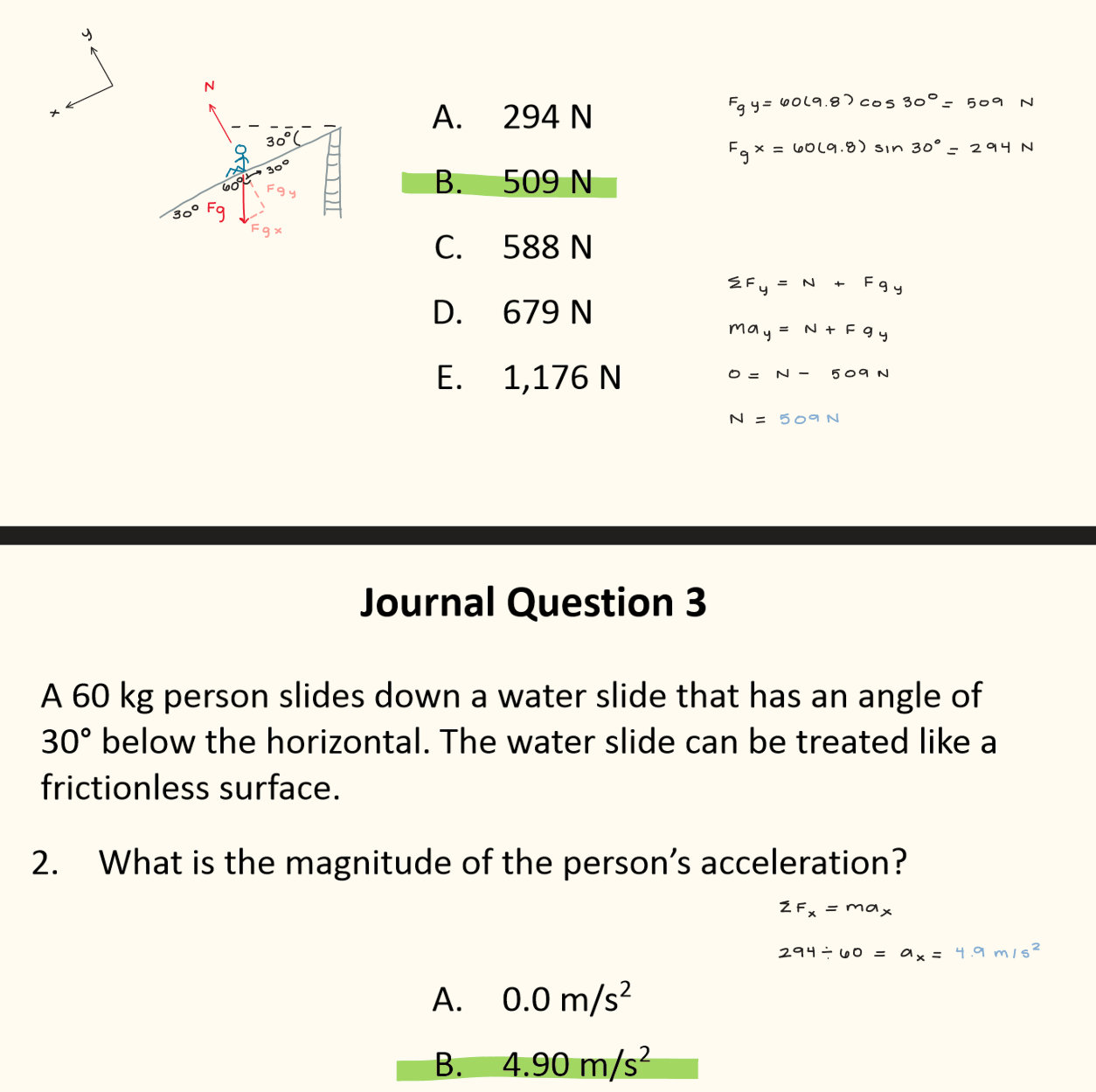
A skier speeds down a smooth ski slope which is at an angle of 𝜃 = 20° with the horizontal. The mass of the skier is 59 kg. Take the downhill direction to be positive and uphill to be negative.
What net force (in N) is acting on the skier? (Indicate the direction with the sign of your answer.)
What is the acceleration (in m/s2) experienced by the skier? (Indicate the direction with the sign of your answer.)
How does the net force experienced by the skier change if the ski slope becomes steeper?
198 N
3.35 m/s²
increases
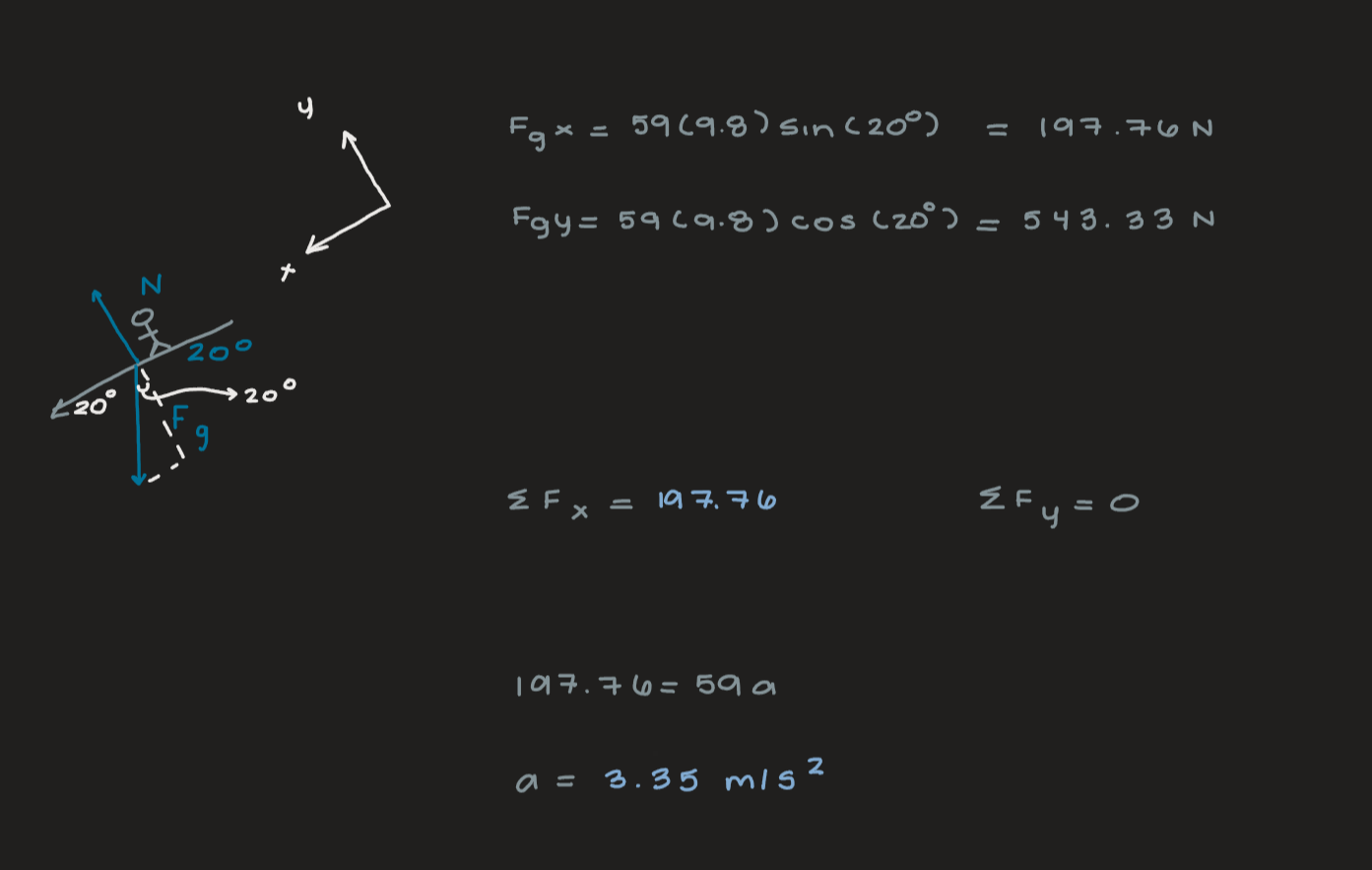
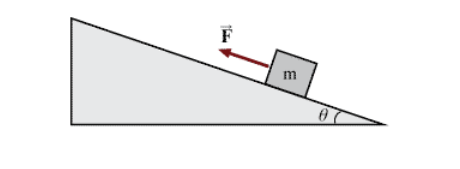
The block in the figure below has a mass of 5.6 kg and it rests on an incline of angle 𝜃. You then push on the block with a force of F = 34 N, directed up the slope as shown. Assume the incline is smooth and determine the angle of the incline if the block moves with constant speed.
38.3°

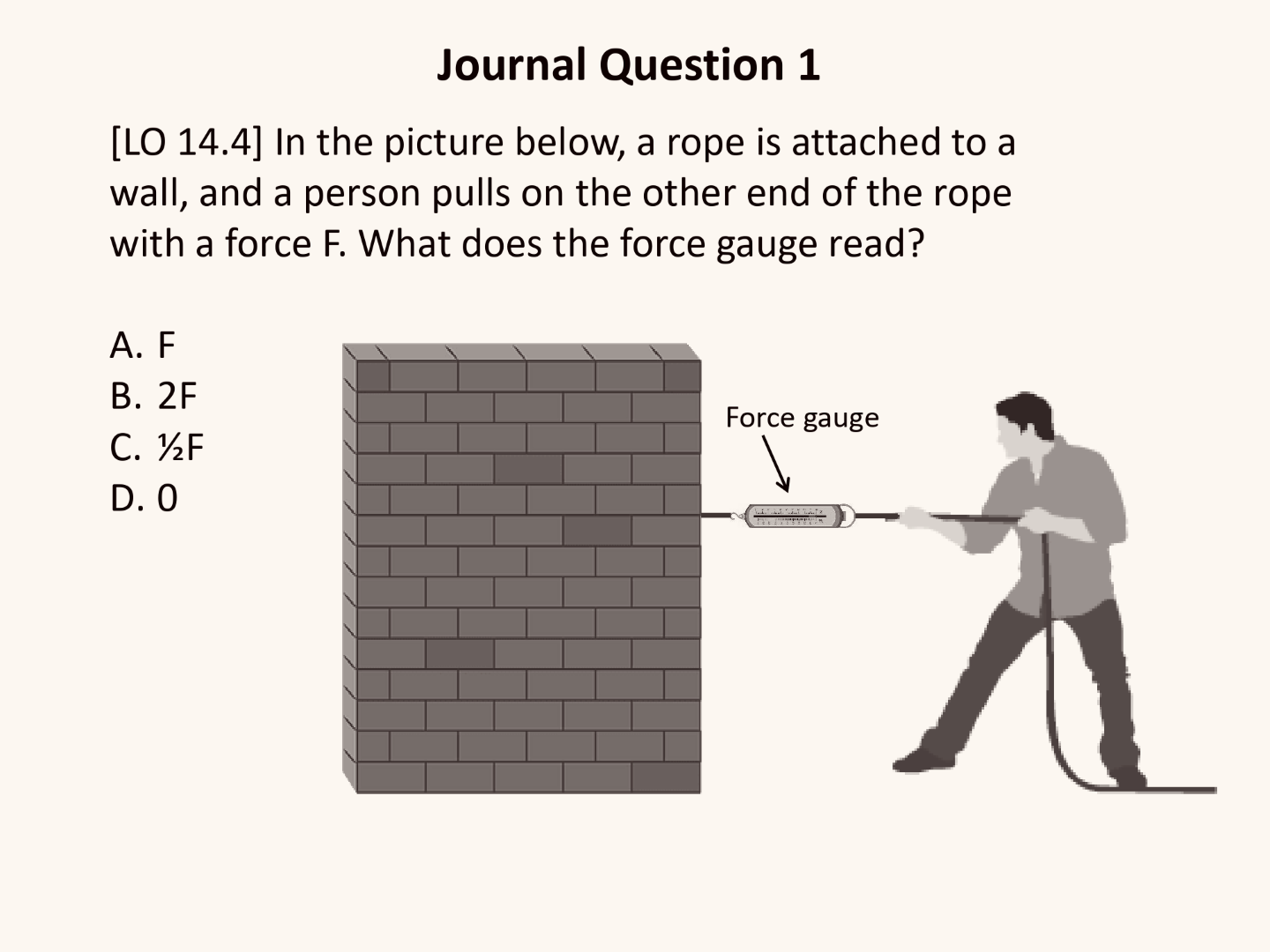
F

300 lbs
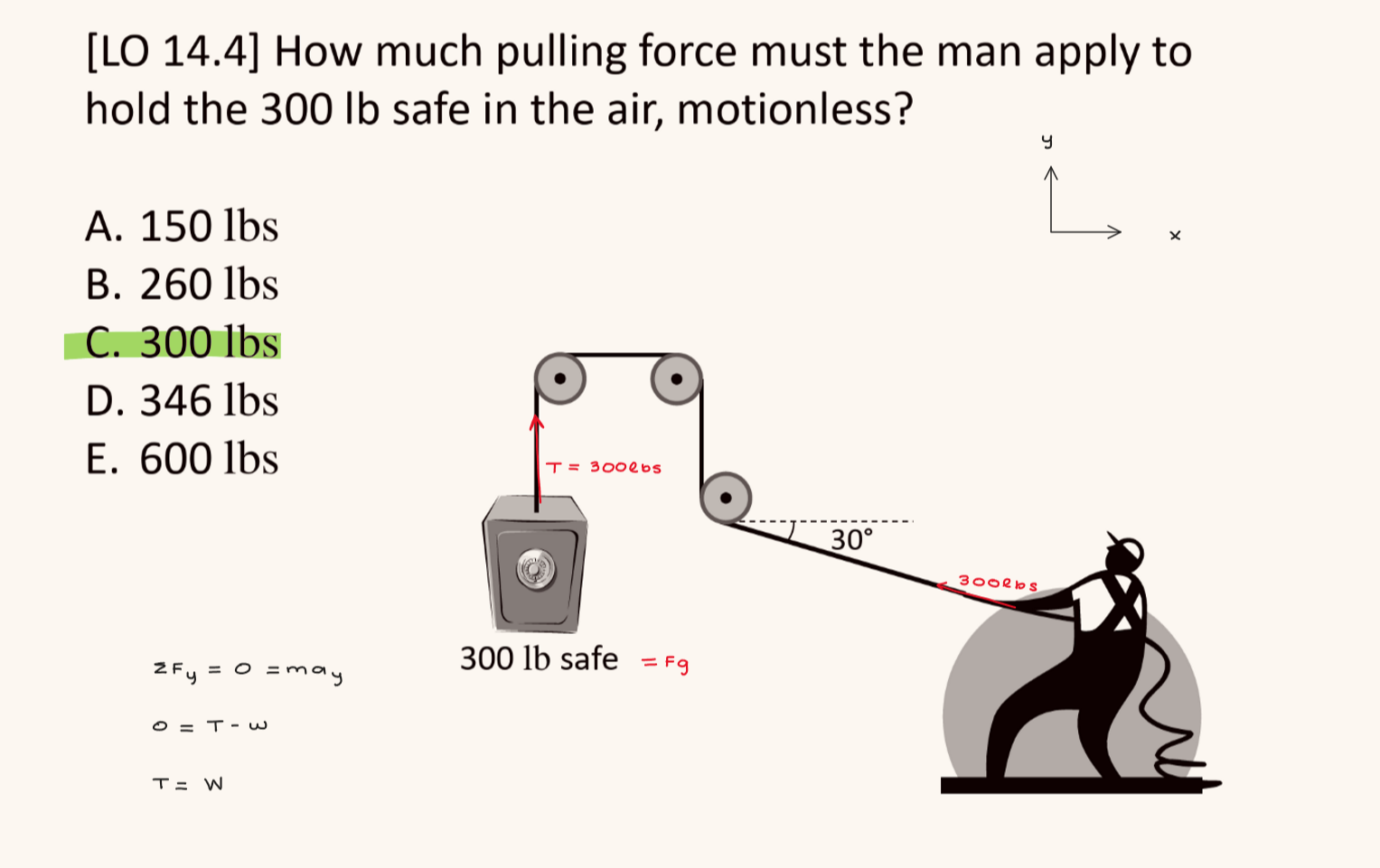
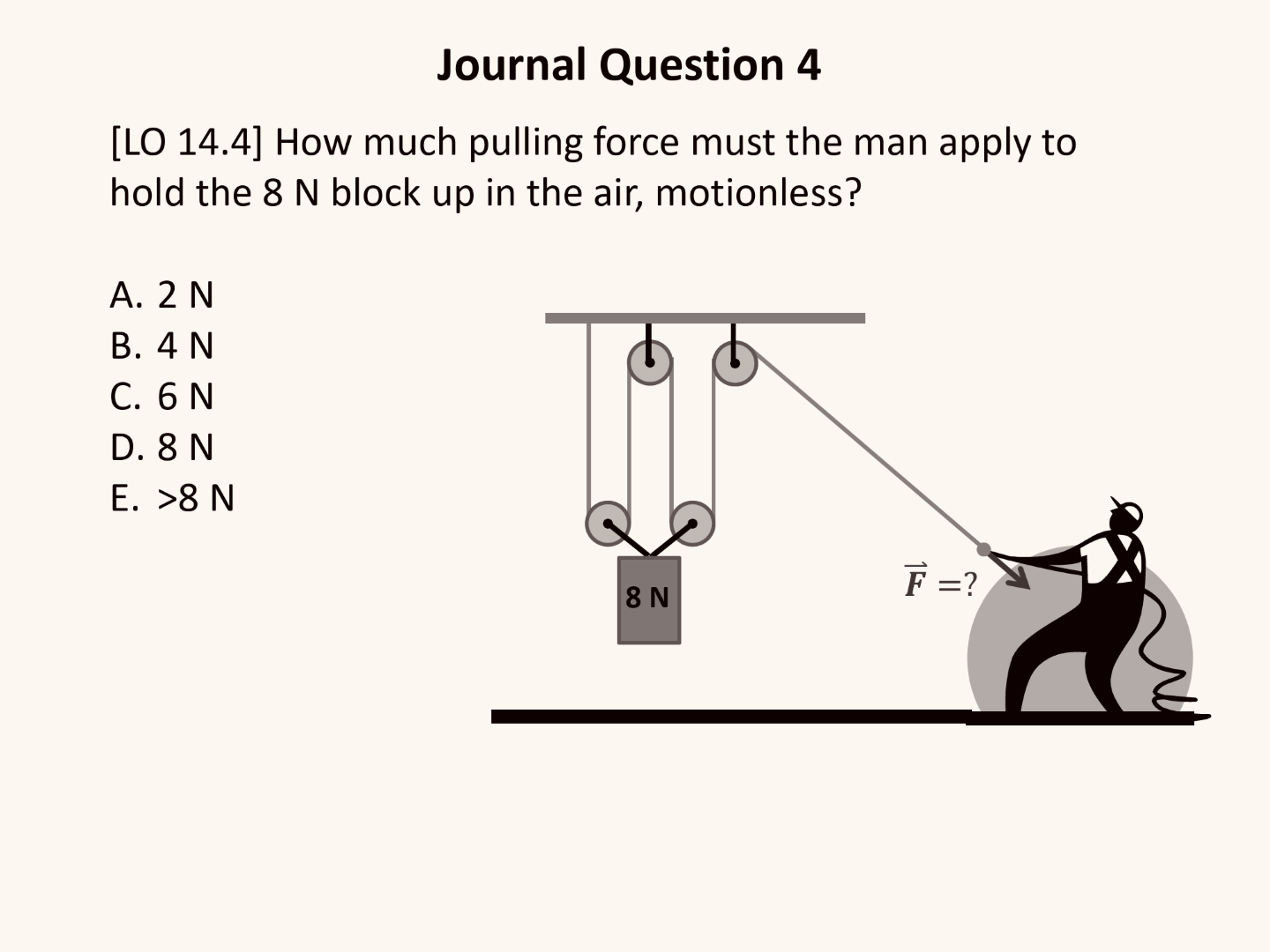
2 N
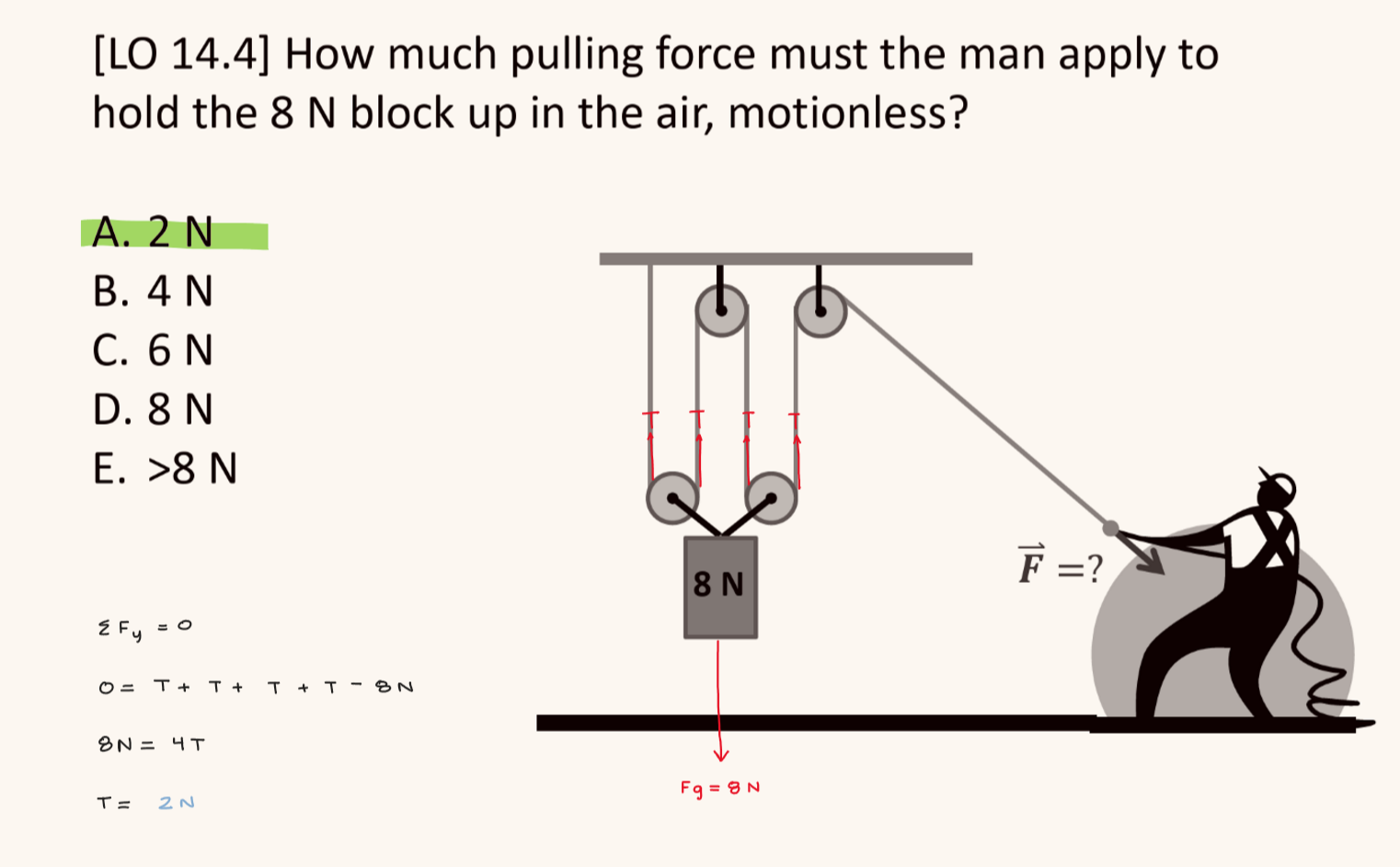
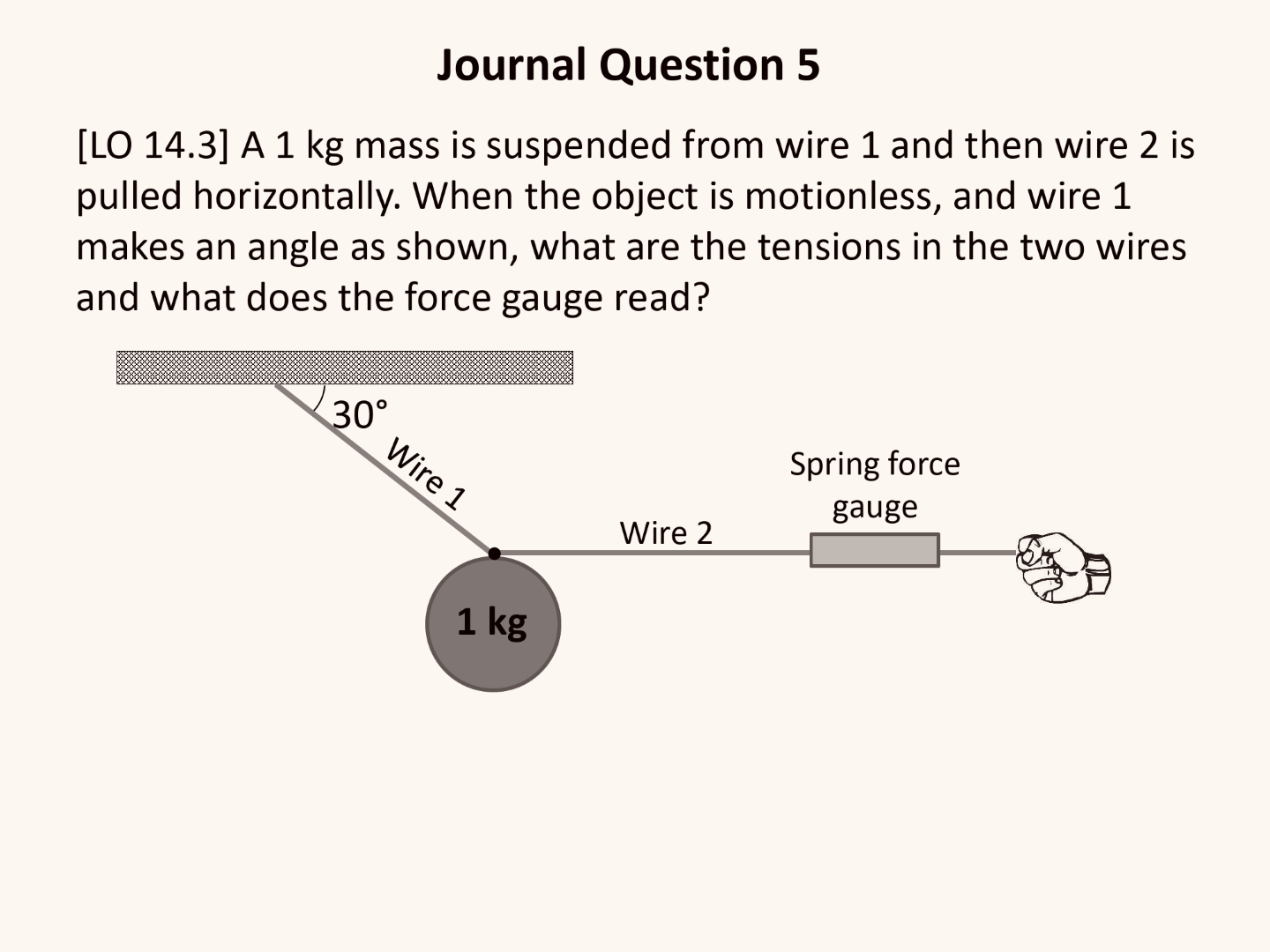
T1 = 19.6 N
T2 = 17 N

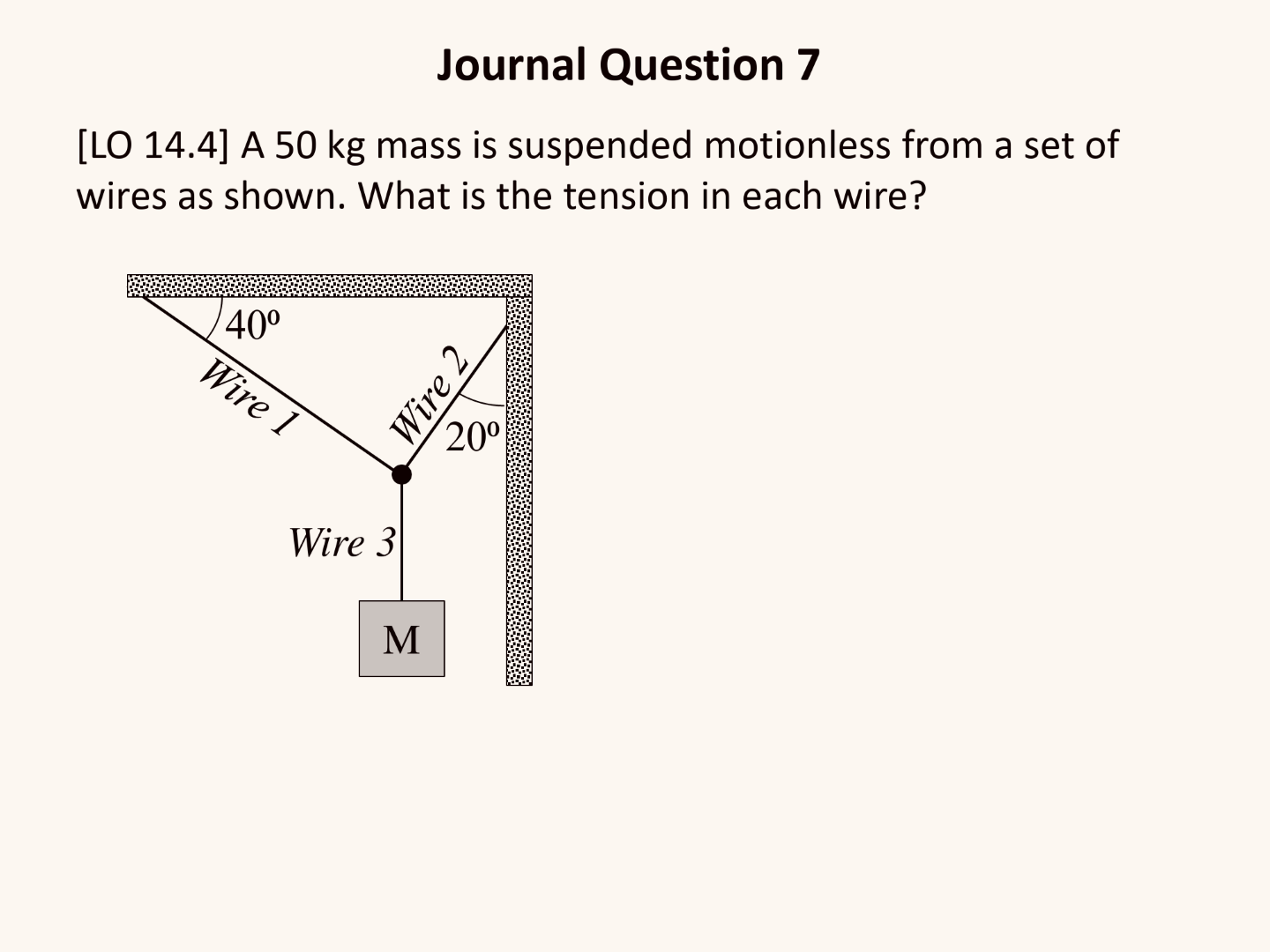
T1 = 178 N
T2 = 399 N
T3 = 490 N
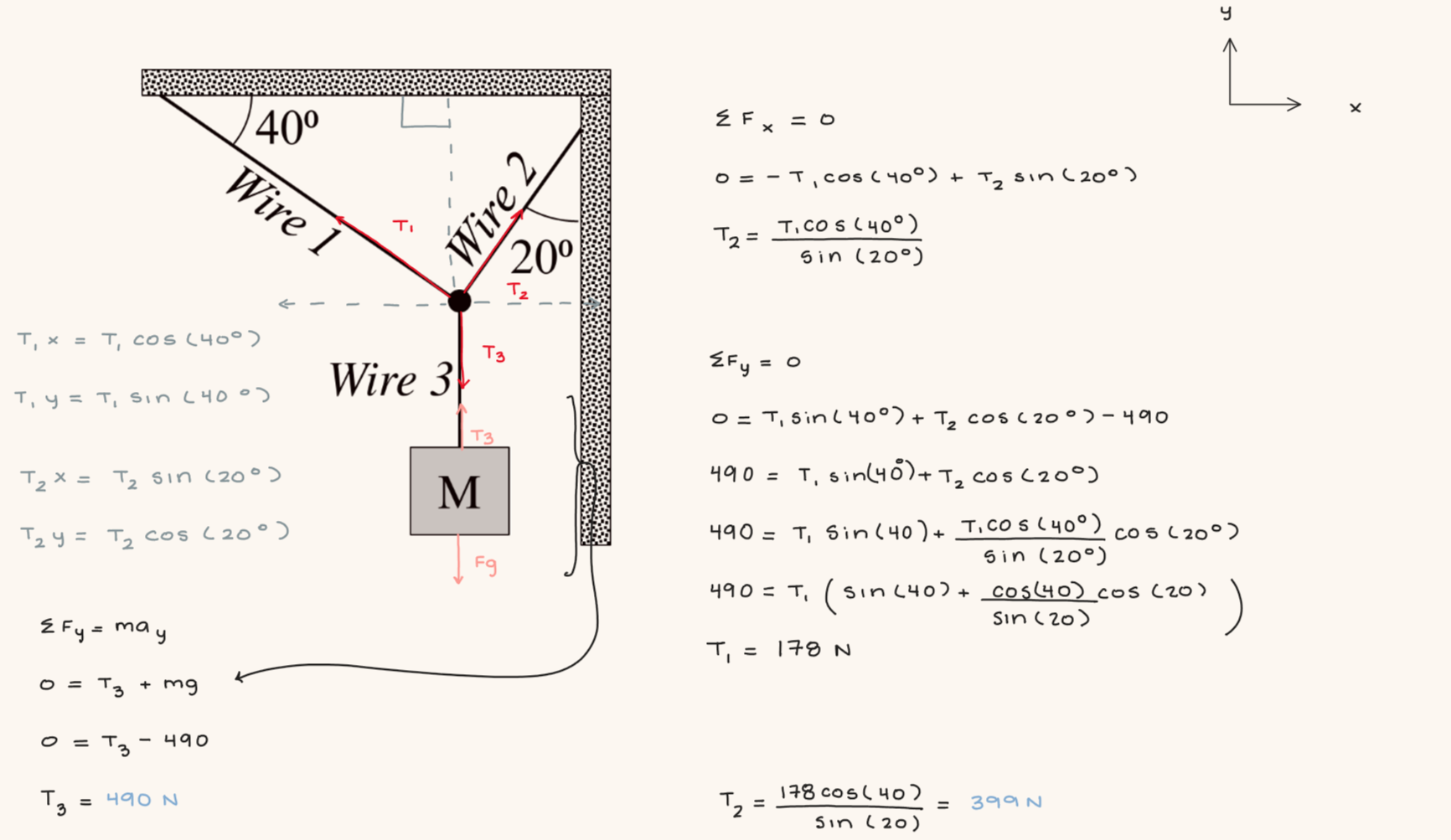
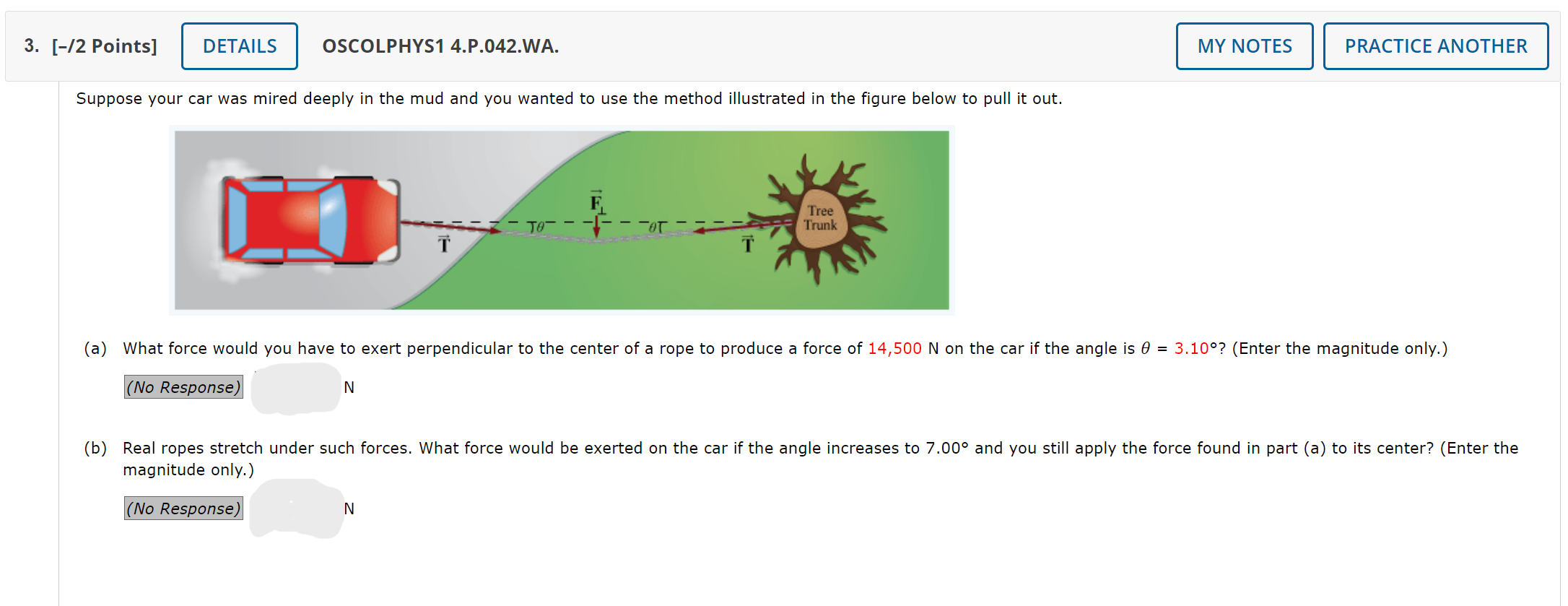
a) 1570 N
b) 6434 N
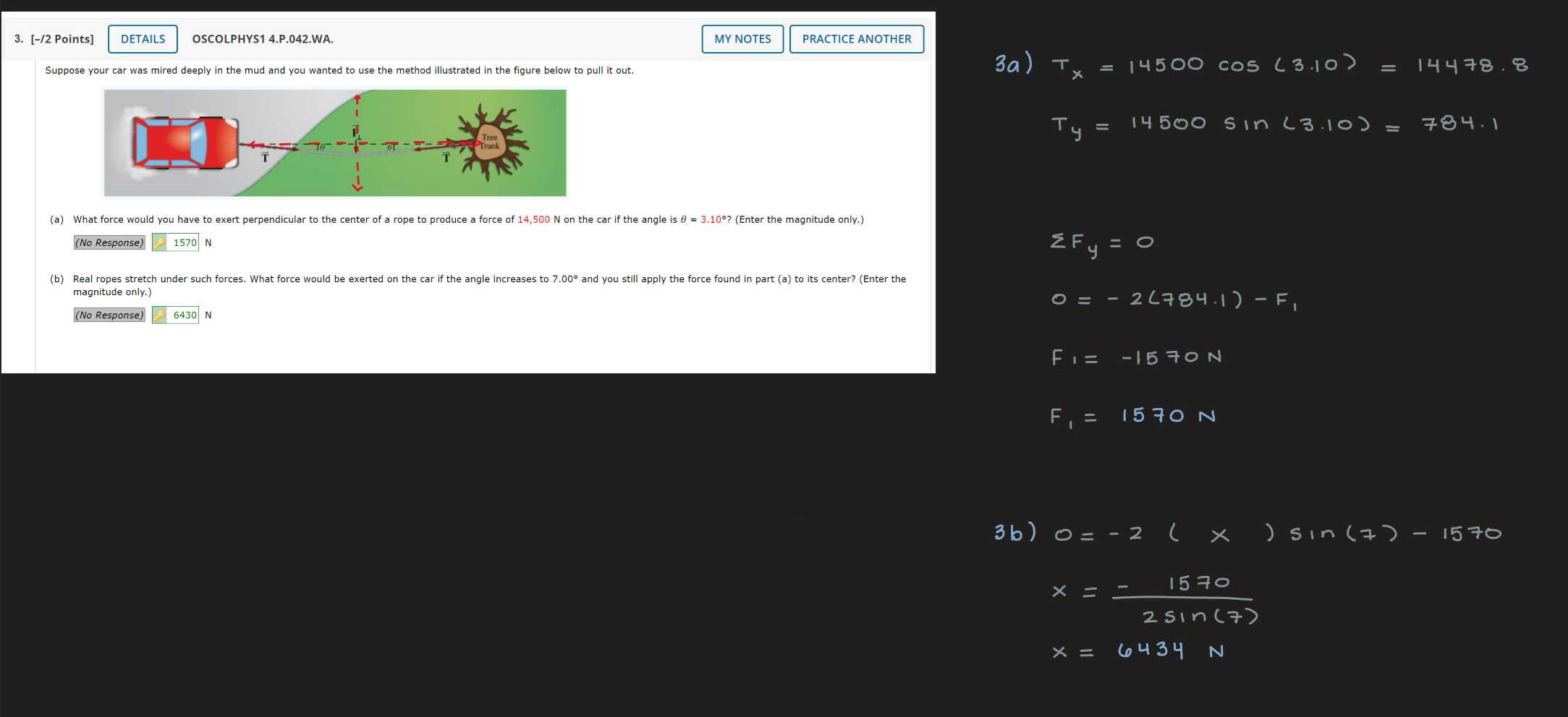

59 N
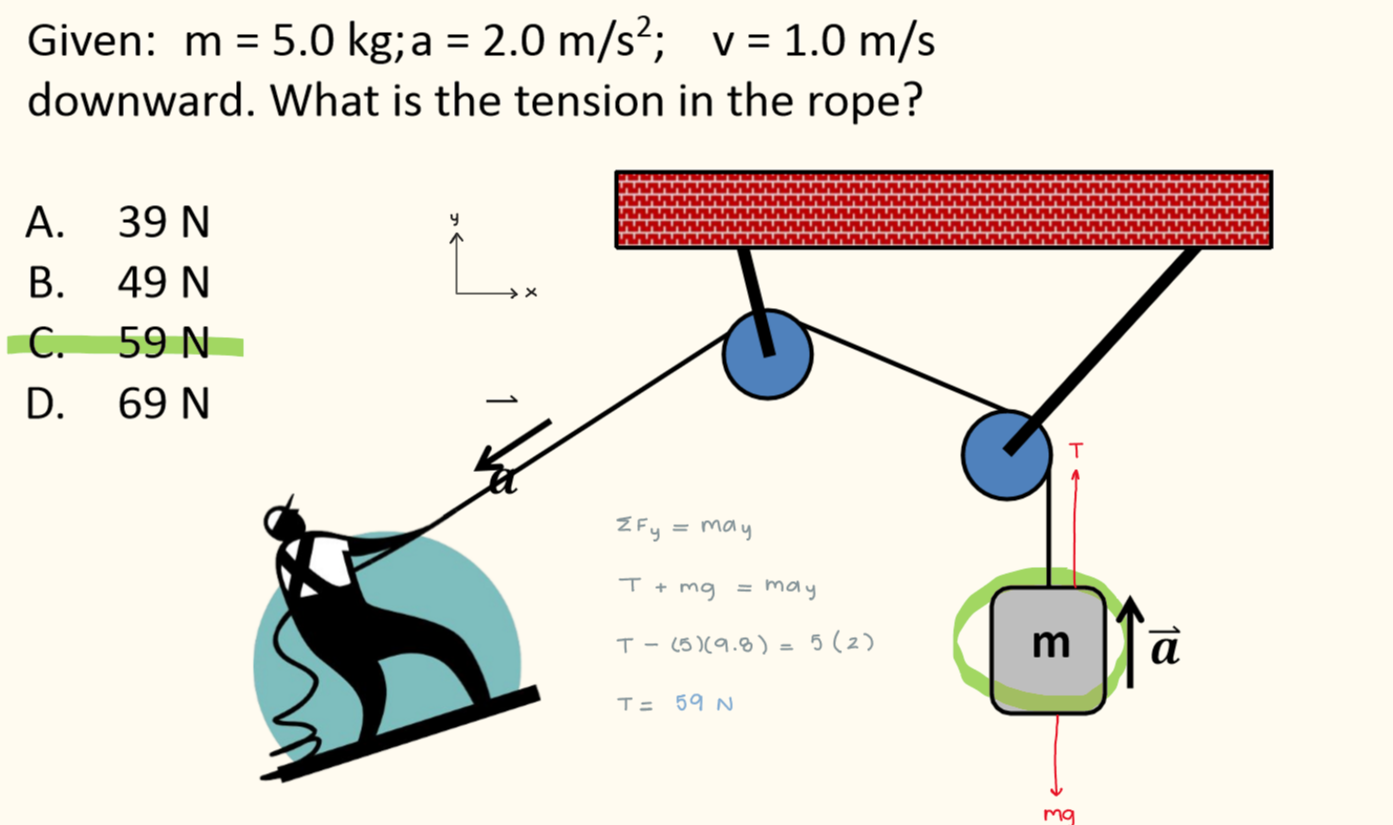
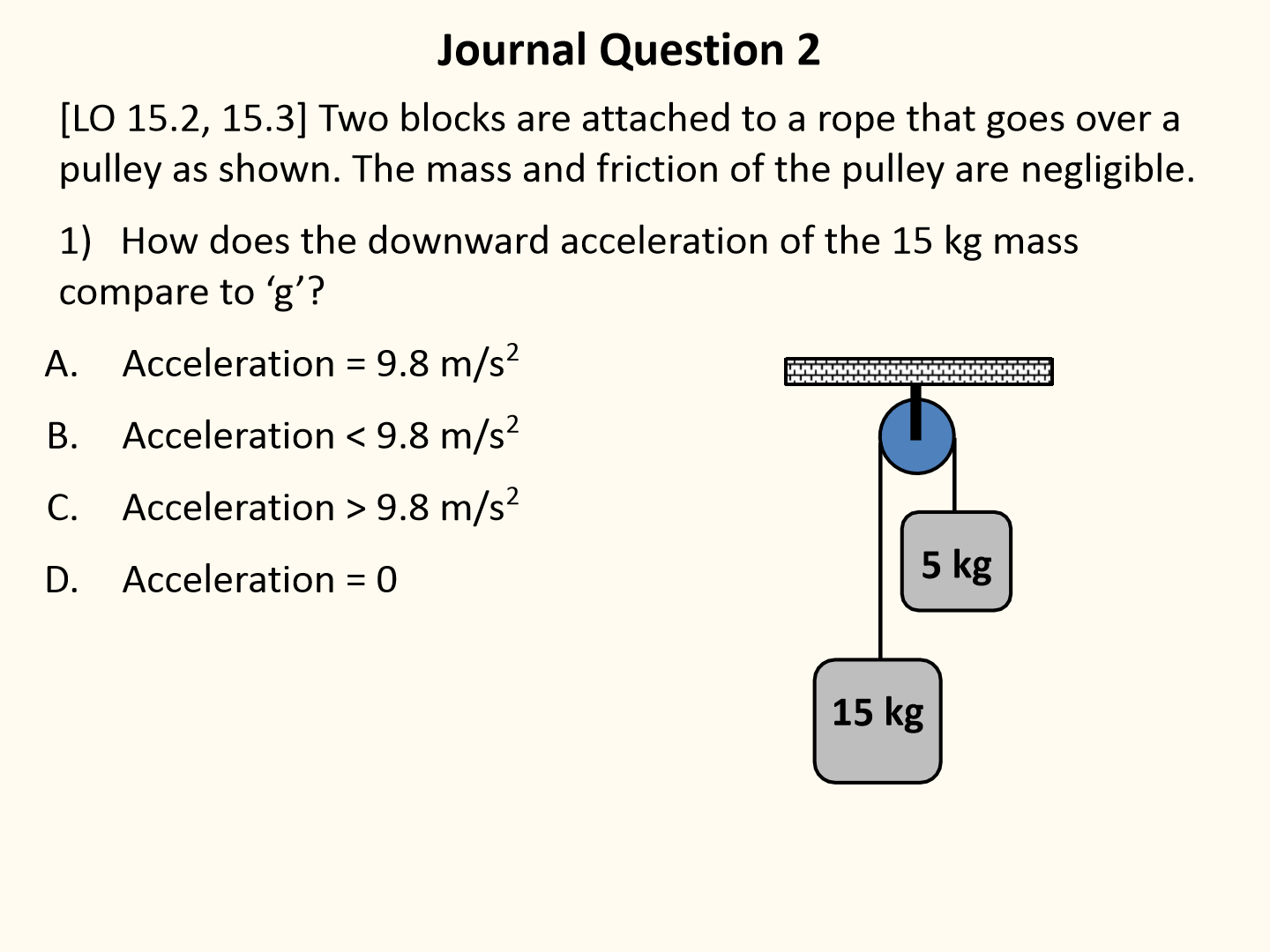
acceleration < 9.8 m/s²
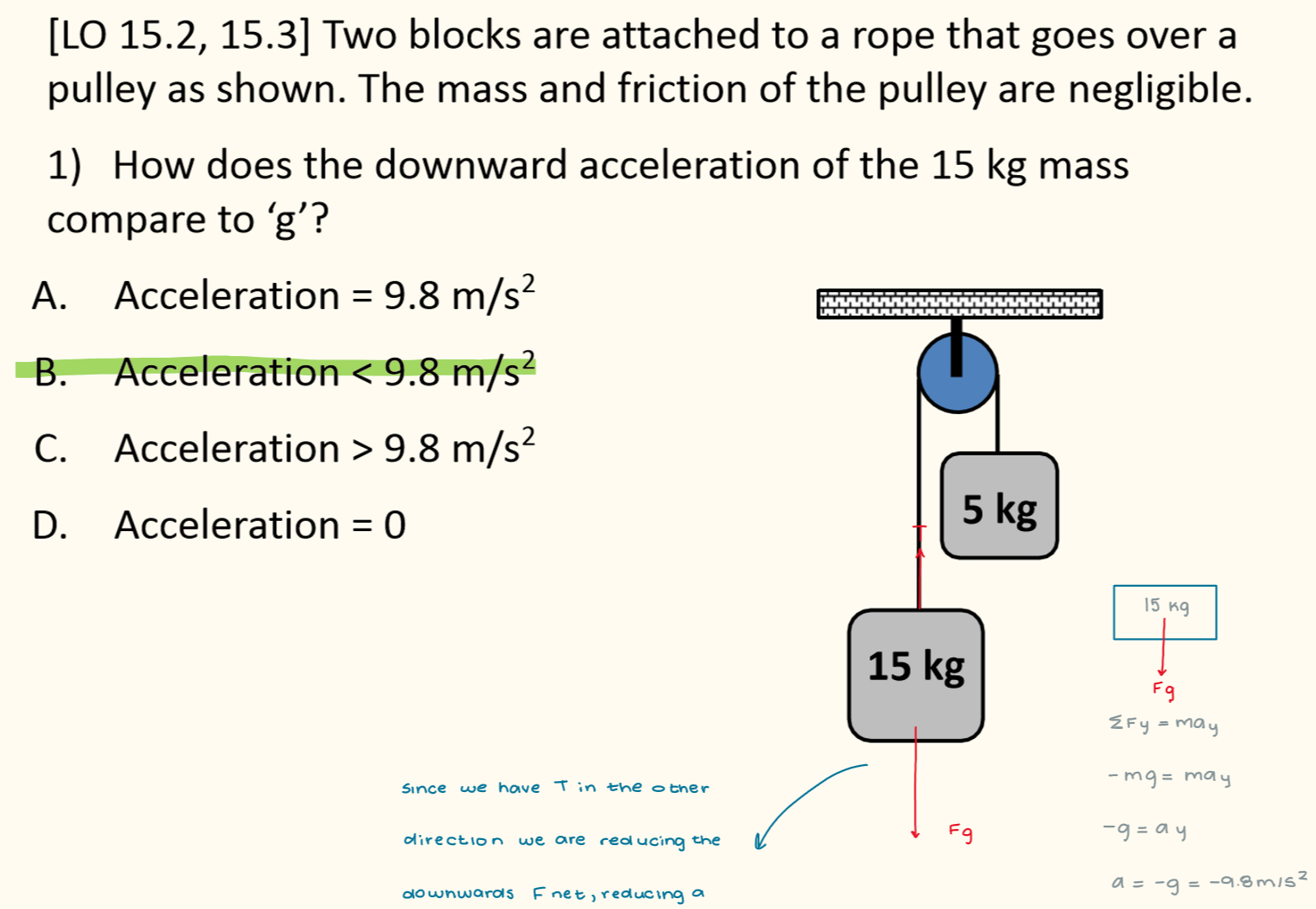

acceleration = 4.9 m/s²
T = 73.5 N
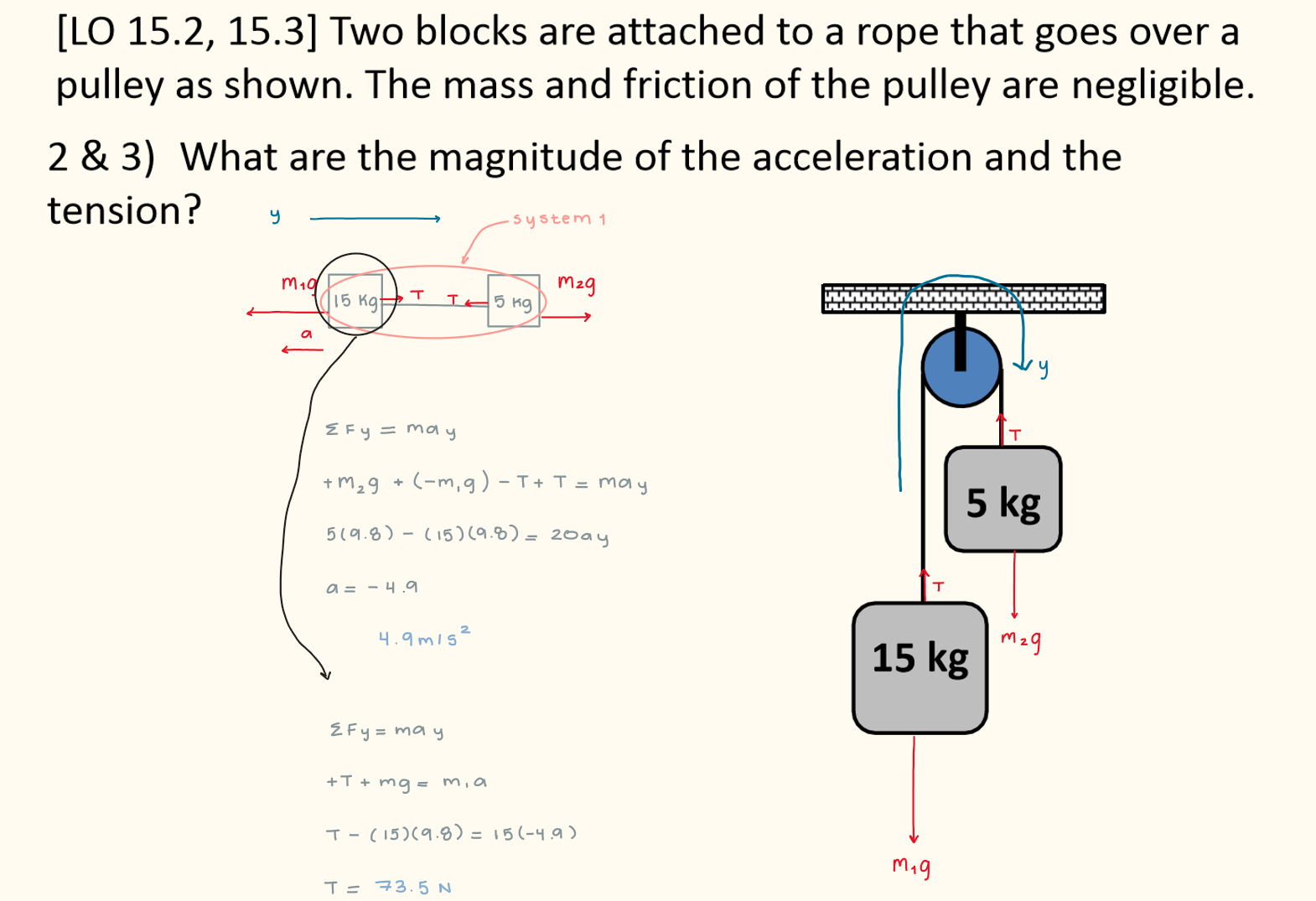

acceleration = 3.27 m/s²
T = 32.7 N
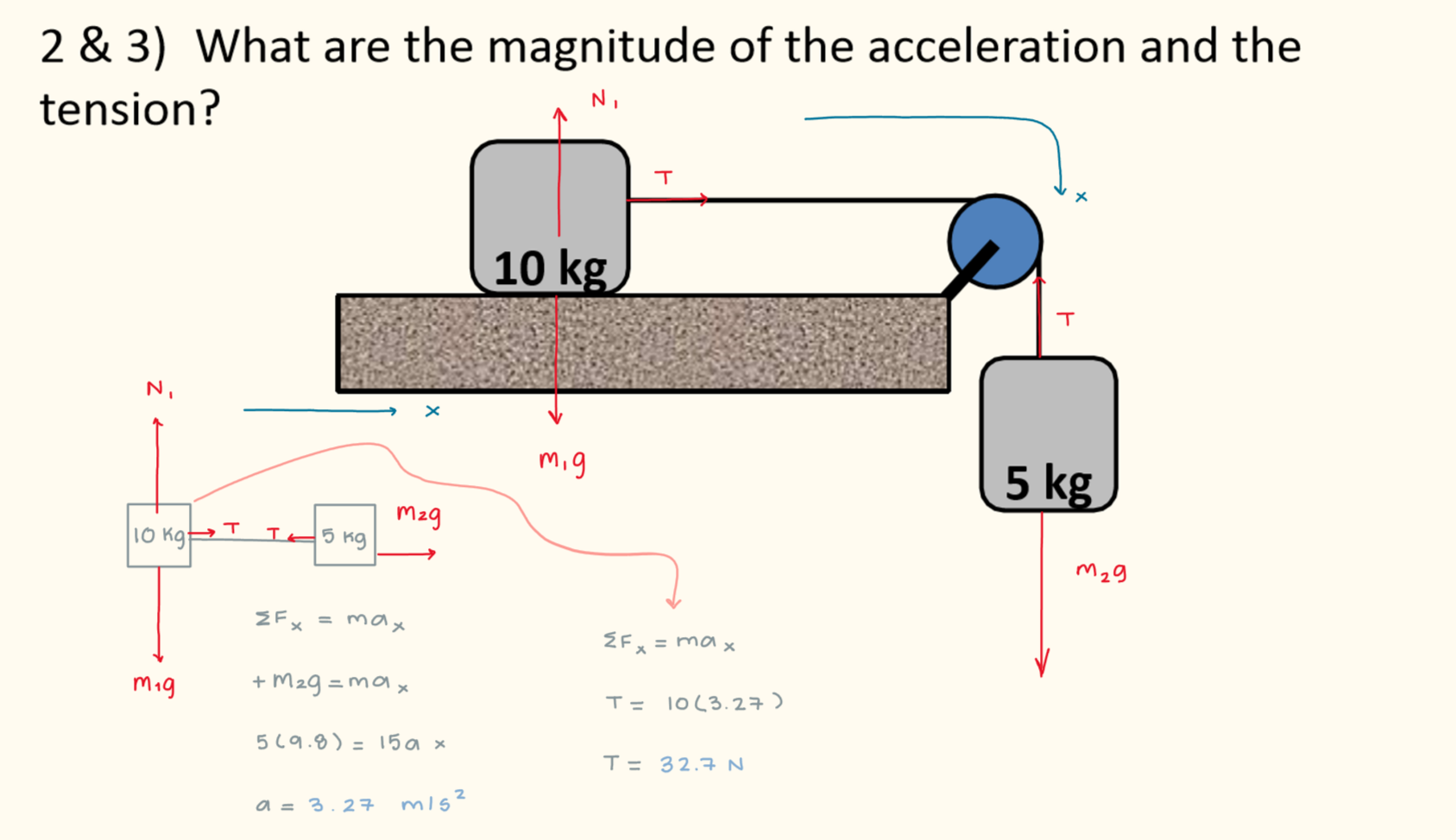
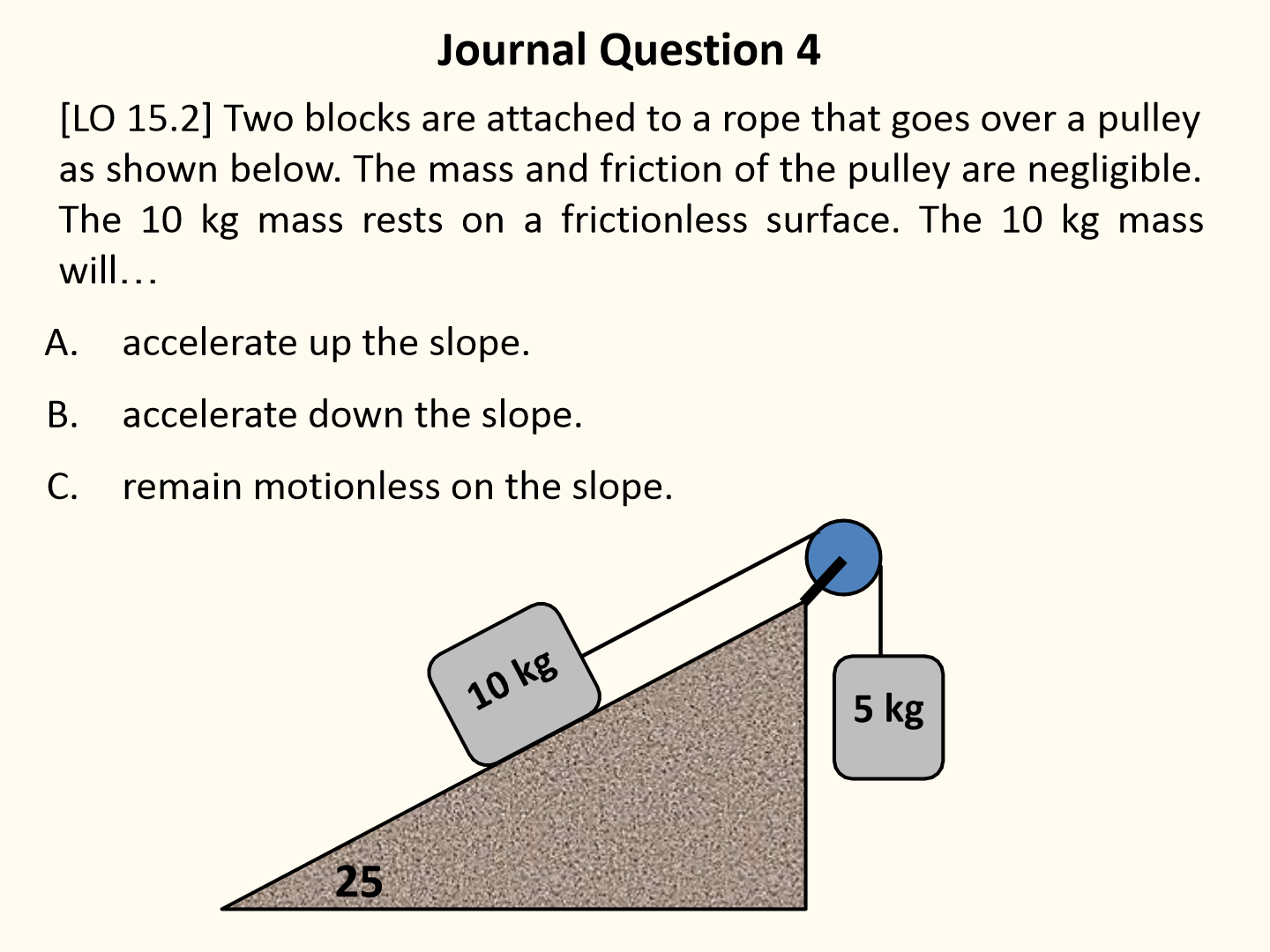
accelerate up the slope
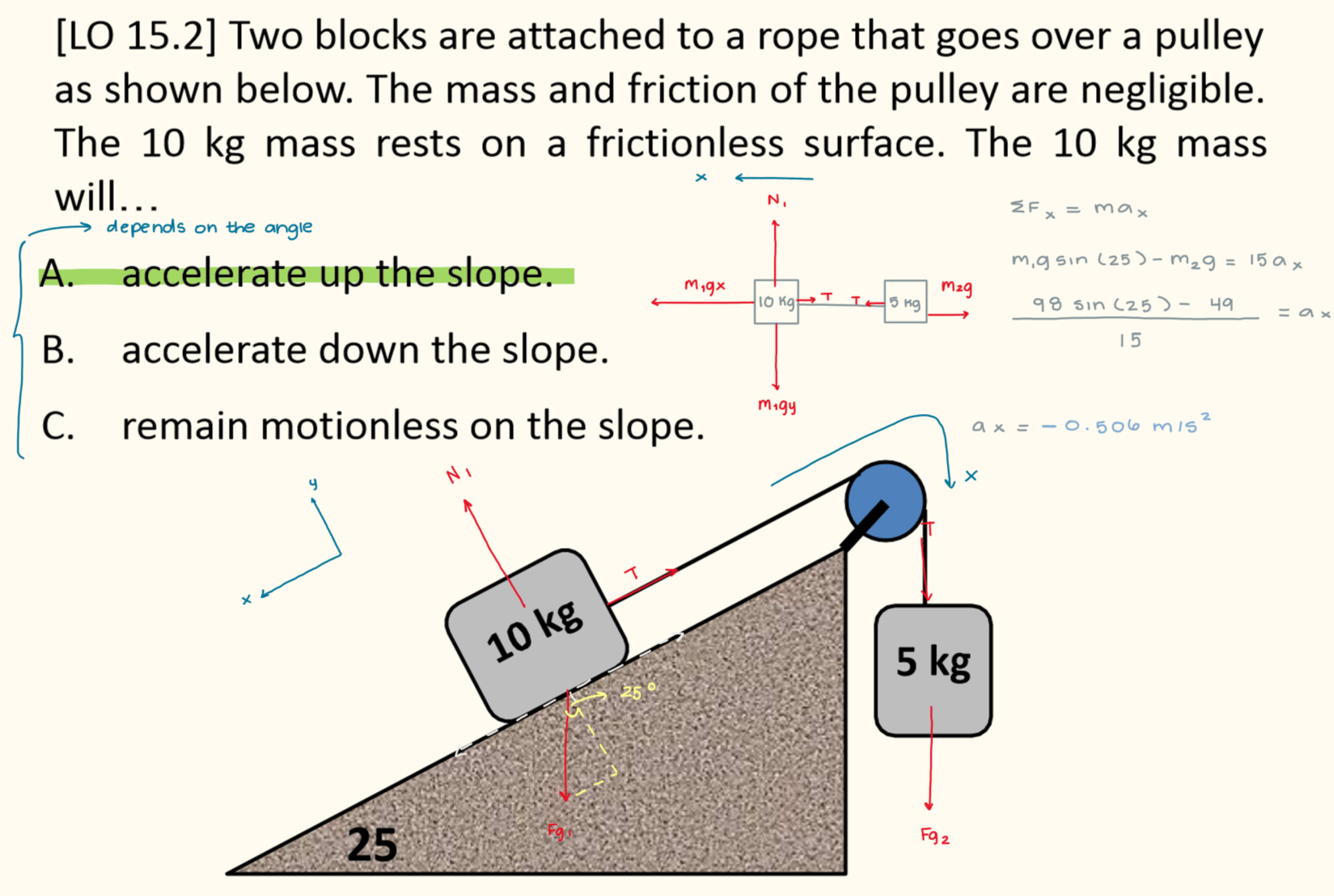
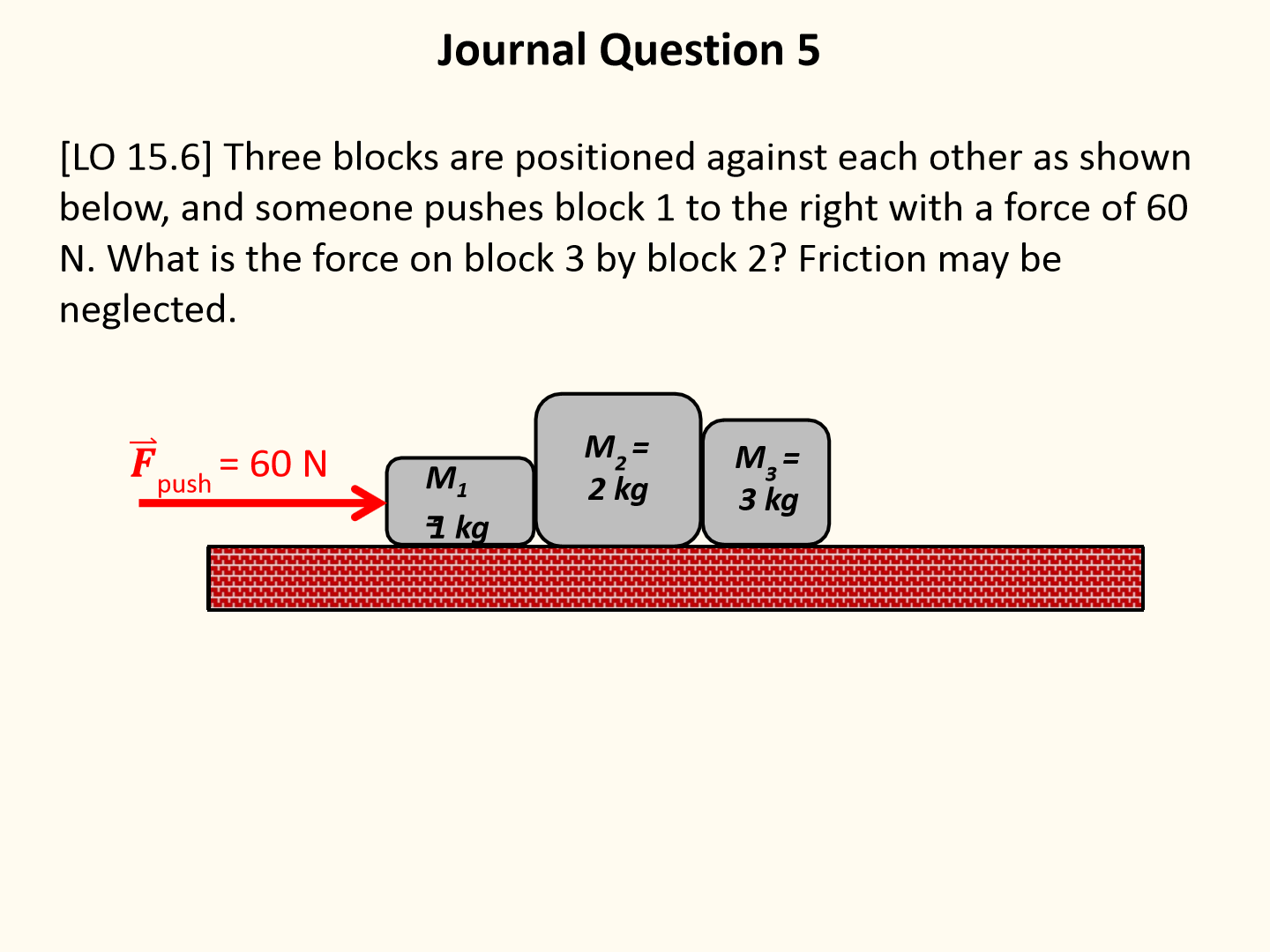
30 N
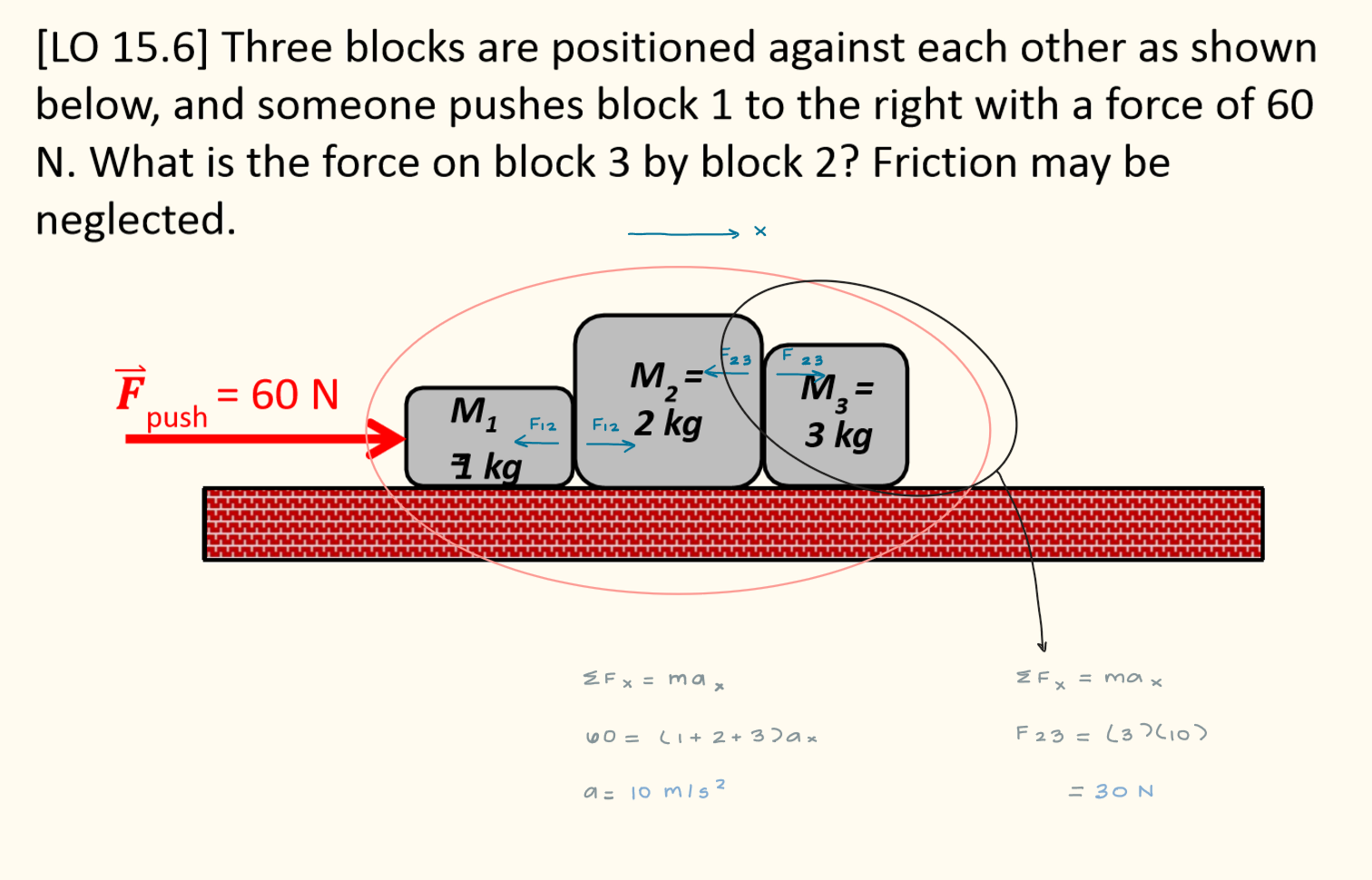

3.23 N
1.14 N
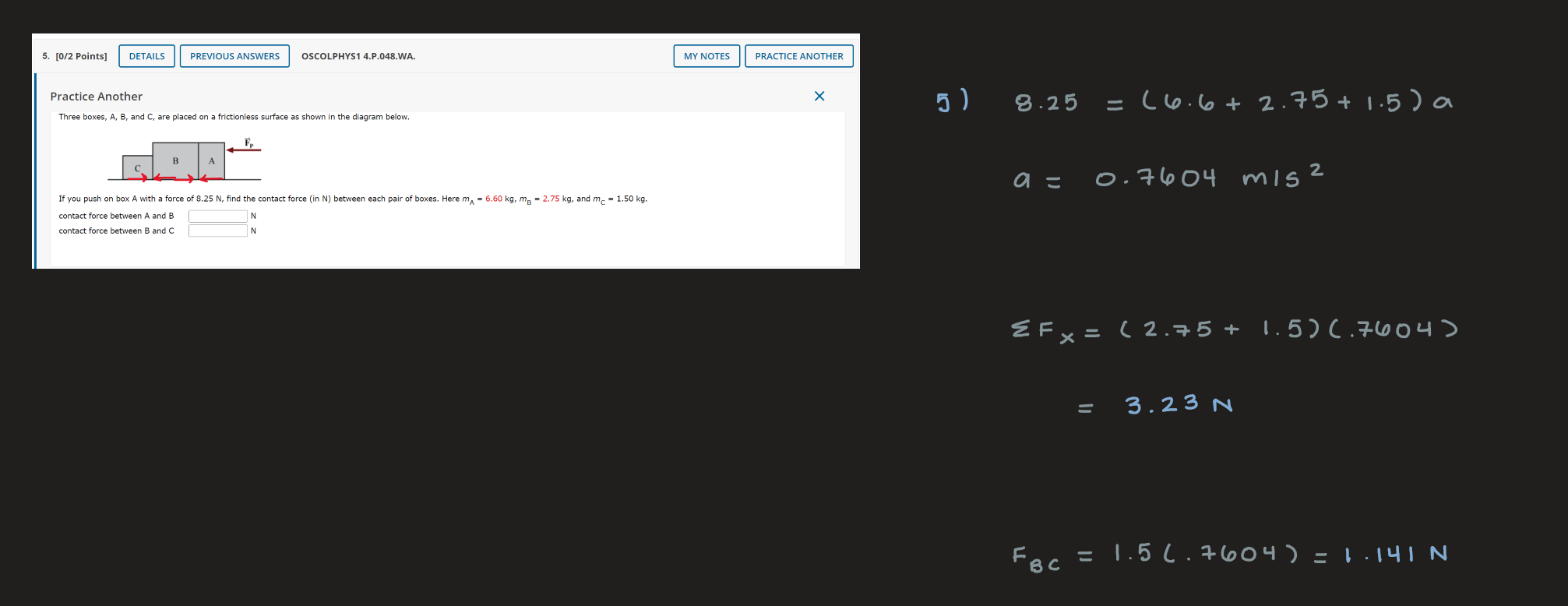

A 5 kg block is placed initially motionless on a horizontal table. The coefficient of static friction is 0.7, and the coefficient of kinetic friction is 0.4.The block is then pushed horizontally with a force of 20 N.
What is the acceleration of the block?
What is the static friction force on the block?
If the pushing force is increased to 40 N, what is the acceleration of the block?
0 m/s²
20 N
4.08 m/s²
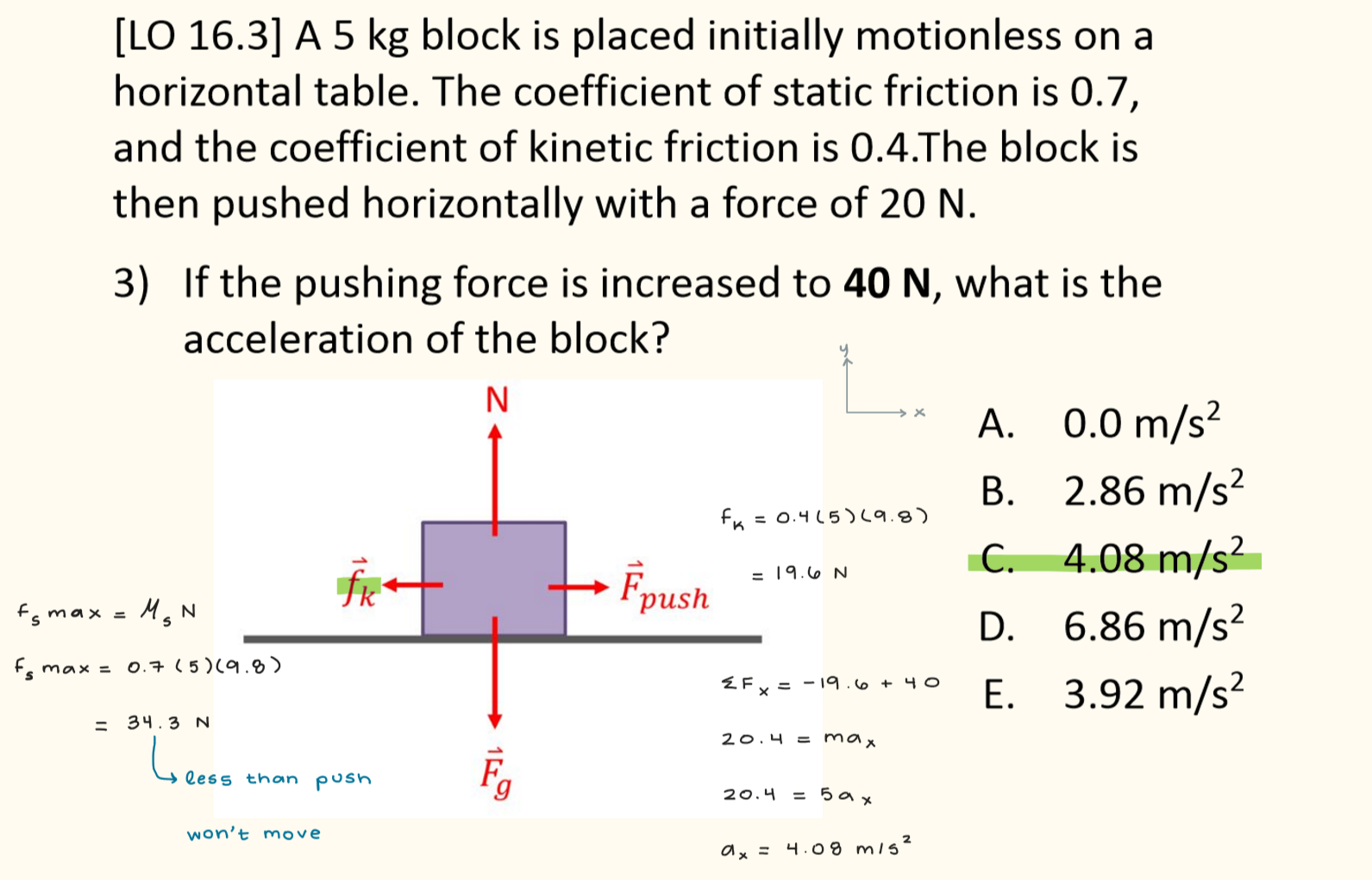
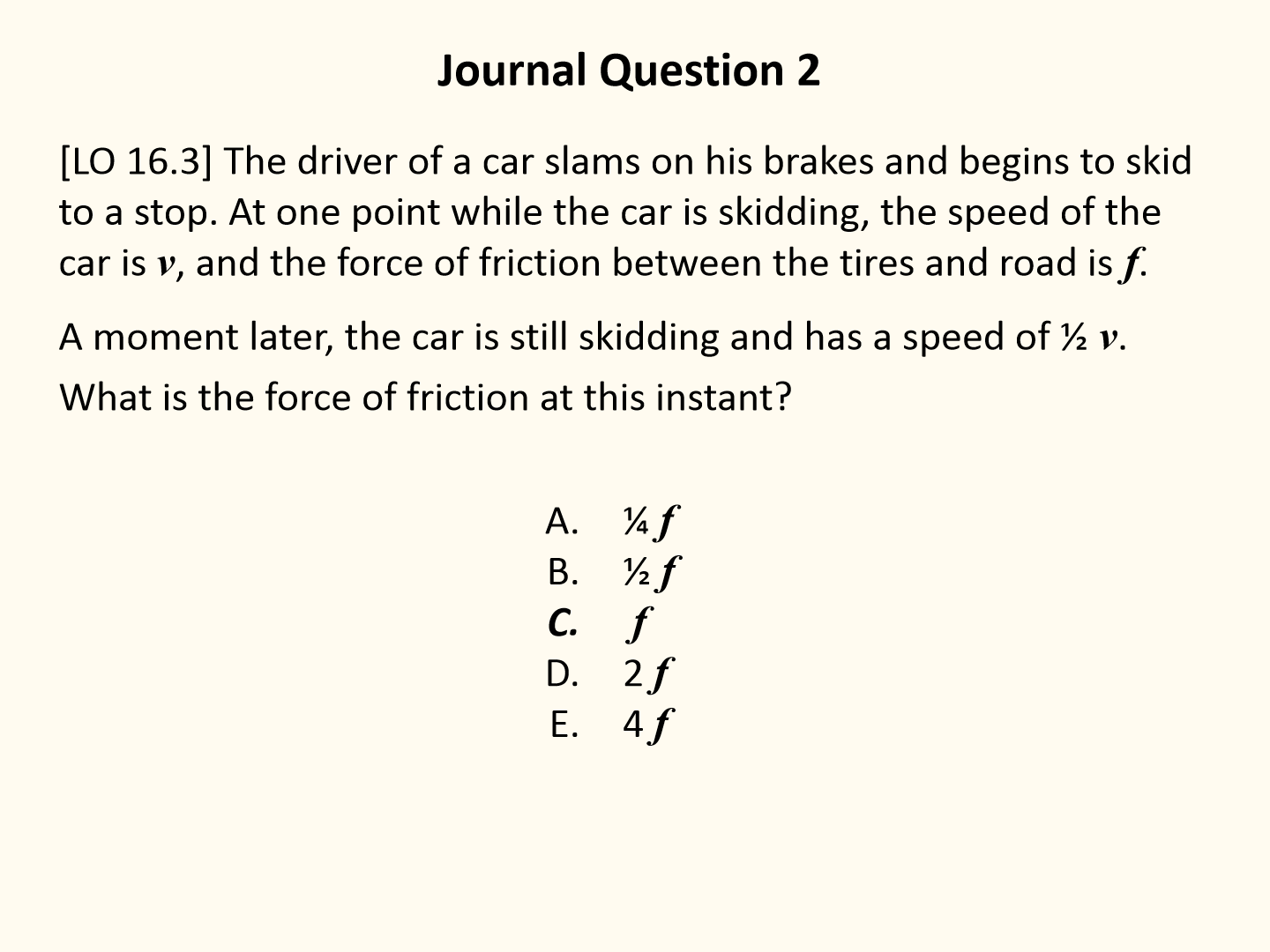
f
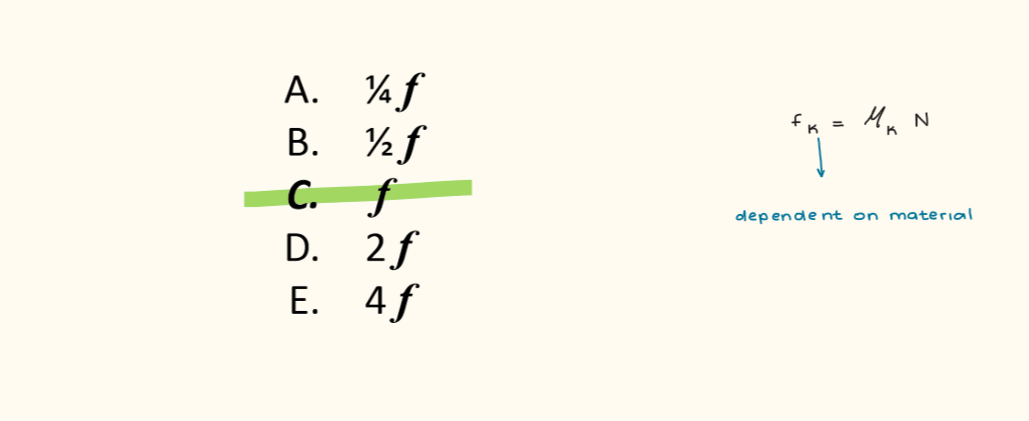

=
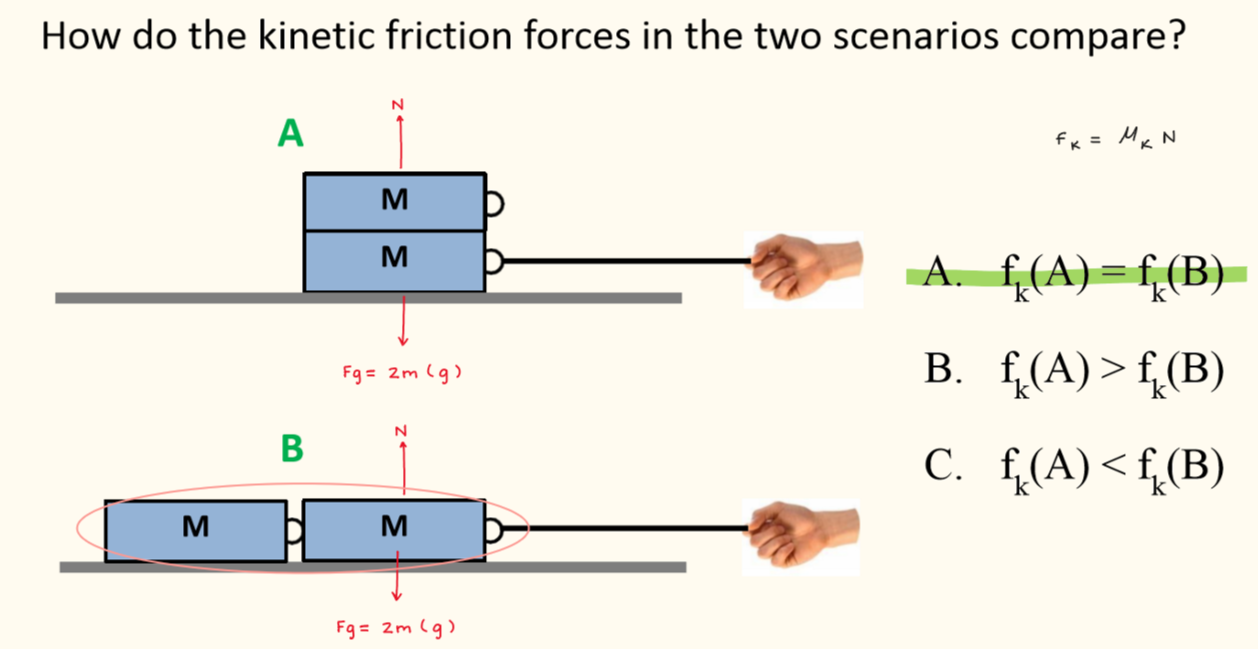

A 0.9 kg block is placed motionless on a board. The coefficient of static friction is 0.64, and the coefficient of kinetic friction is 0.35.
One end of the board is then lifted so that the board makes an angle of 15° with the horizontal. Will the block start to slide?
If the end of the board is then lifted farther, what is the maximum angle that the board can make with the horizontal before the block starts to slide?
No
32.6°
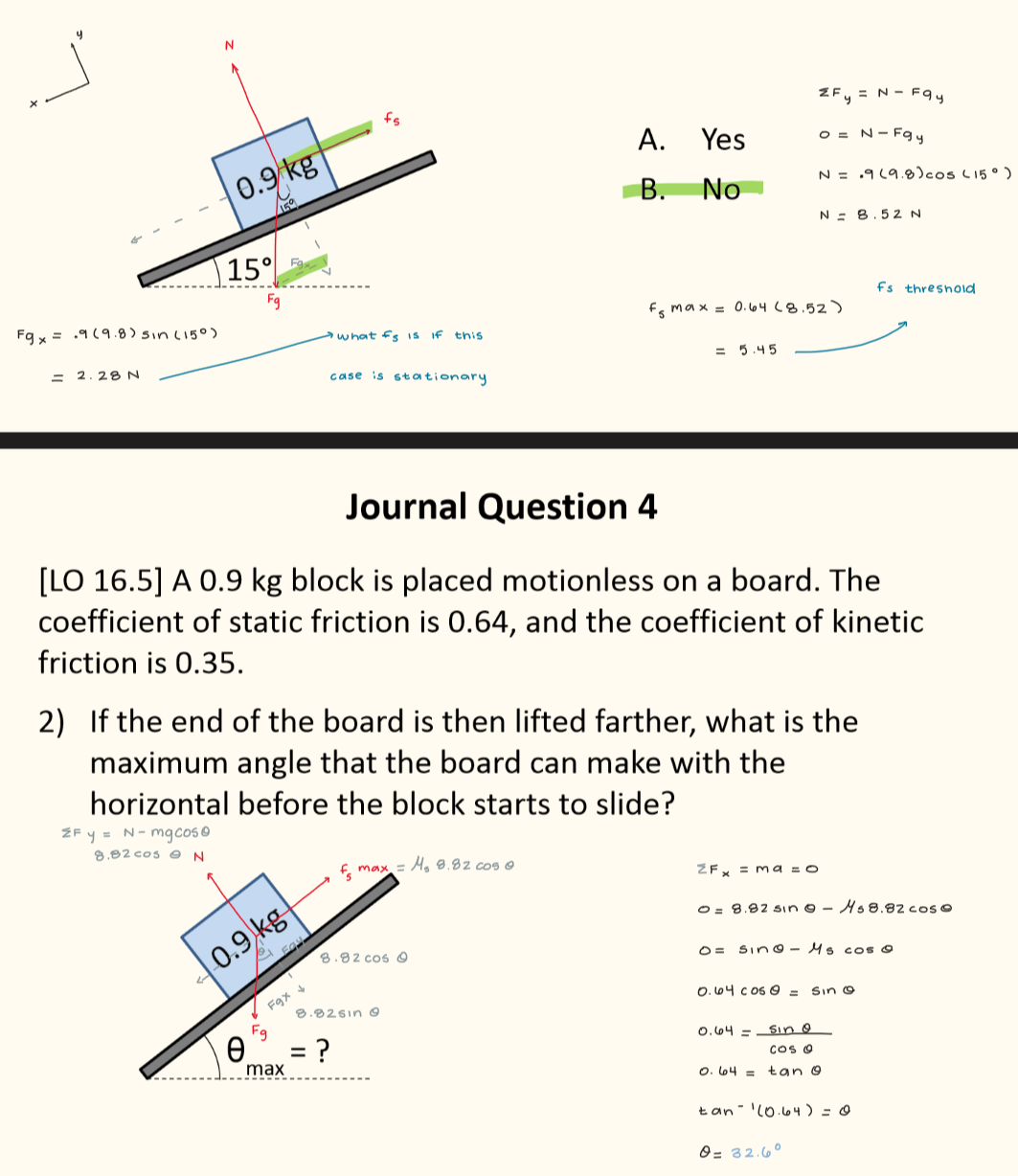
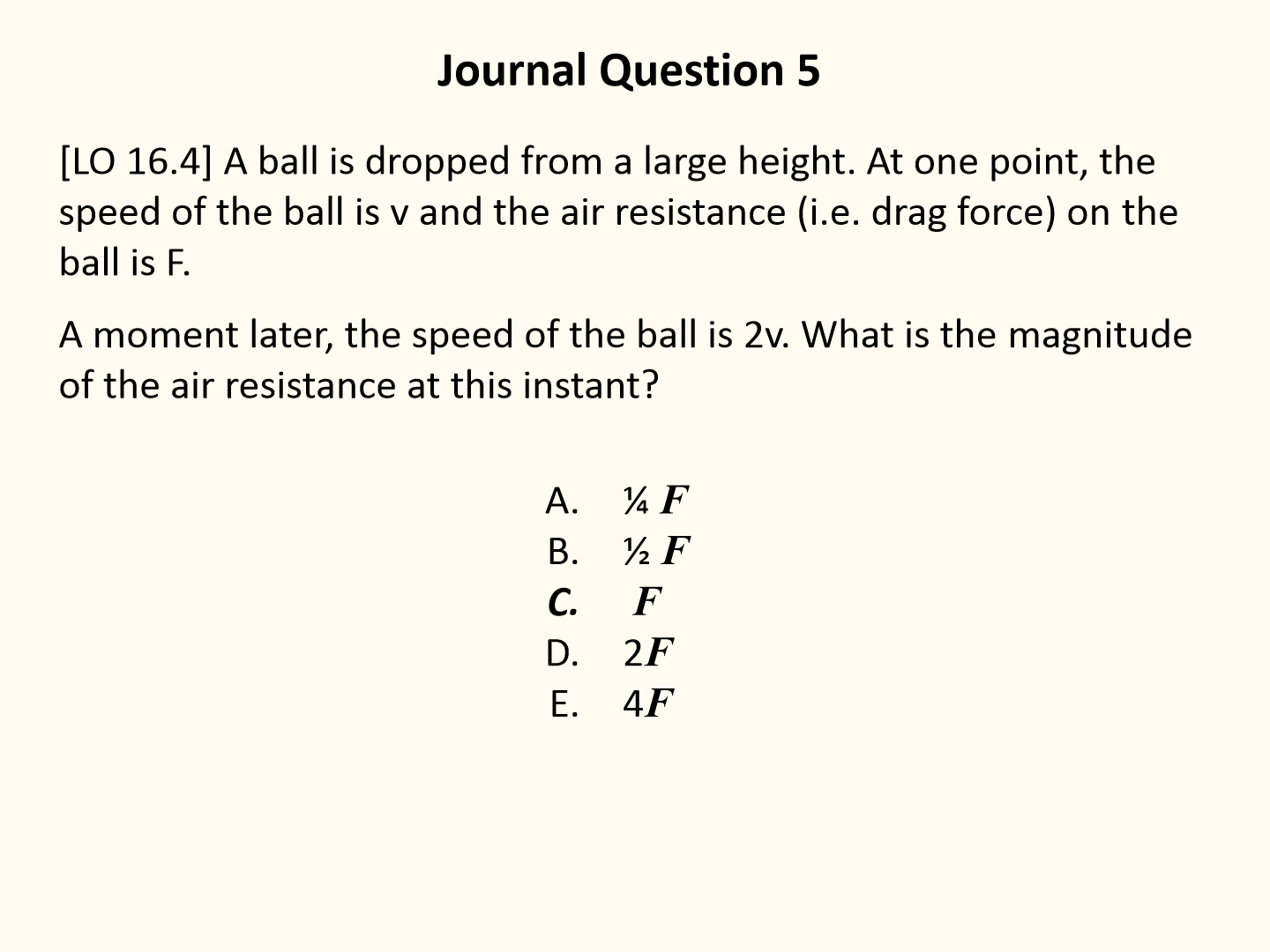
4F
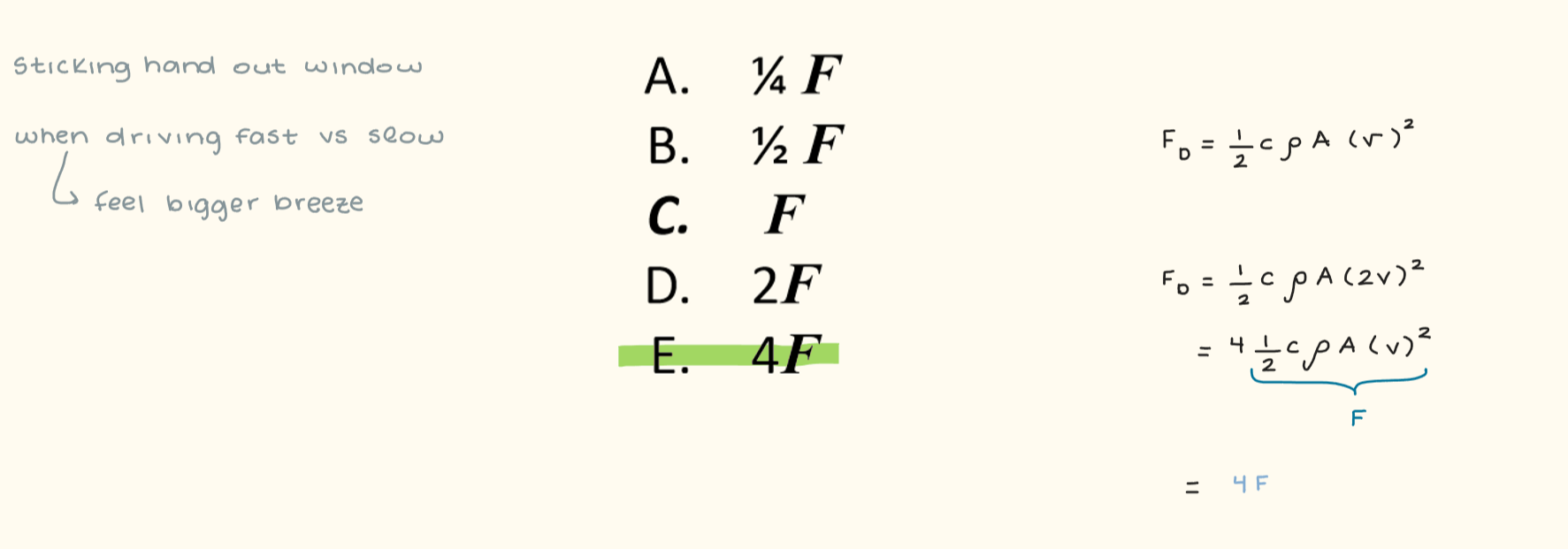

82.8 m/s
No, 15.1 m/s
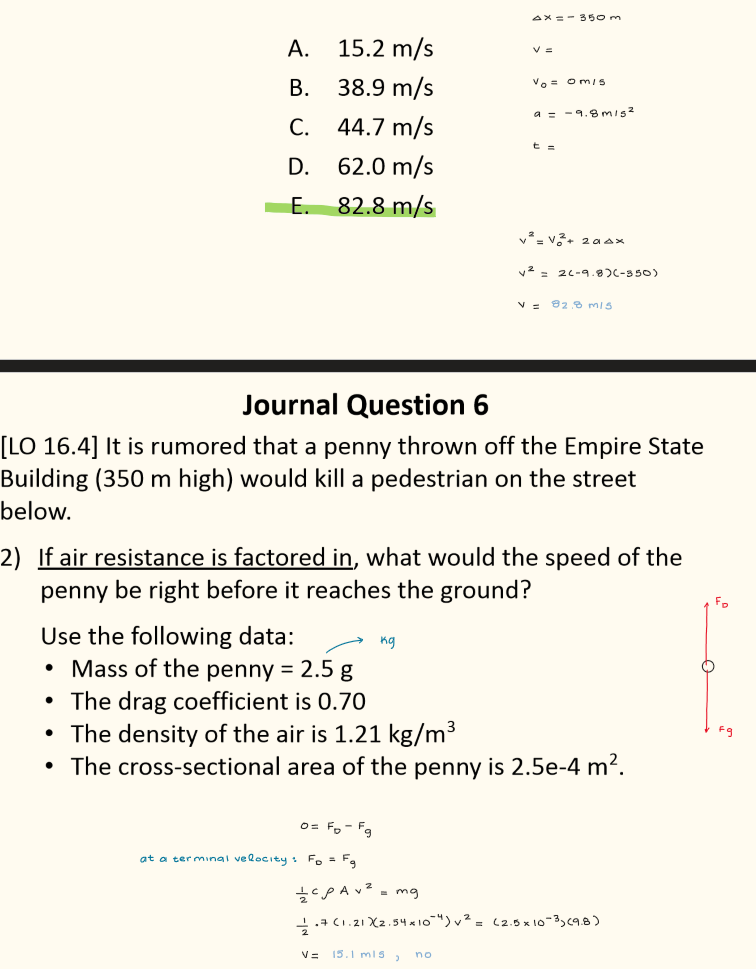

Calculate the minimum force F (in N) he must exert to get the block moving.
What is its acceleration (in m/s2) once it starts to move, if that force is maintained?
64.1 N
0.732 m/s2

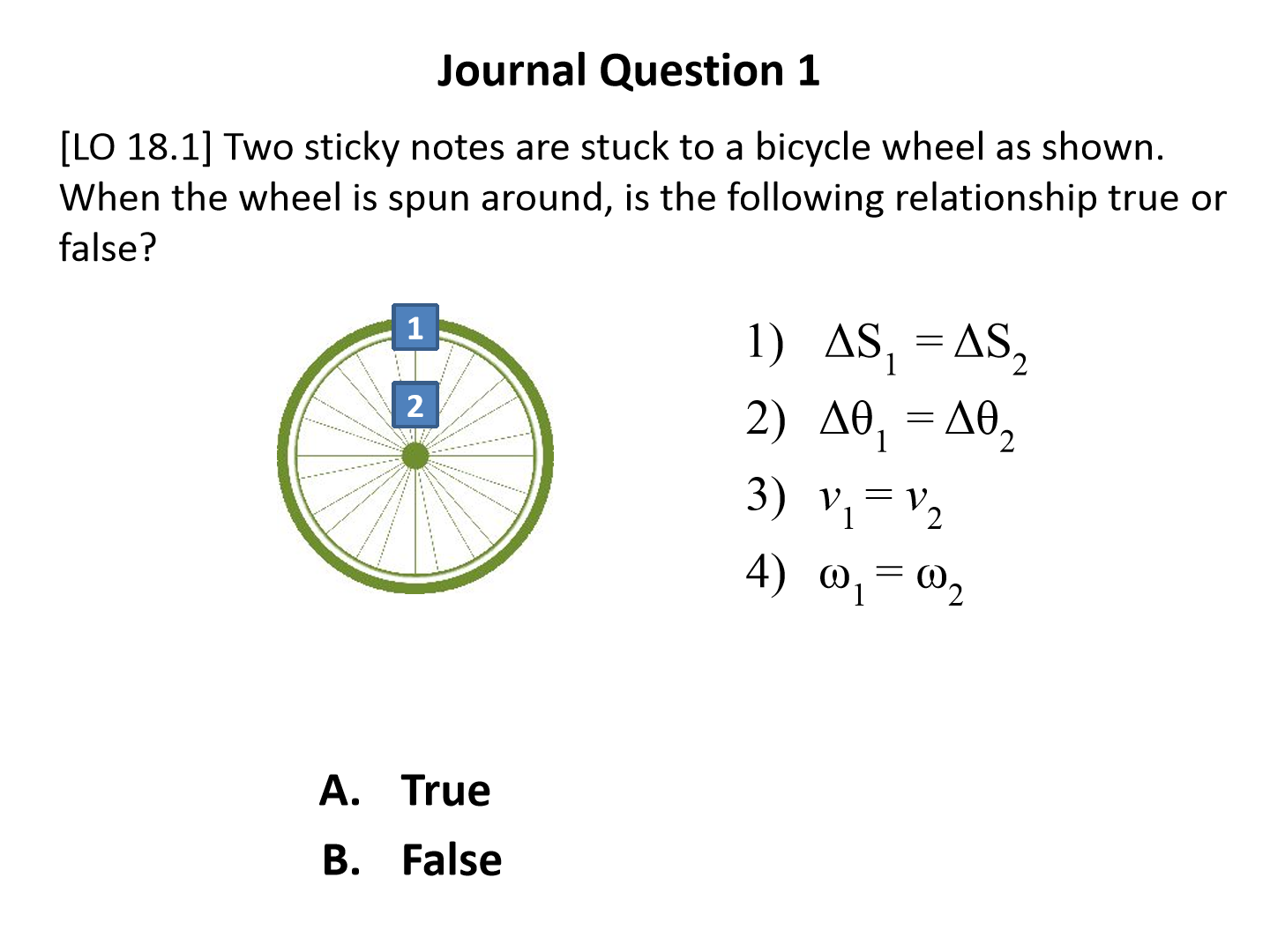
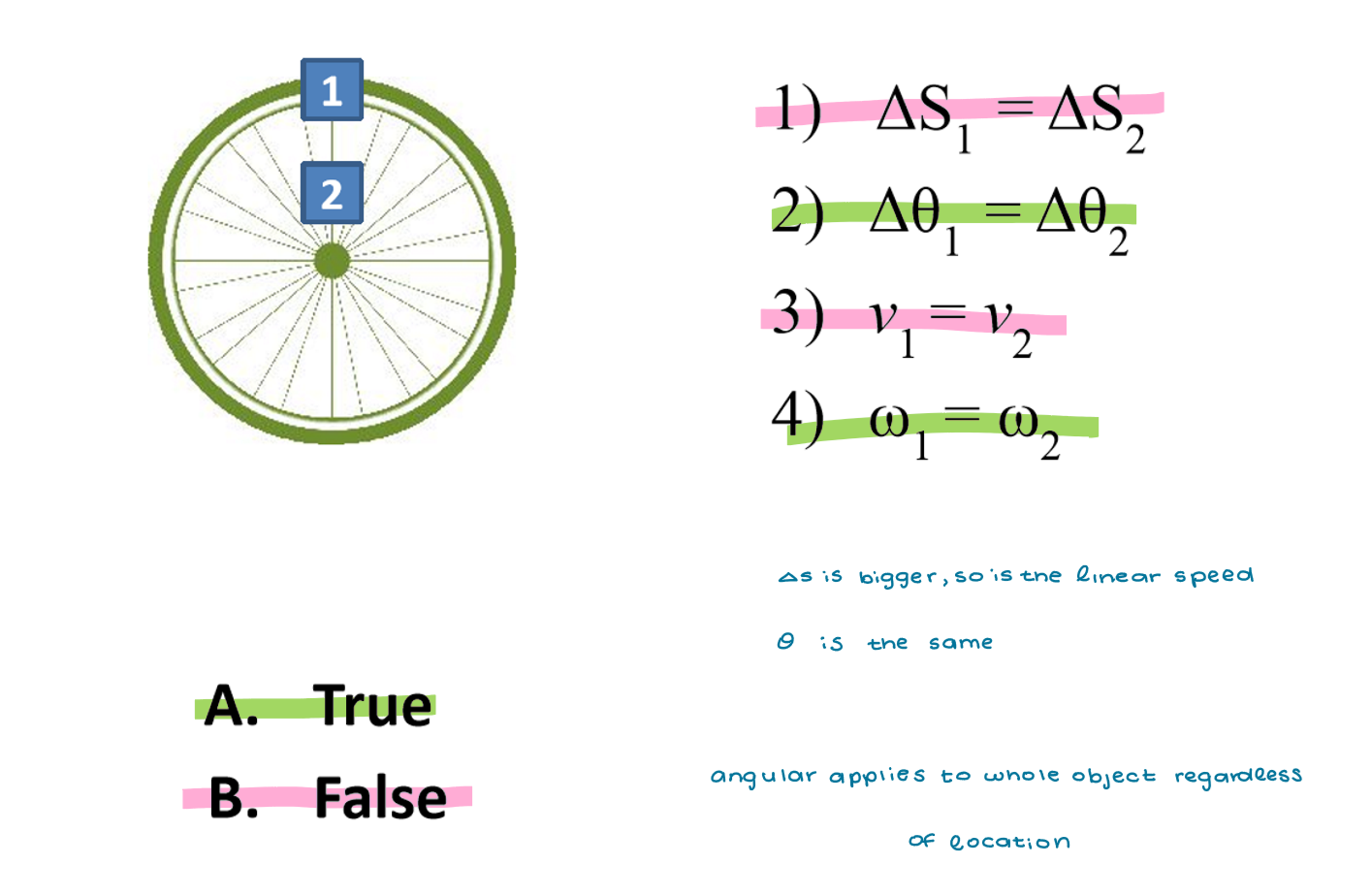
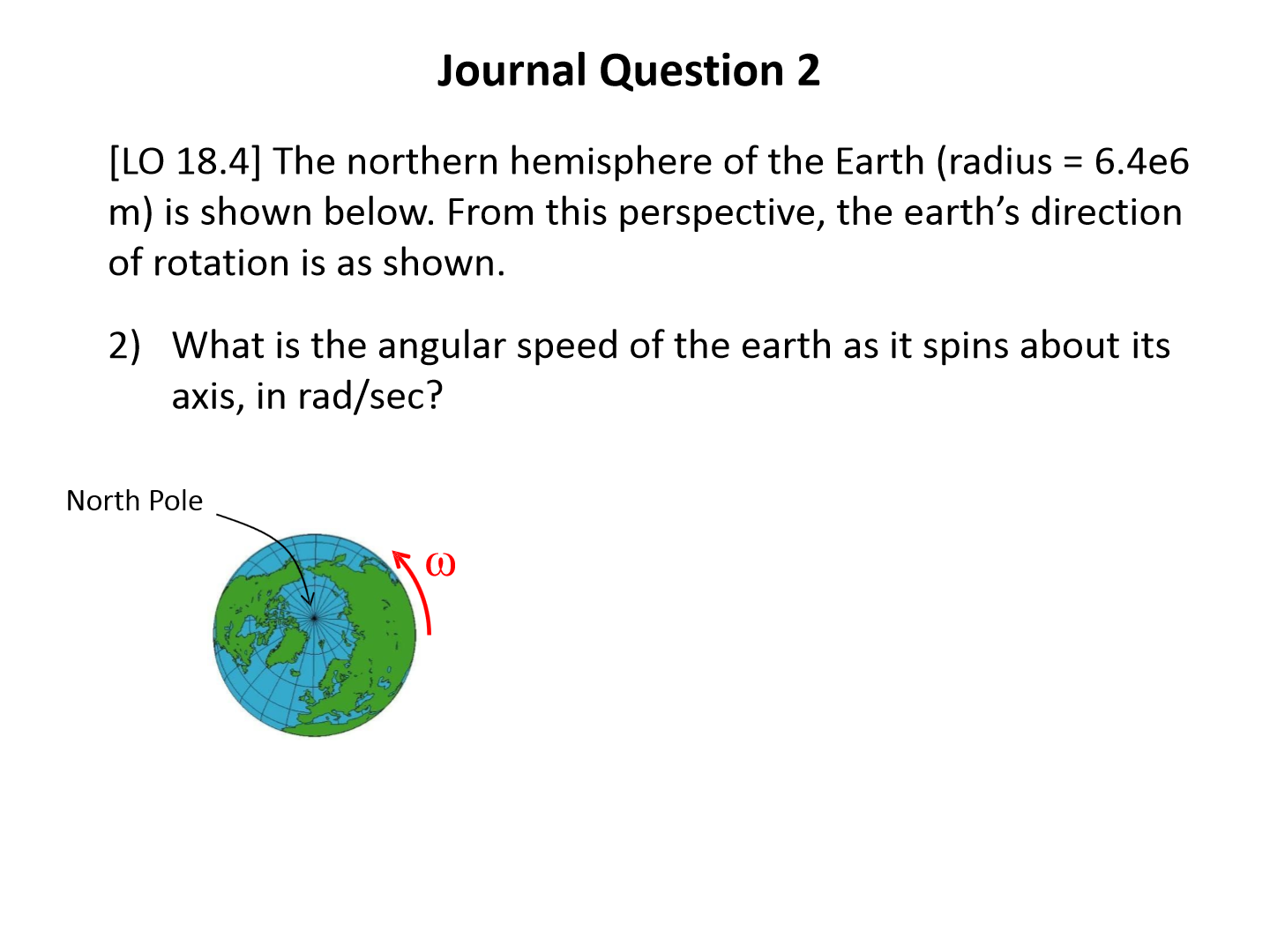
2.0e-7 rad/s
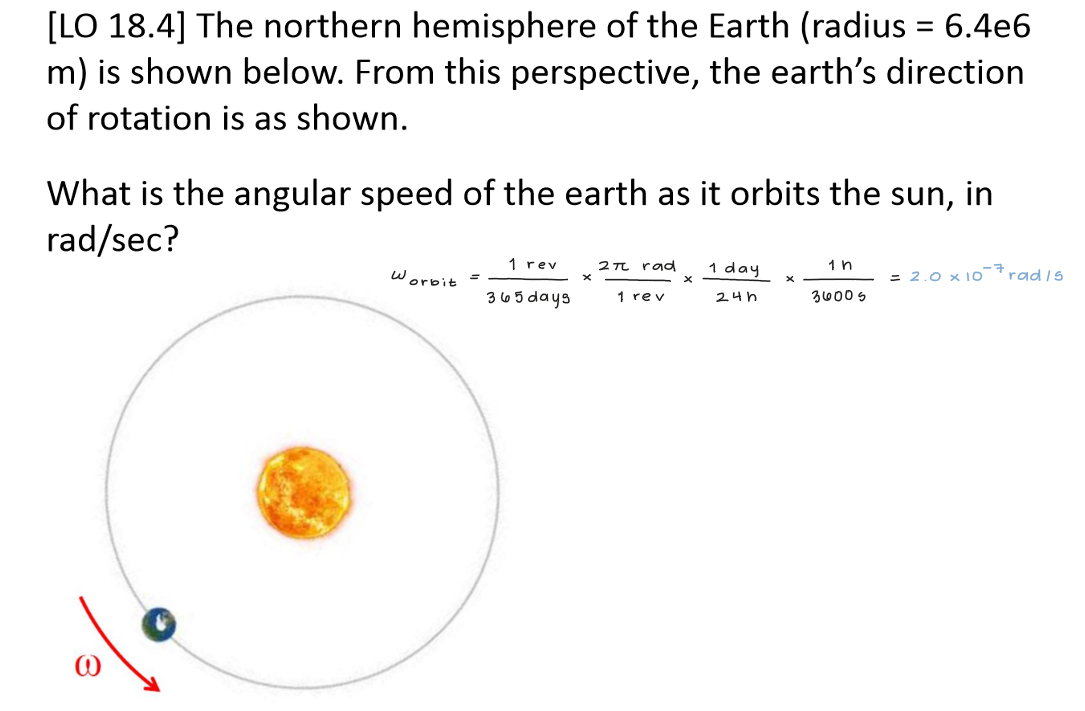
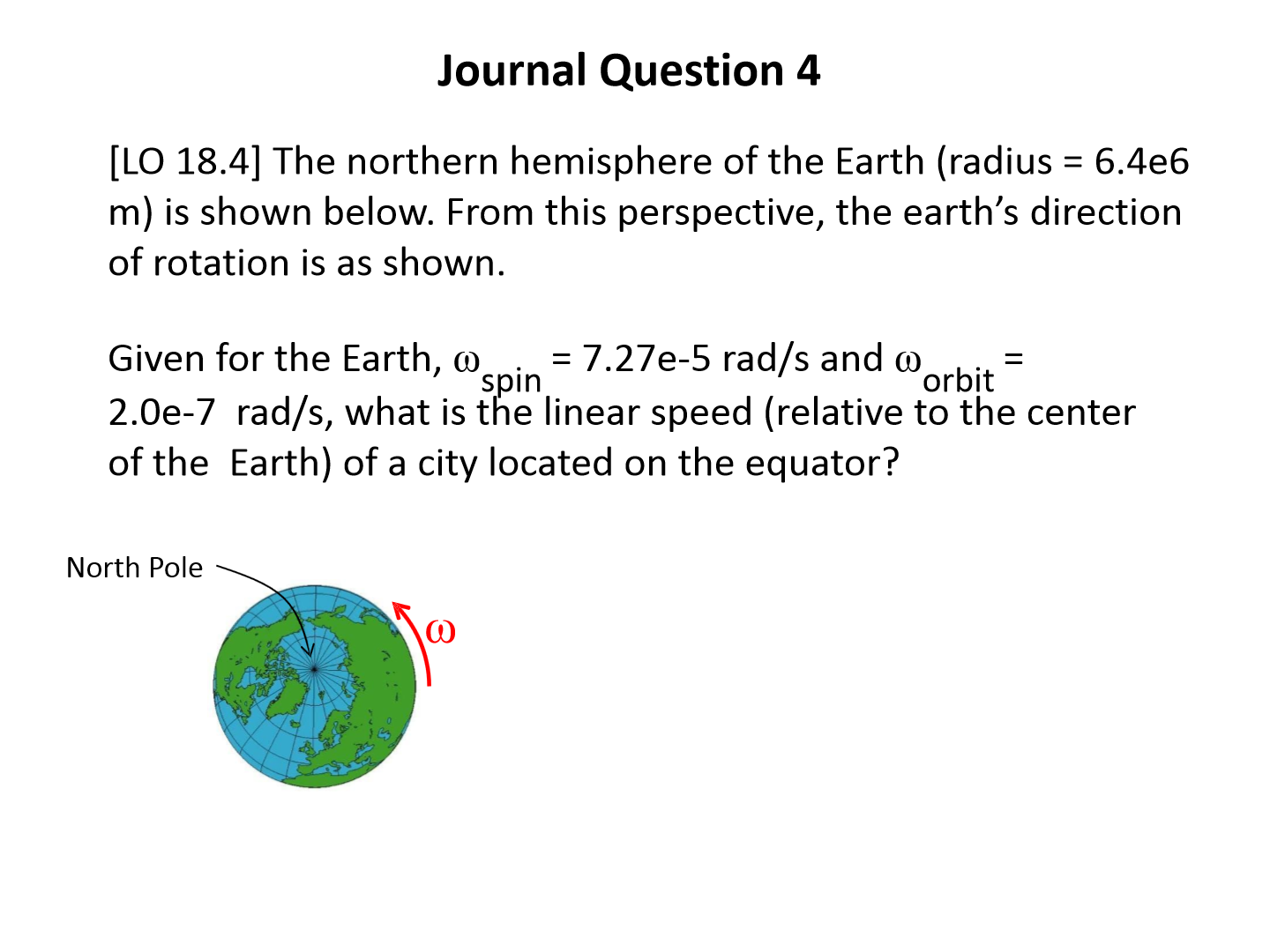
465 m/s
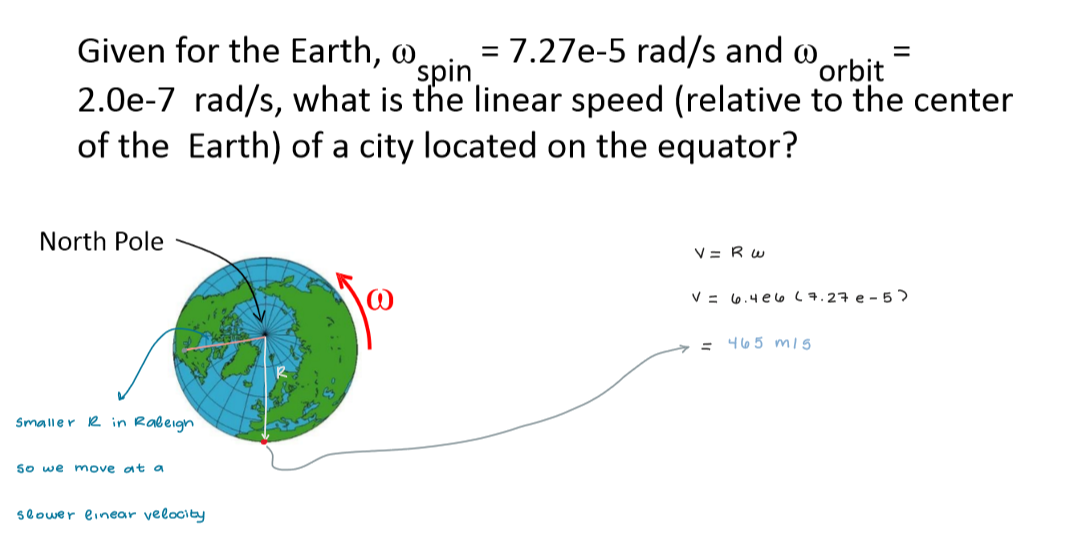
A bicyclist rides 40 km on a bike that has wheels of radius 0.7 m.
How many rotations does each wheel make over the entire trip?
At one instant during the ride, the wheels are spinning at 240 rpm. How fast is the bicyclist going in m/s?
9095 rotations
17.6 m/s
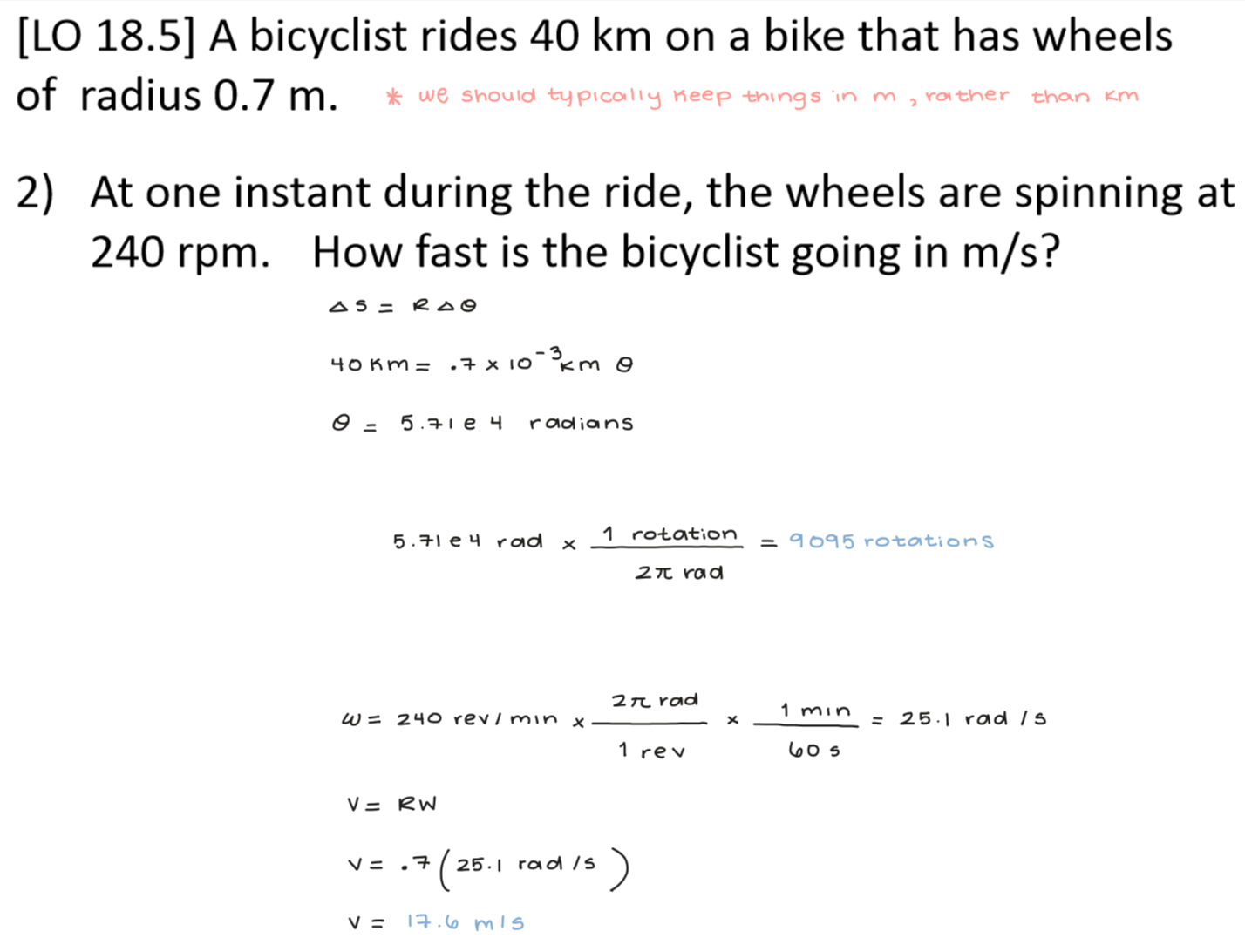
Mary and her younger brother Alex decide to ride the 32-foot-diameter carousel at the State Fair. Mary sits on one of the horses in the outer section at a distance of 13 feet from the center. Alex decides to play it safe and chooses to sit in the inner section at a distance of 7 feet from the center.
(a) What is Mary's angular speed 𝜔M compared to that of Alex's angular speed 𝜔A? Give your answer as a multiple of 𝜔A.
(b) What is Mary's tangential speed vM compared to that of Alex's tangential speed vA? Give your answer as a multiple of vA.
a) 1 𝜔A
b) 1.85 vA
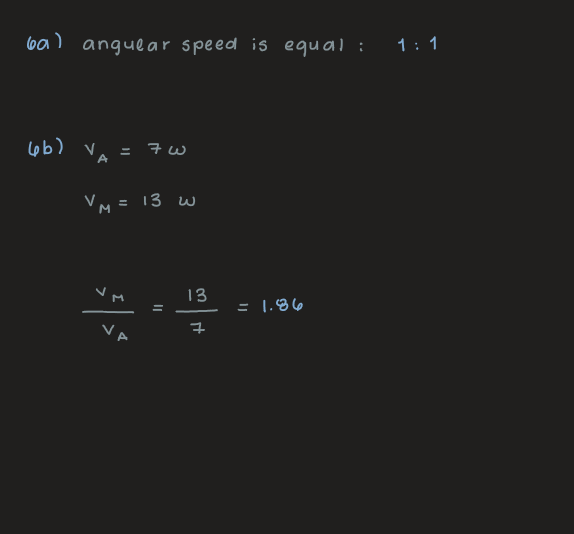
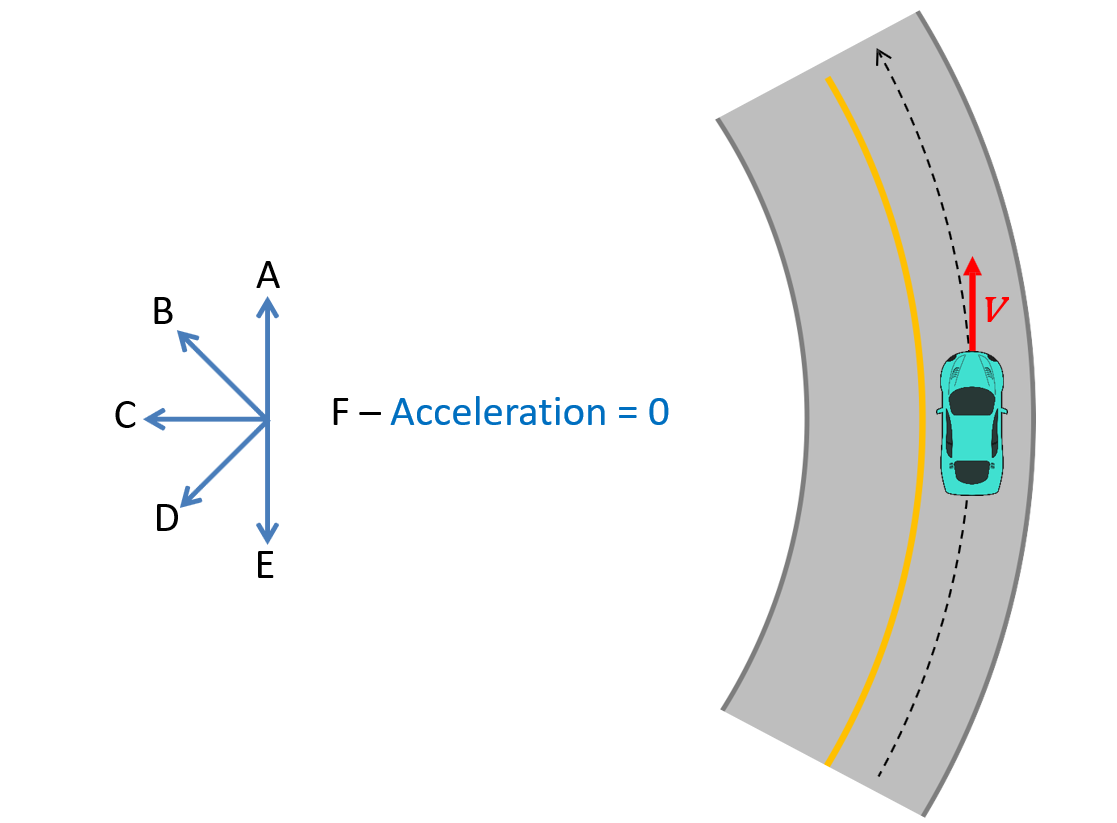
The car in the figure below curves to stay on the road. Its path is shown by the dashed, black line (radius of curvature of 80 m).
If its speed is a constant 15 m/s, what is the direction of the car’s acceleration at the instant shown?
If its speed is a constant 15 m/s, what is the magnitude of the car’s acceleration?
If the car’s speed is increasing, what might be the direction of the car’s acceleration at the instant shown?
C
2.8 m/s²
B


166 N
No
Move towards the center of the merry-go-round
E


20.1 N
27.9 N


12348 N
upward
13.3 m/s
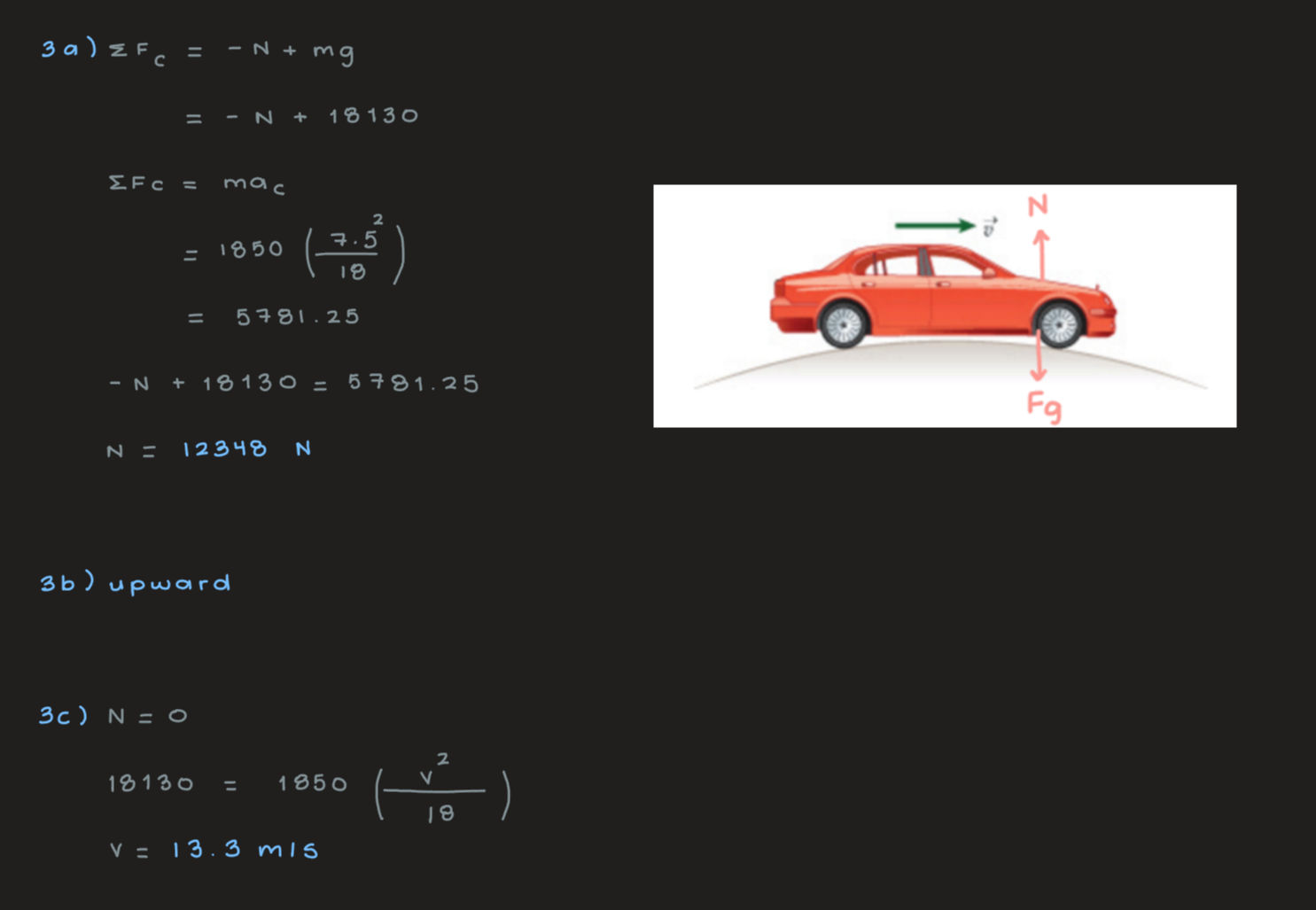

A stunt pilot in an air show performs a loop-the-loop in a vertical circle of radius 3.76 x 103 m. During this performance the pilot whose weight is 777 N, maintains a constant speed of 2.10 x 102 m/s.
When the pilot is at the highest point of the loop determine his apparent weight in N.
At what speed, in m/s, will the pilot experience weightlessness?
When the pilot is at the lowest point of the loop determine his apparent weight in N.
153 N
192 m/s
1710 N

A “geosynchronous satellite” is a satellite that always stays above the same location on the Earth (or some celestial object). The mass of the Earth is 6.0e24 kg, and the mass of the satellite is 90 kg.
What is the radius of the orbit of a geosynchronous satellite around the Earth?
4.2e+7 m
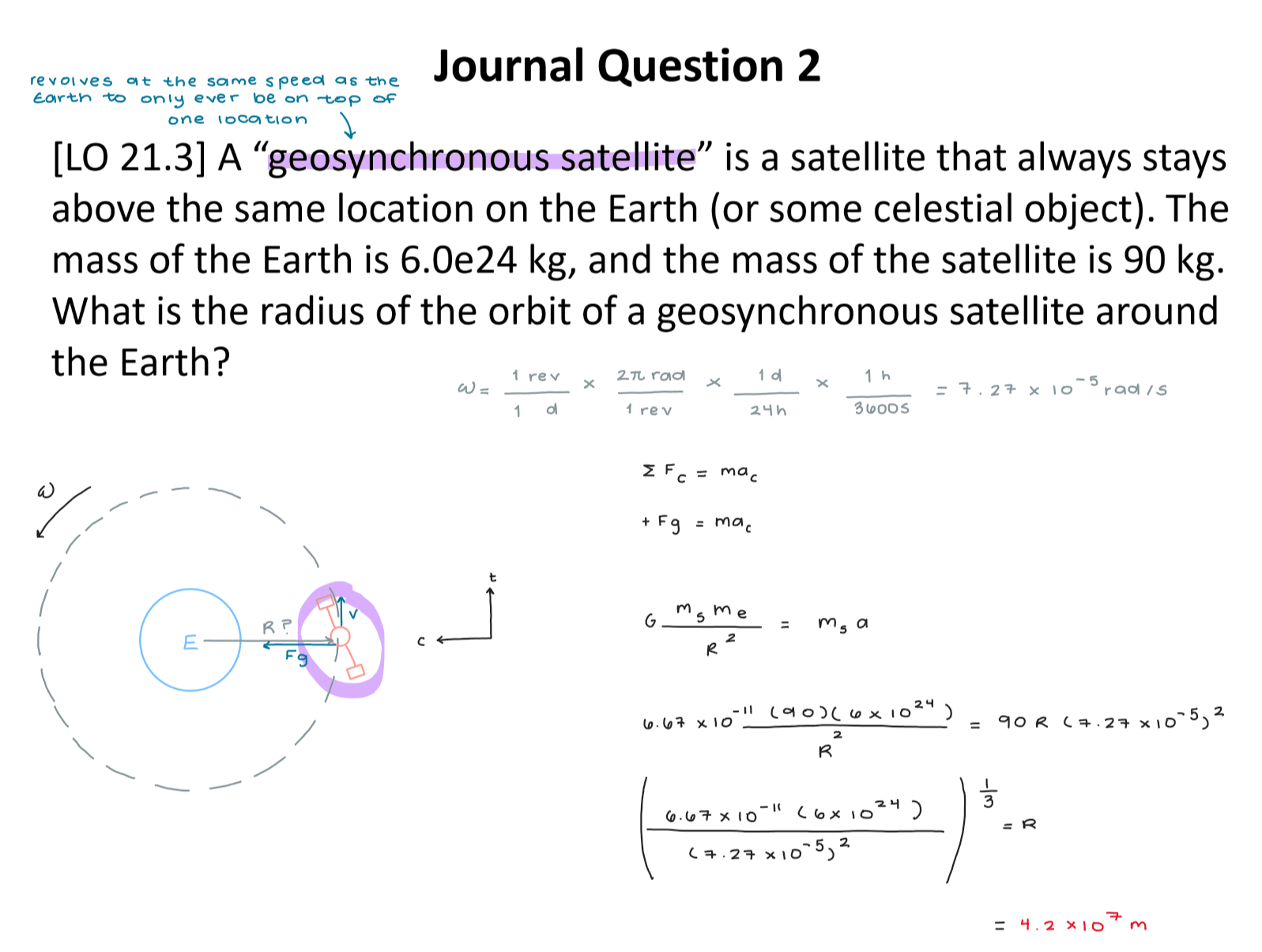
What is ‘g’ on the surface of the Moon?
Given:
• The radius of the Moon is 1,740 km
• The mass of the Moon is 7.35e22 kg
1.62 m/s²
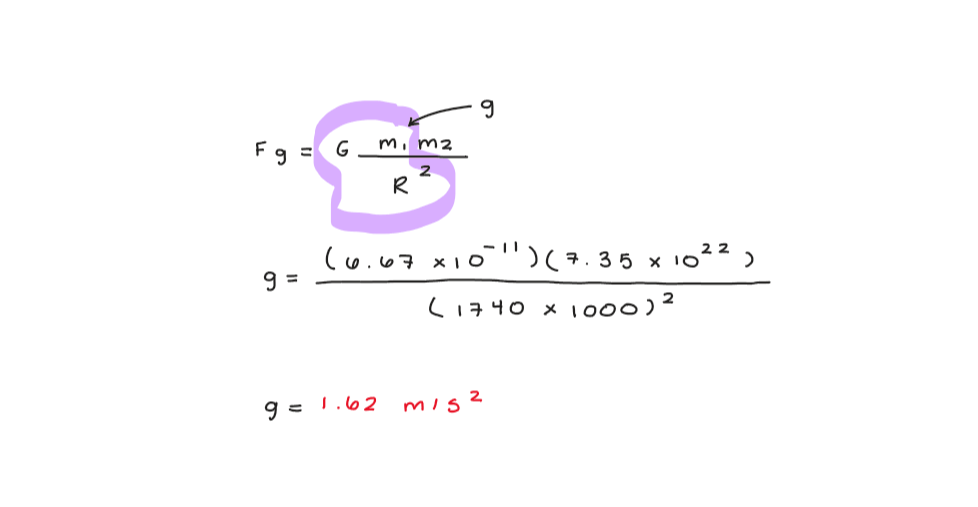
A man-made satellite orbits the earth in a circular orbit that has a radius of 1000 km. The mass of the Earth is 5.97e+24 kg. What is the tangential speed of the satellite?
1.995e+4 m/s
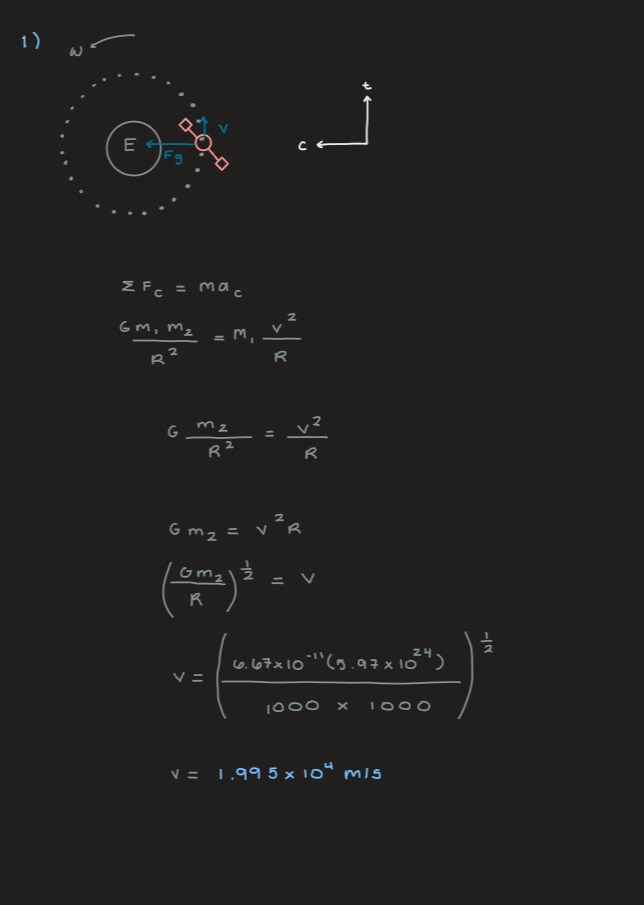
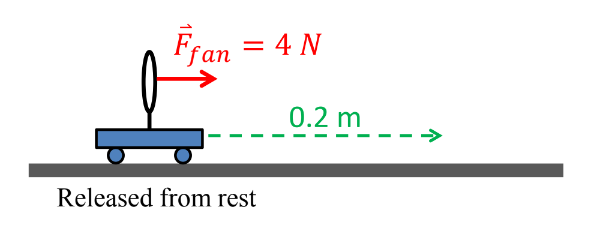
The 0.5 kg fan cart is released from rest. The fan applies a constant horizontal force of 4 N.
After the cart rolls 0.2 m, what is the value of the work done to the cart by the fan force?
After the cart rolls 0.2 m, what is the value of the work done to the cart by the force of gravity?
After the cart rolls 0.2 m, what is the value of the work done to the cart by the normal force?
+0.8 J
0.0 J
0.0 J
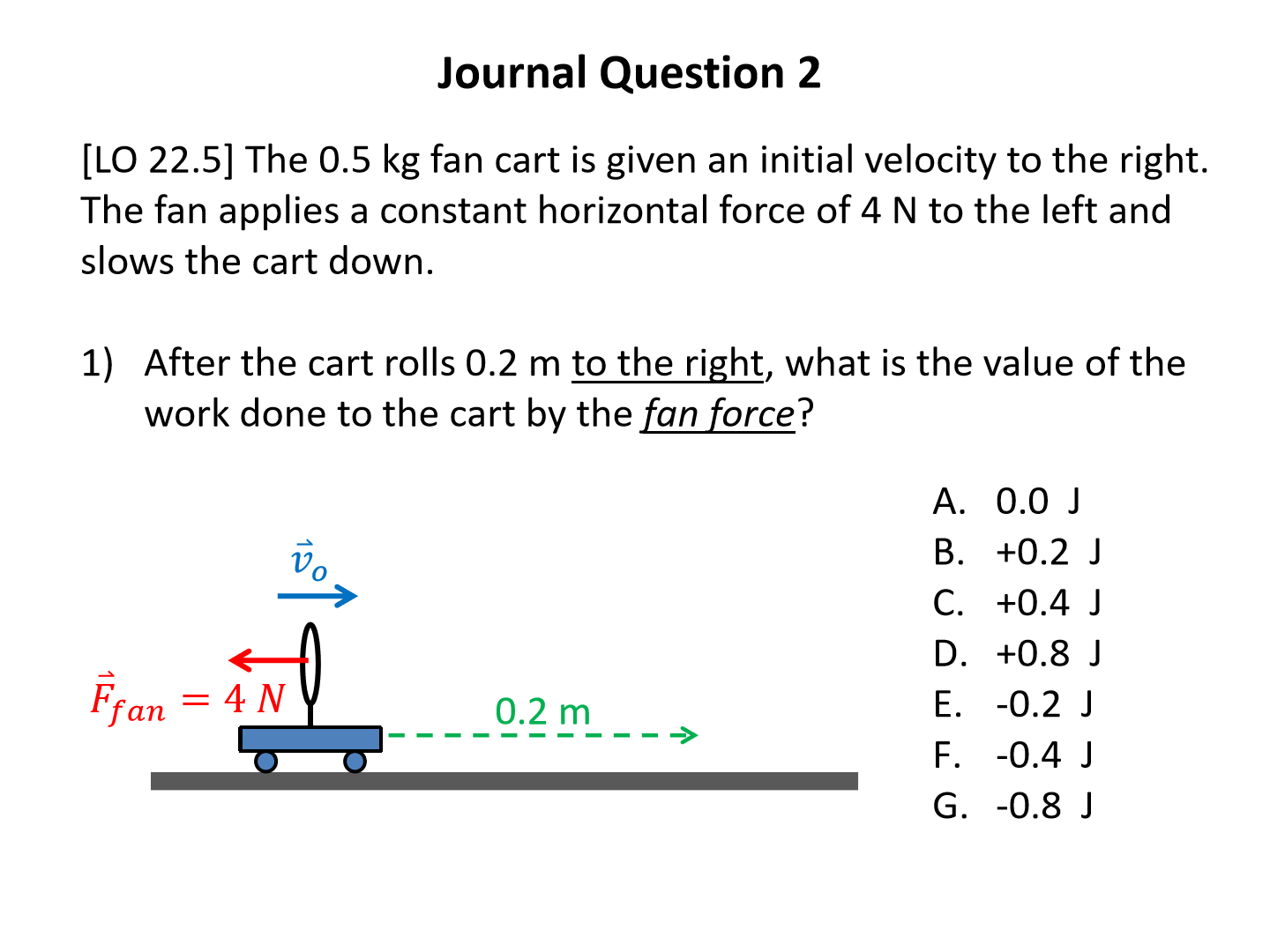
-0.8 J
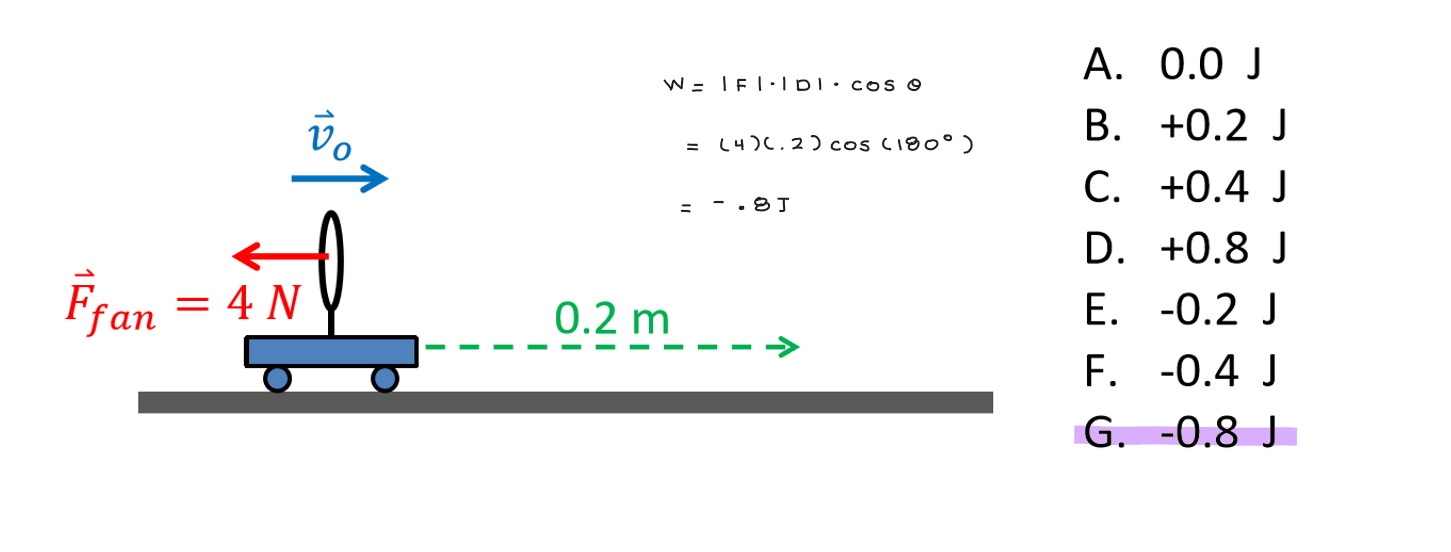
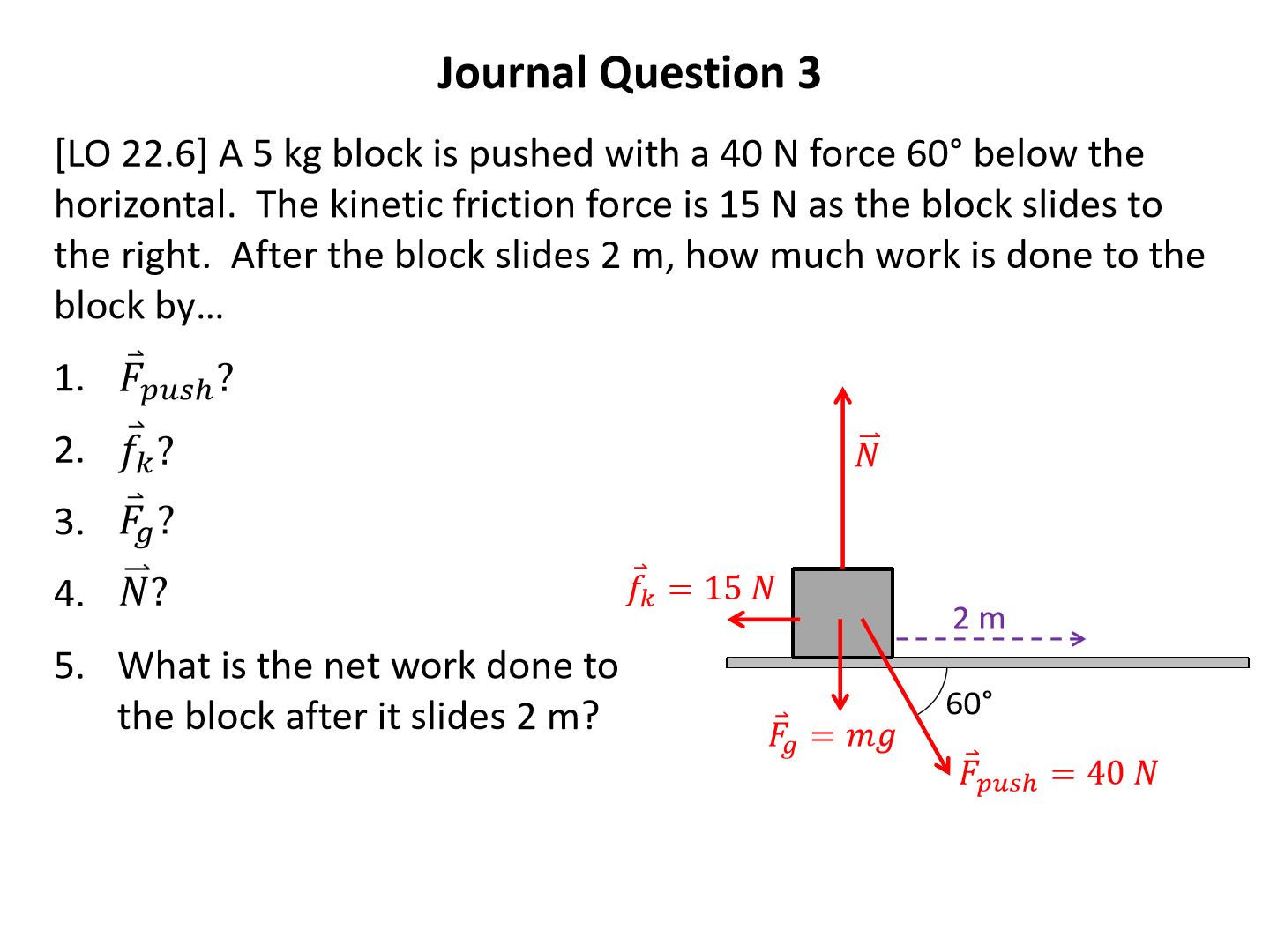
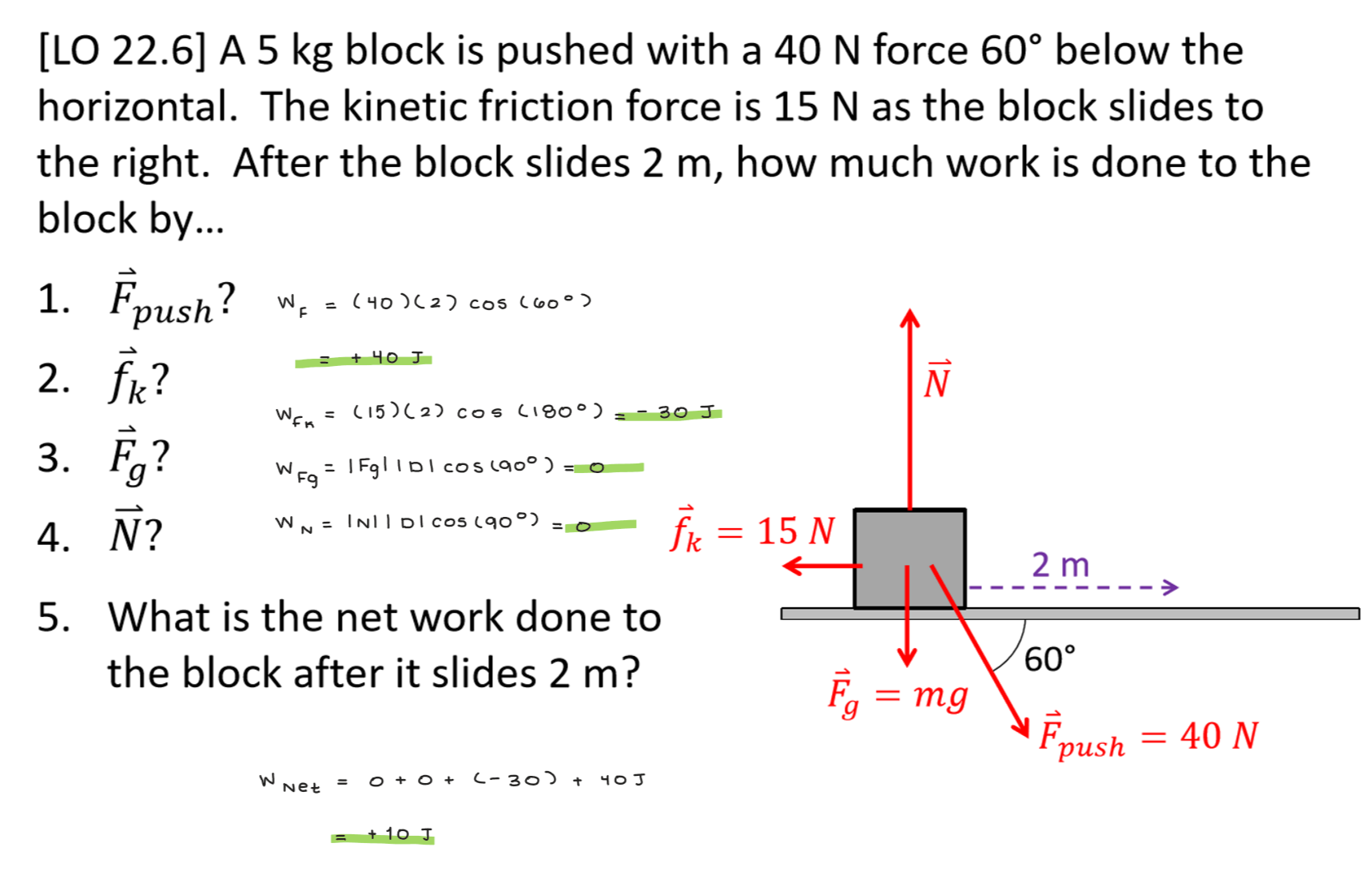
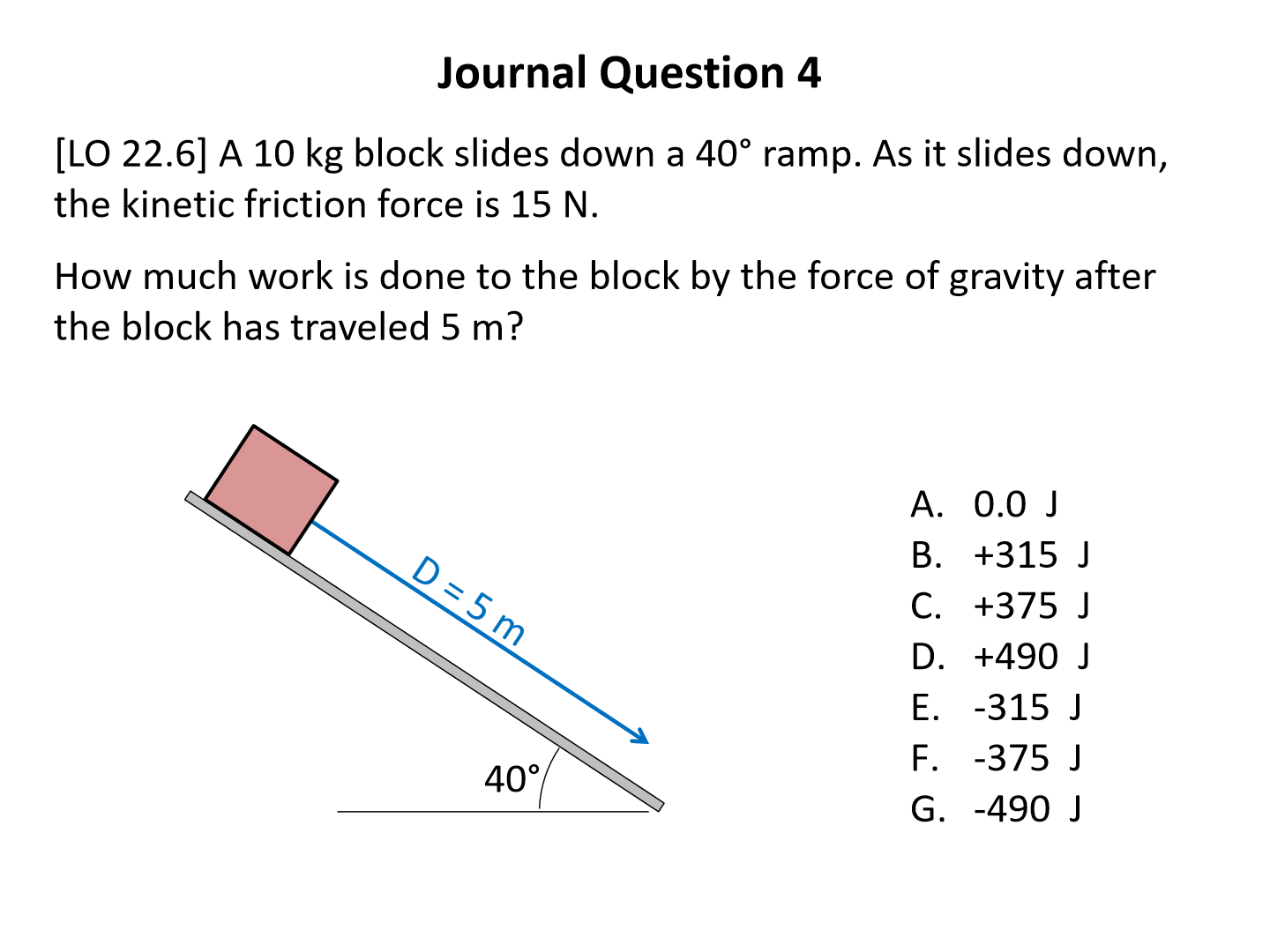
+315 J
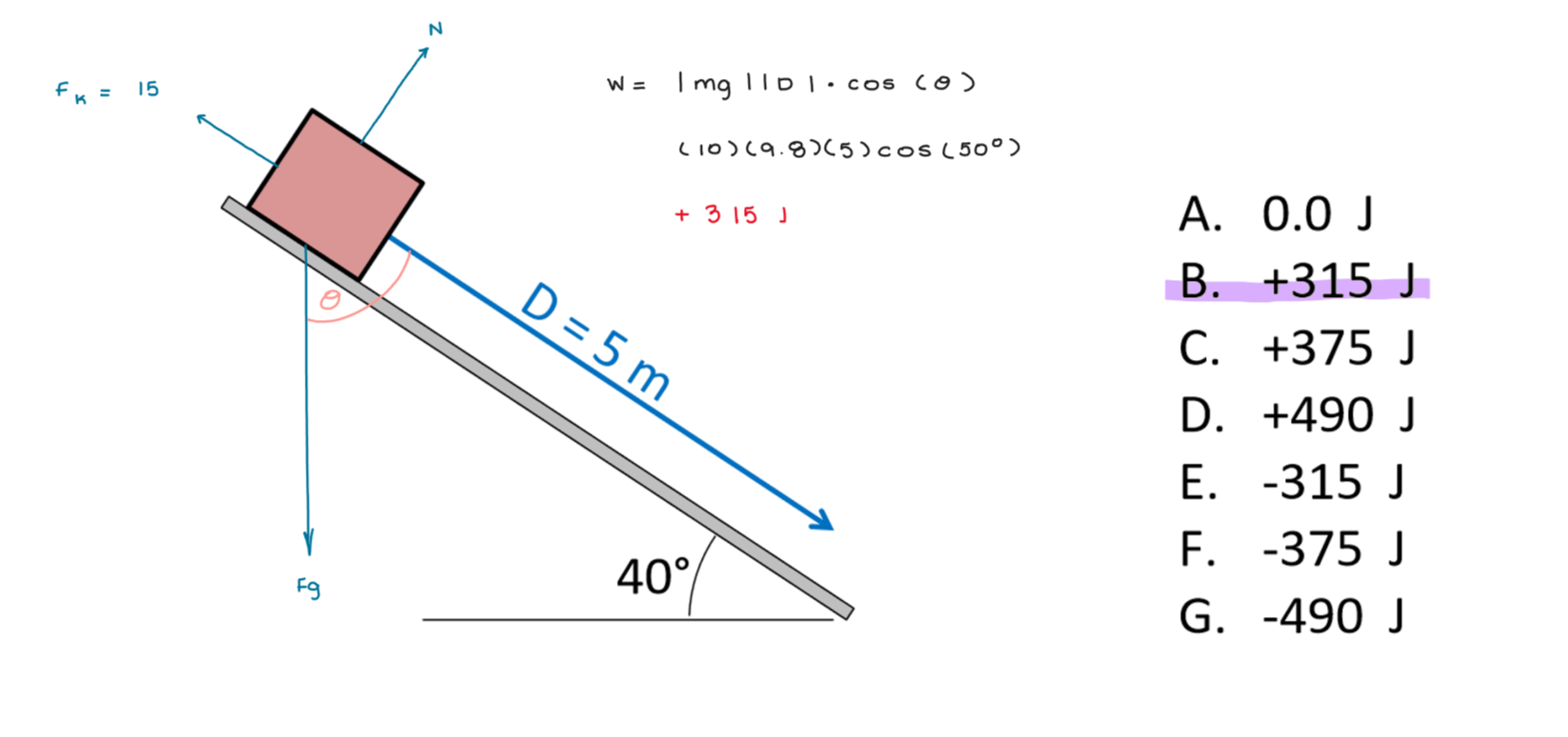
In a shipping yard, a crane operator attaches a cable to a 1,210 kg shipping container and then uses the crane to lift the container vertically at a constant velocity for a distance of 29 m. Determine the amount of work done (in J) by each of the following.
(a) the tension in the cable
b) the force of gravity
a) 343882 J
b) - 343882 J

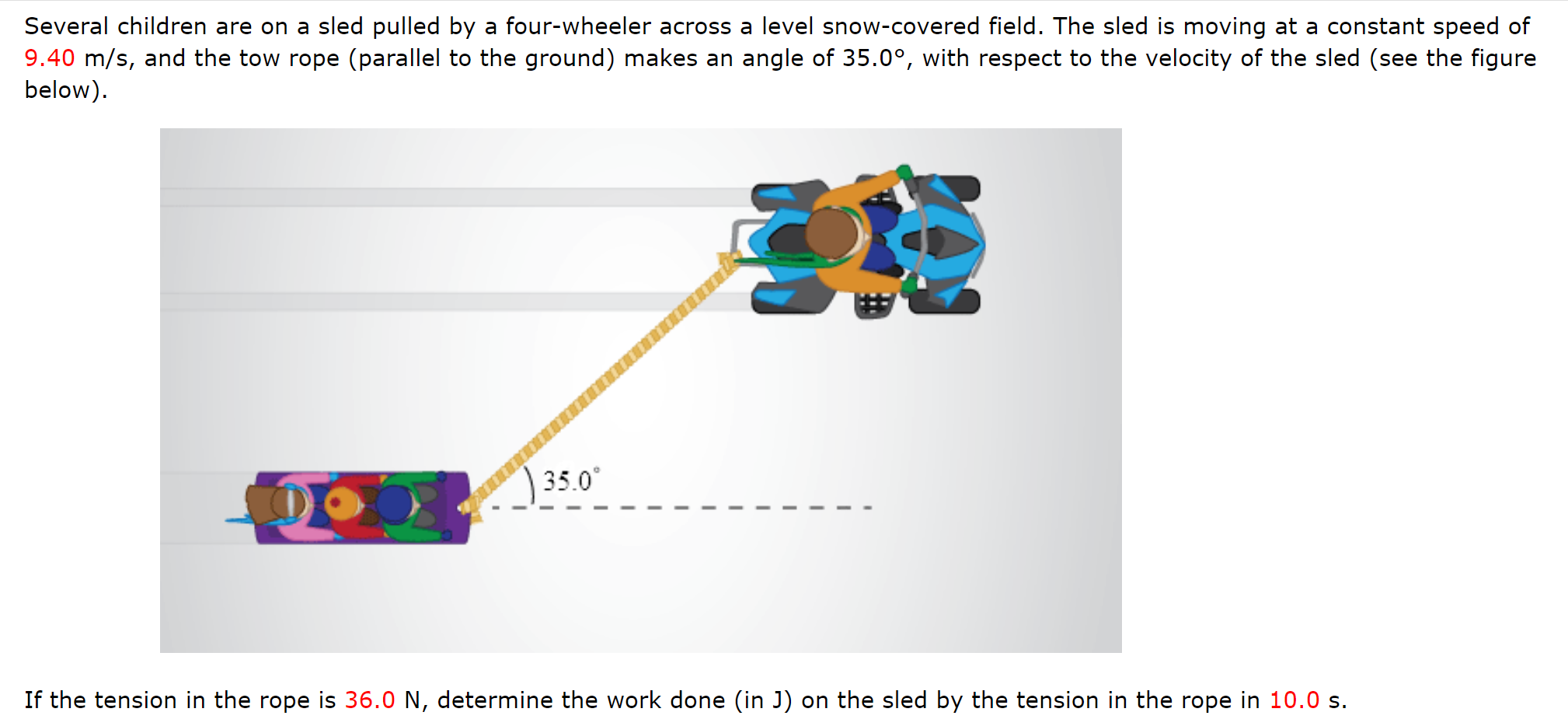
2772 J

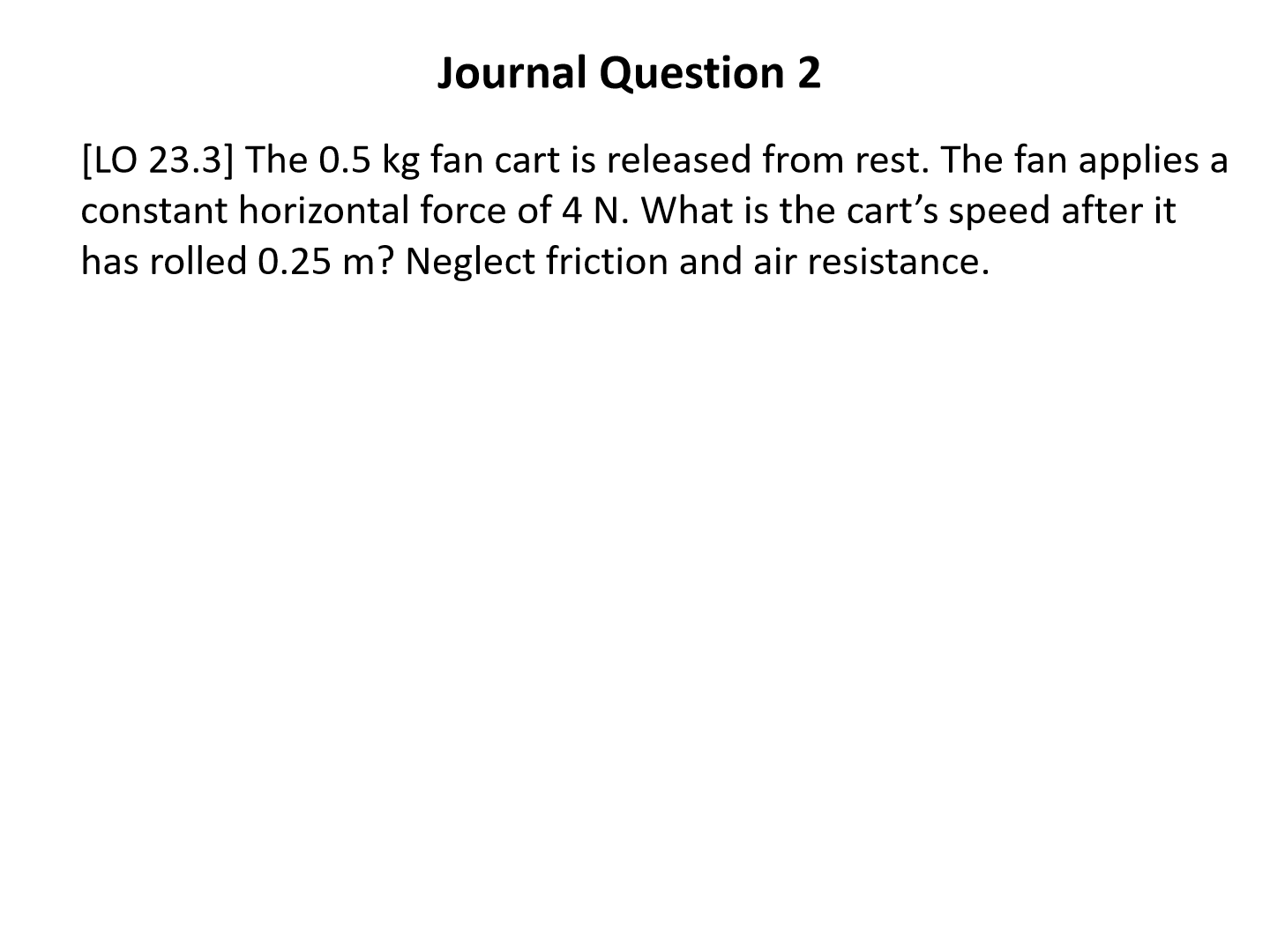
2 m/s
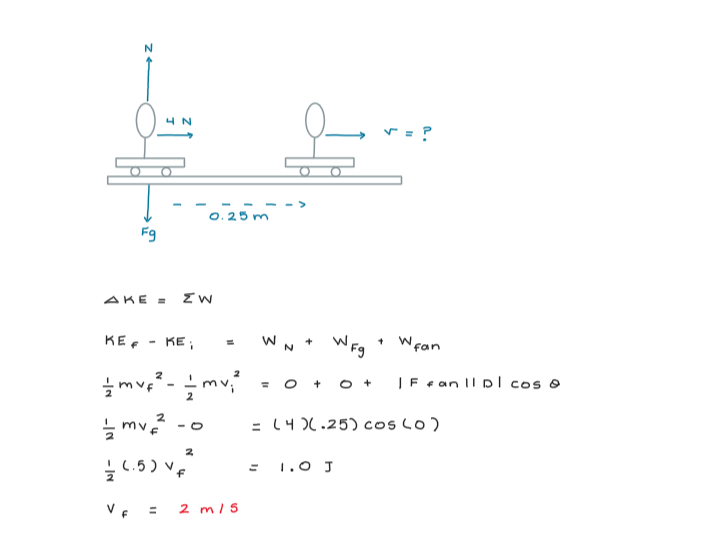

2 m/s
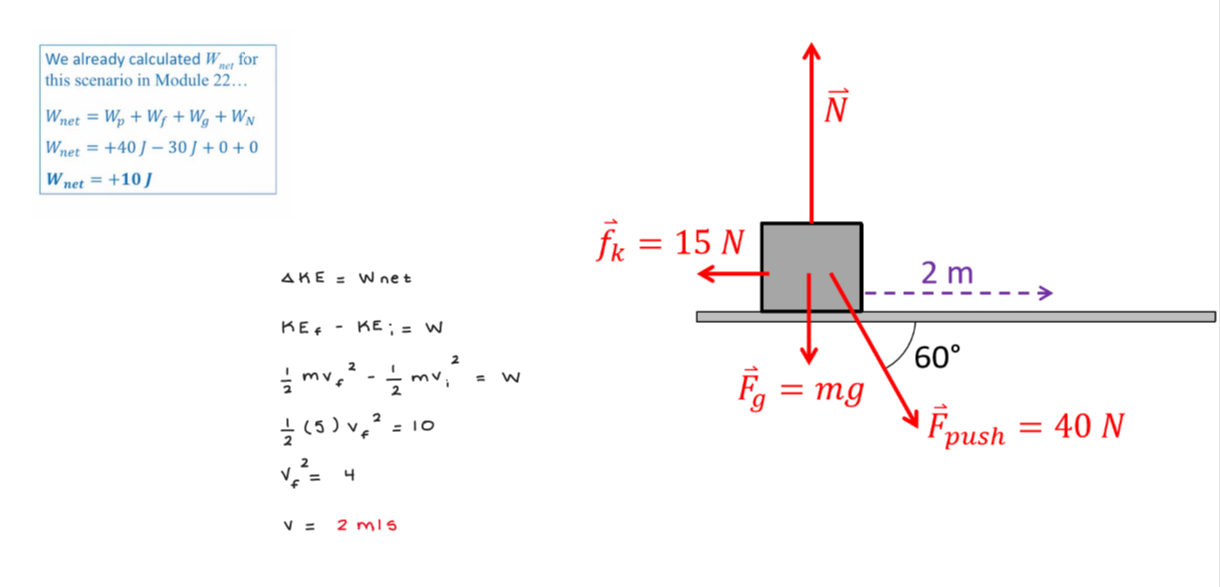
The center fielder for the school's baseball team throws a 0.150-kg baseball towards home plate at a speed of 29.0 m/s and an initial angle of 40.0°. What is the kinetic energy of the baseball at the highest point of its trajectory?
37 J
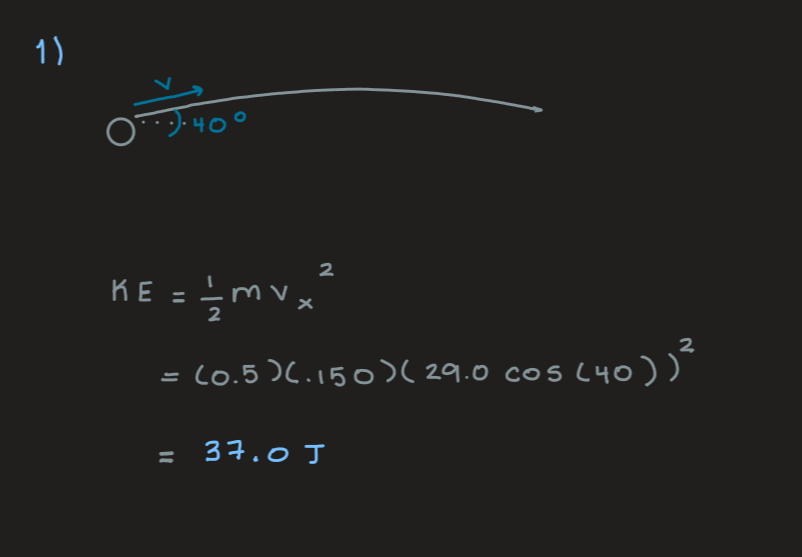
A man does 4,430 J of work in the process of pushing his 2.70e3 kg truck from rest to a speed of v, over a distance of 27.0 m. Neglecting friction between truck and road, determine the following.
the speed v (in m/s)
the horizontal force exerted on the truck (in N)
1.81 m/s
164 N

A cross-country skier slides horizontally along the snow and comes to rest after sliding a distance of 26 m. If the coefficient of kinetic friction between her skis and the snow is 𝜇k = 0.060, determine her speed at the start of the slide.
5.53 m/s
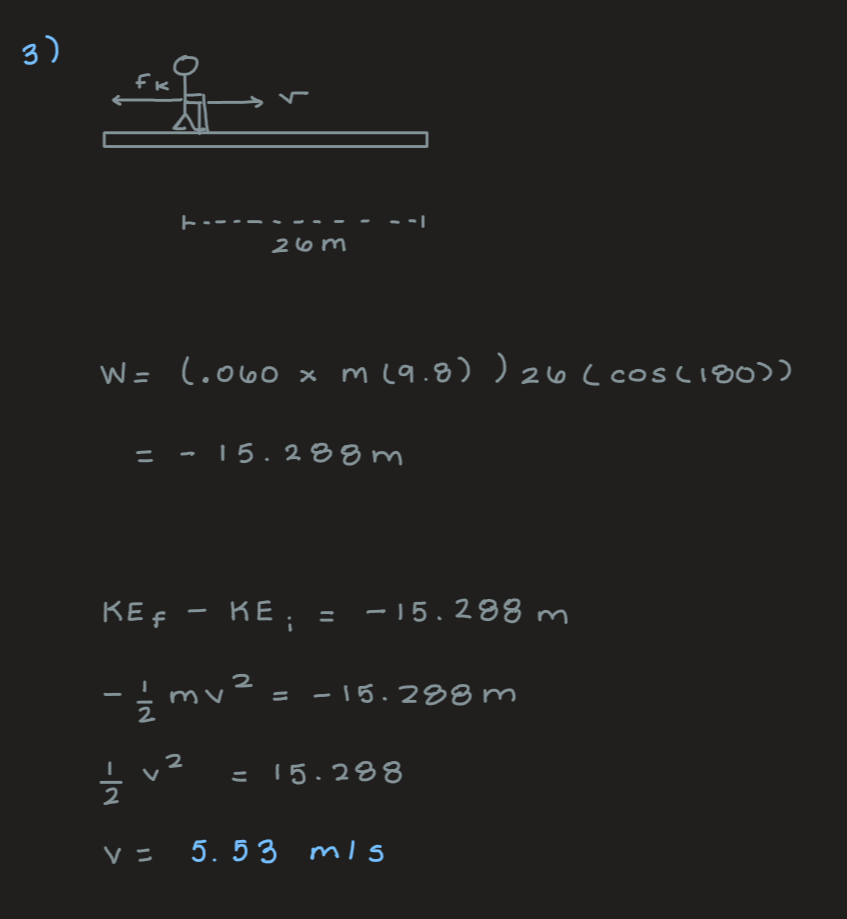
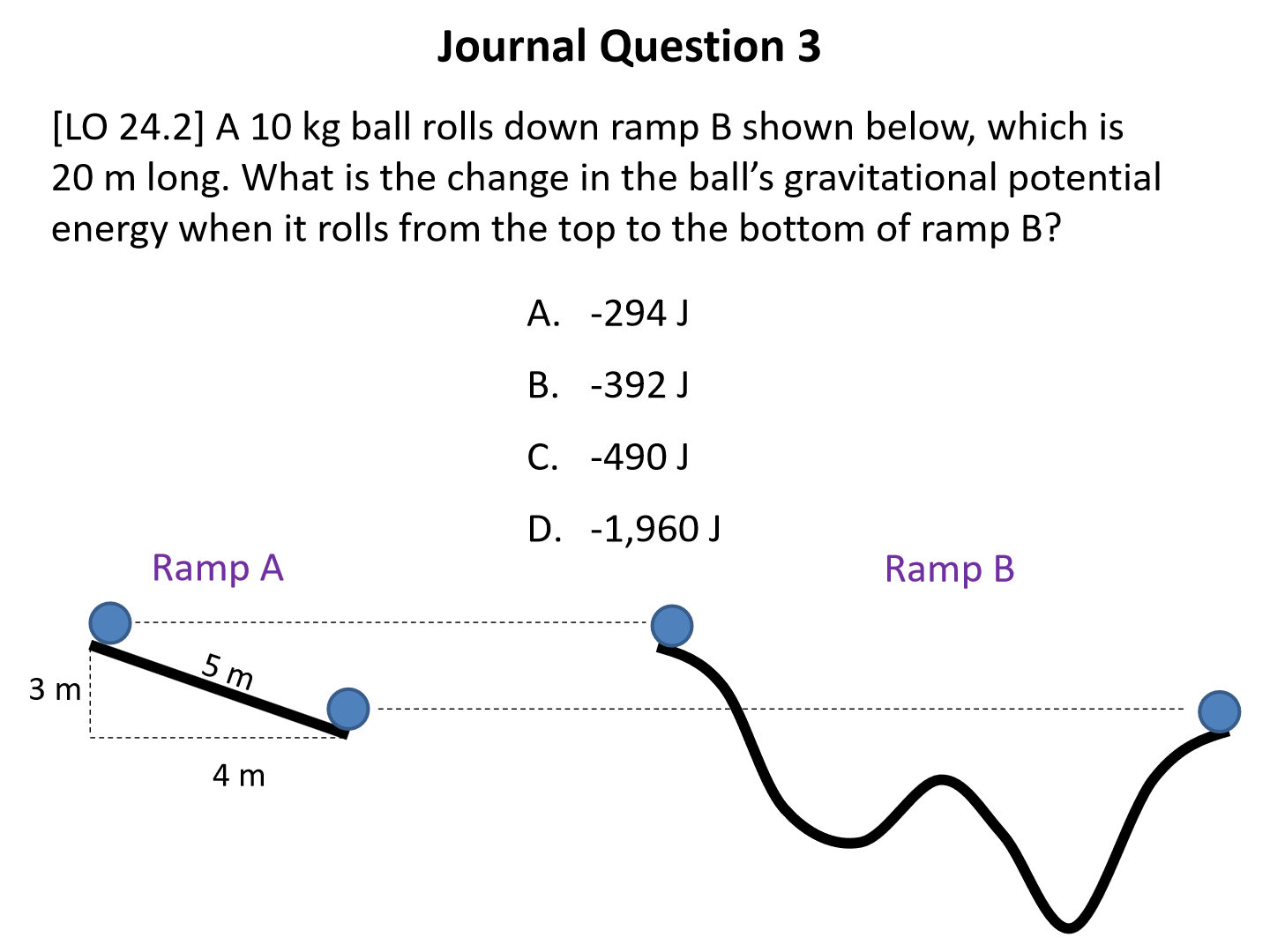
-294 J
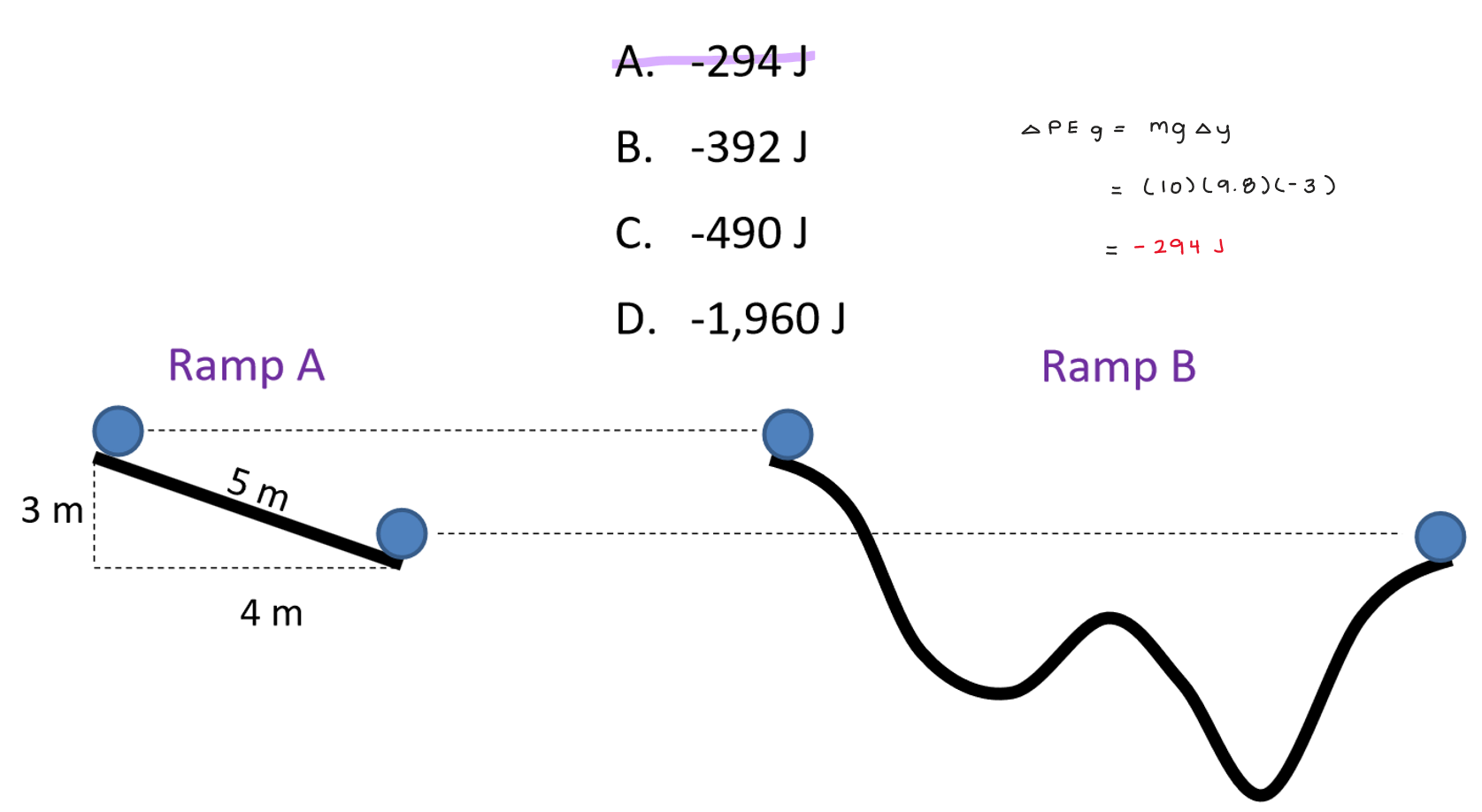
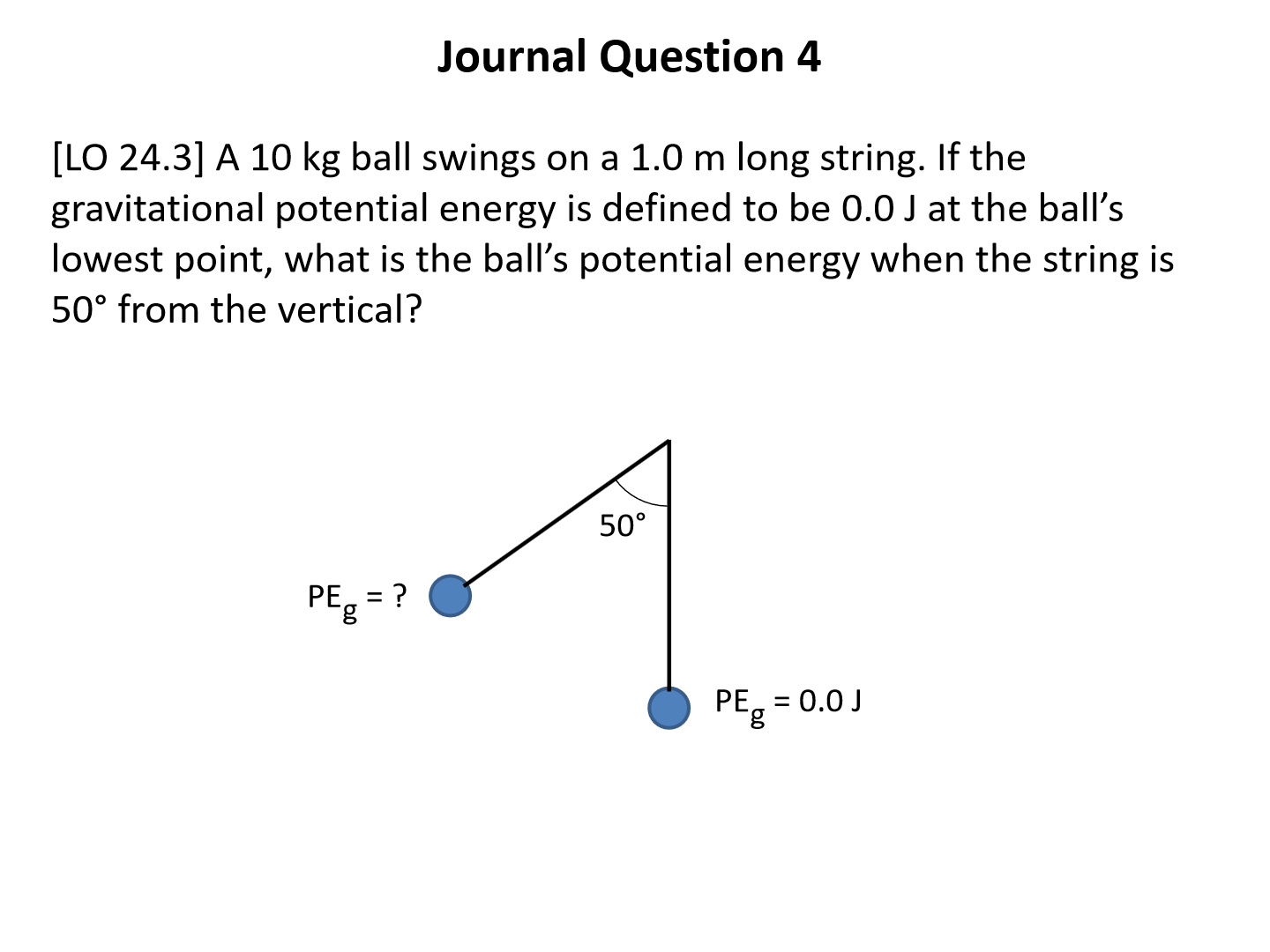
35.3 J
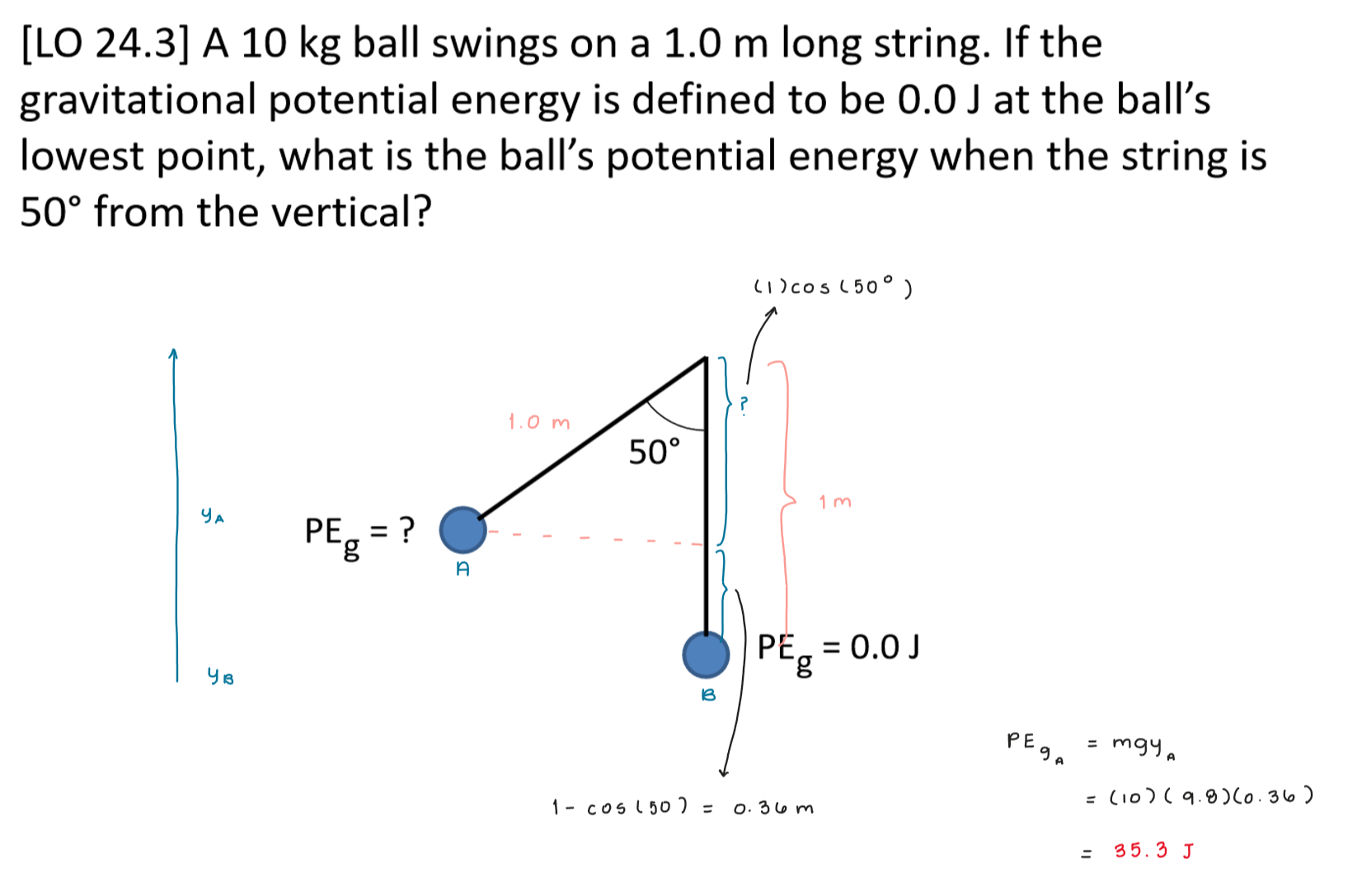
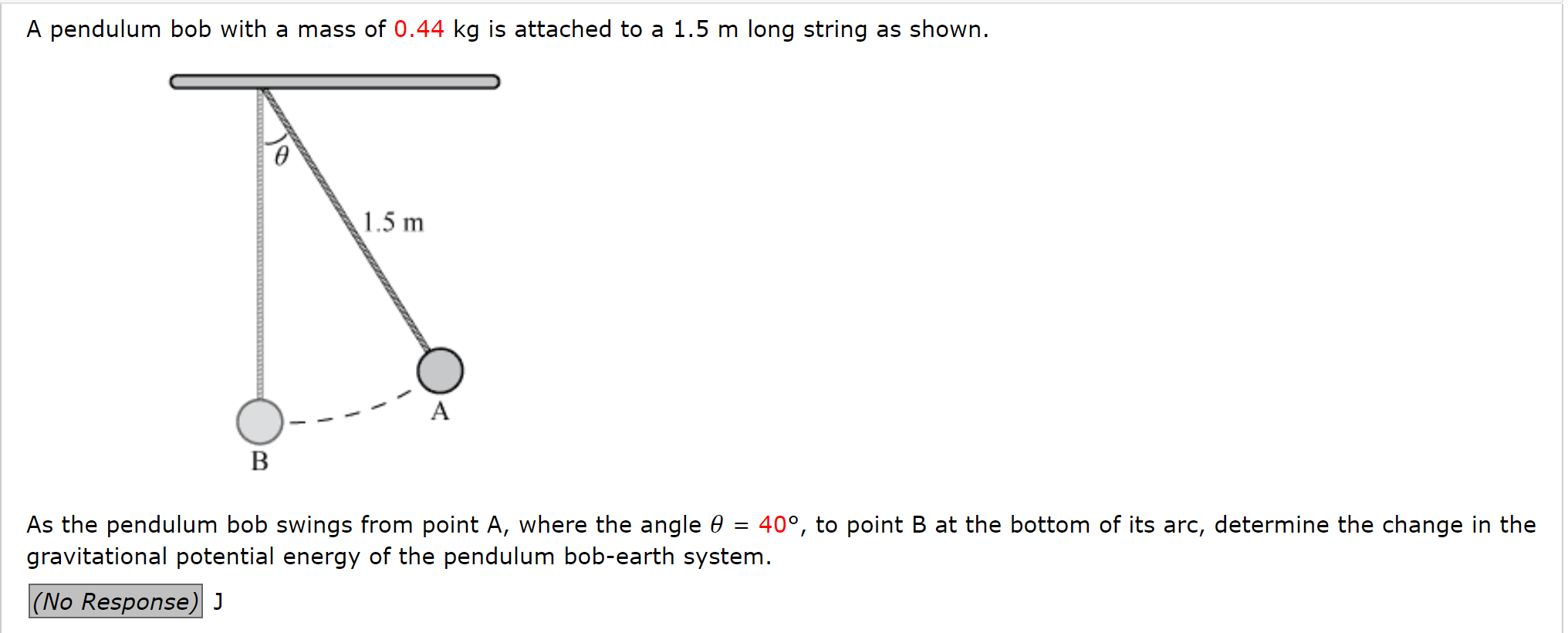
-1.51 J

While leaning out a window that is 6.1 m above the ground, you drop a 0.60 kg basketball to a friend at ground level. Your friend catches the ball at a height of 1.9 m above the ground. Determine the following.
the amount of work done (in J) by the force of gravity on the ball
the gravitational potential energy (in J) of the ball-earth system, relative to the ground when it is released
the gravitational potential energy (in J) of the ball-earth system, relative to the ground when it is caught
the ratio of the change (PEf − PE0) in the gravitational potential energy of the ball-earth system to the work done on the ball by the force of gravity
24.7 J
35.9 J
11.2 J
-1
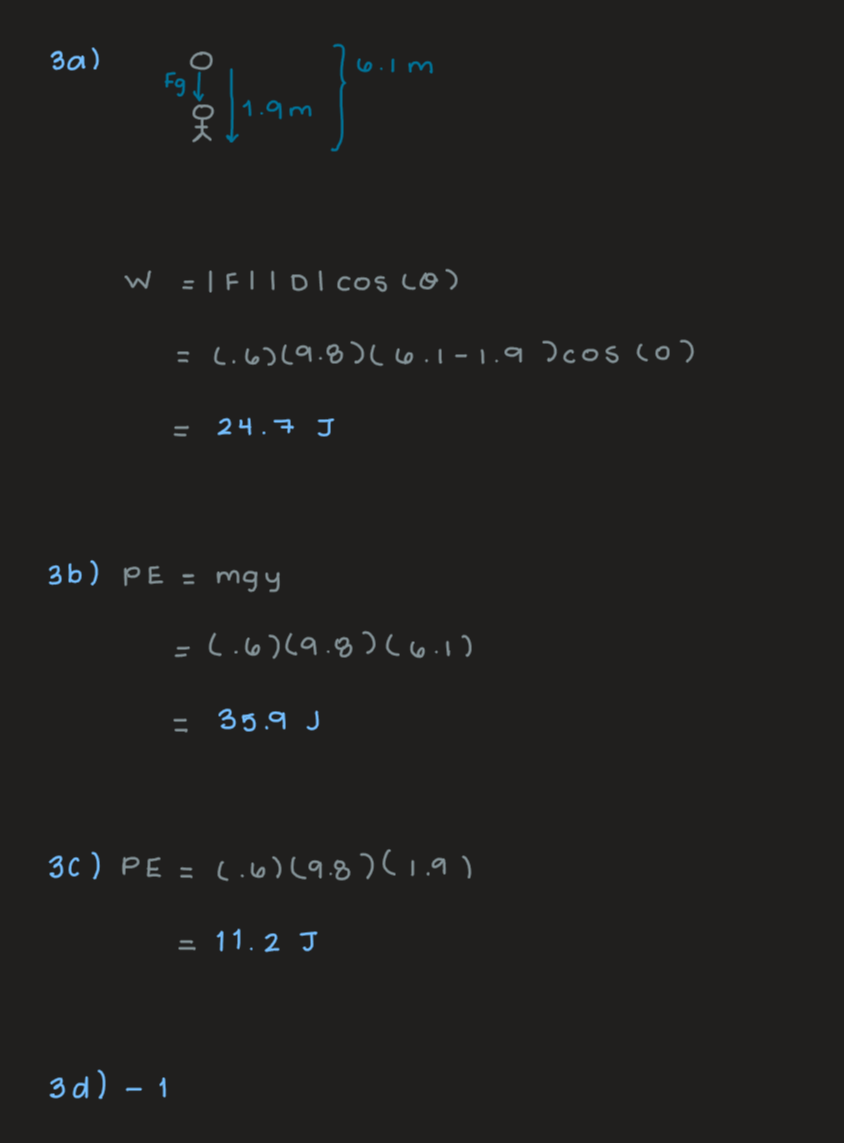
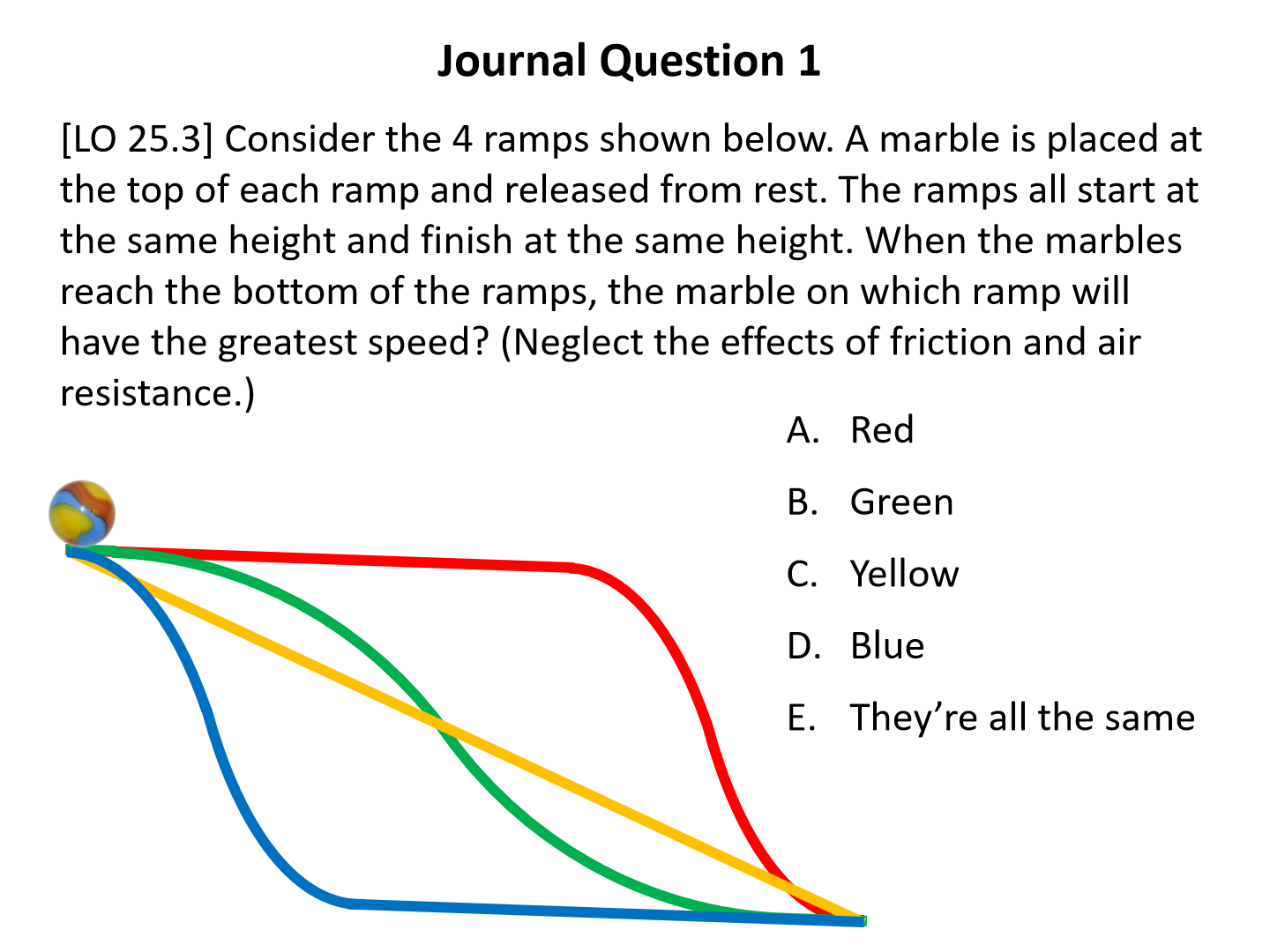
They’re all the same
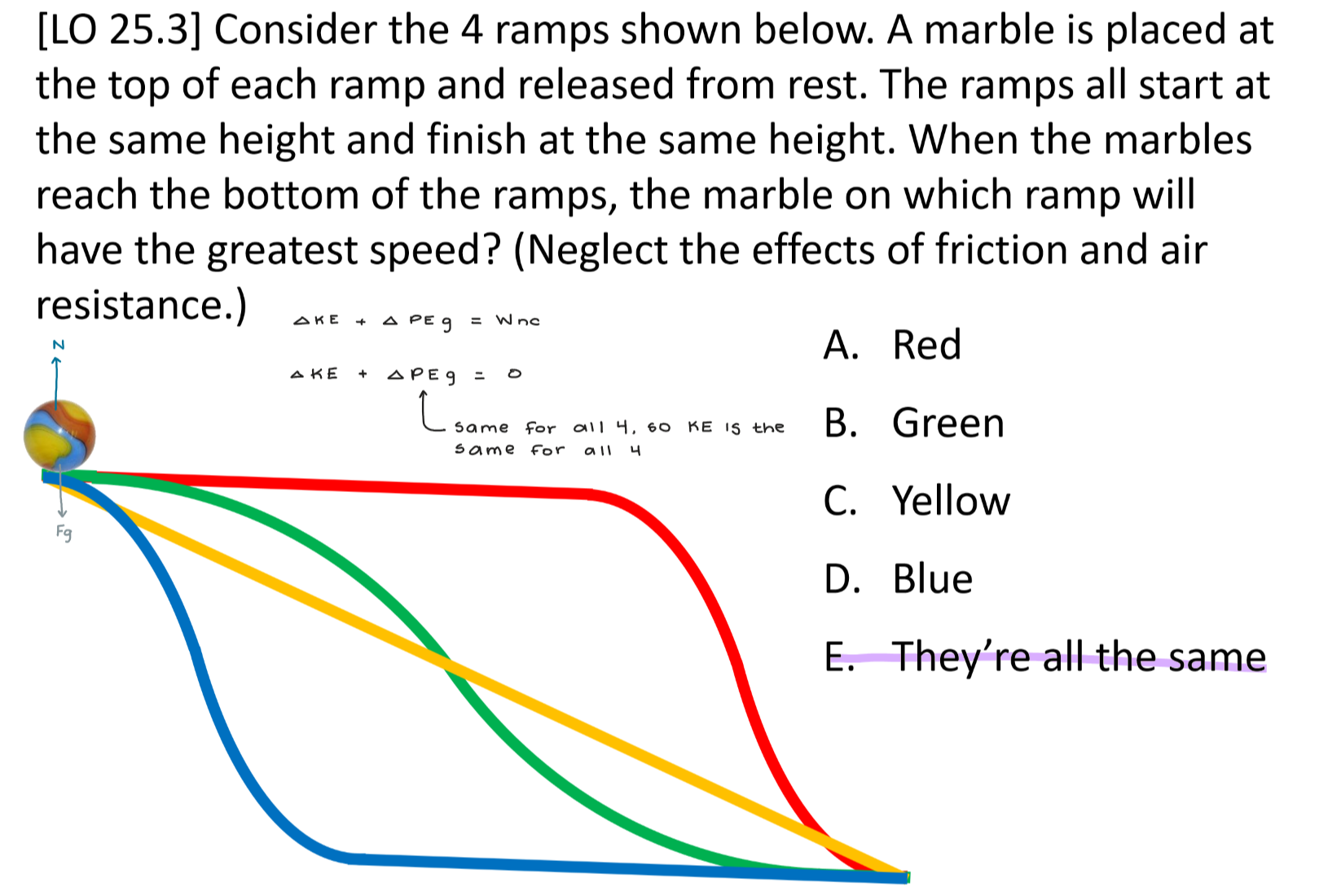
A 40 gram ball is thrown across the room. When it leaves the thrower’s hand, it is 1.5 m above the floor and has an initial speed of 5 m/s.
If air resistance is neglected, what is the speed of the ball just before it hits the floor?
This time, include air resistance. If the air does -0.2 J of work to the ball. What is the speed of the ball just before it hits the floor?
How much work is done by the force of gravity?
7.38 m/s
6.66 m/s
+0.588 J

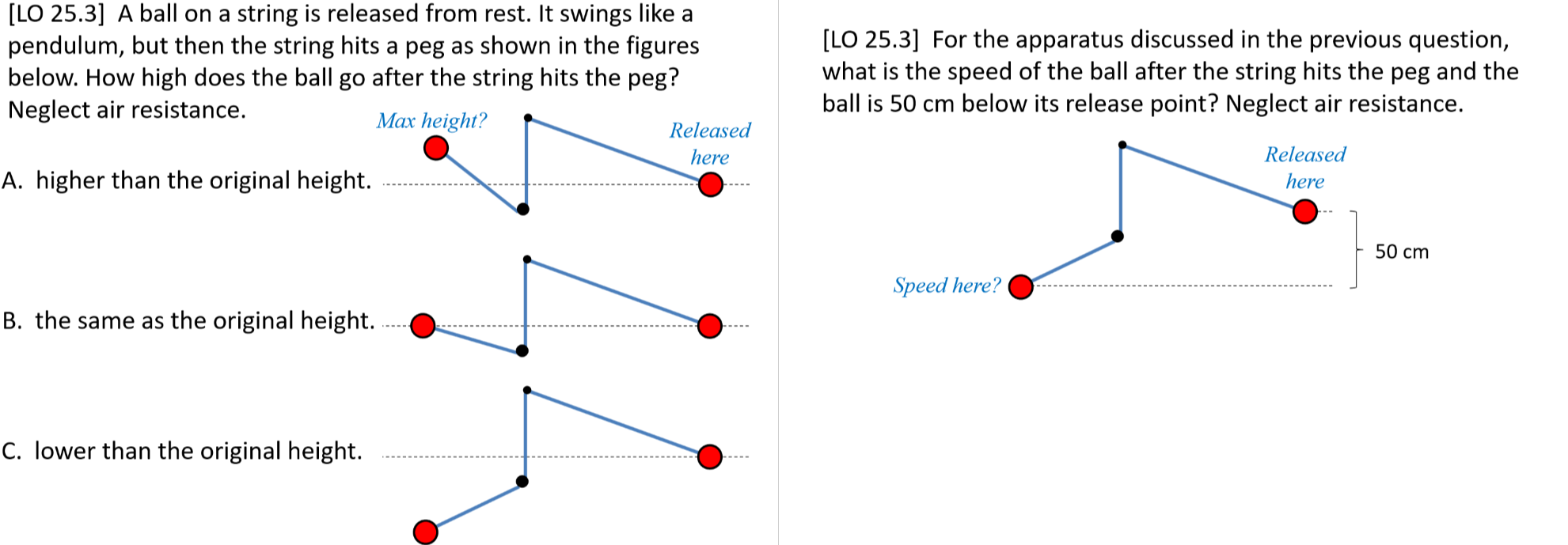
the same as the original height
3.13 m/s


a) 4.95e5 J
b) -1.23e5 J
c) 80.5 m/s
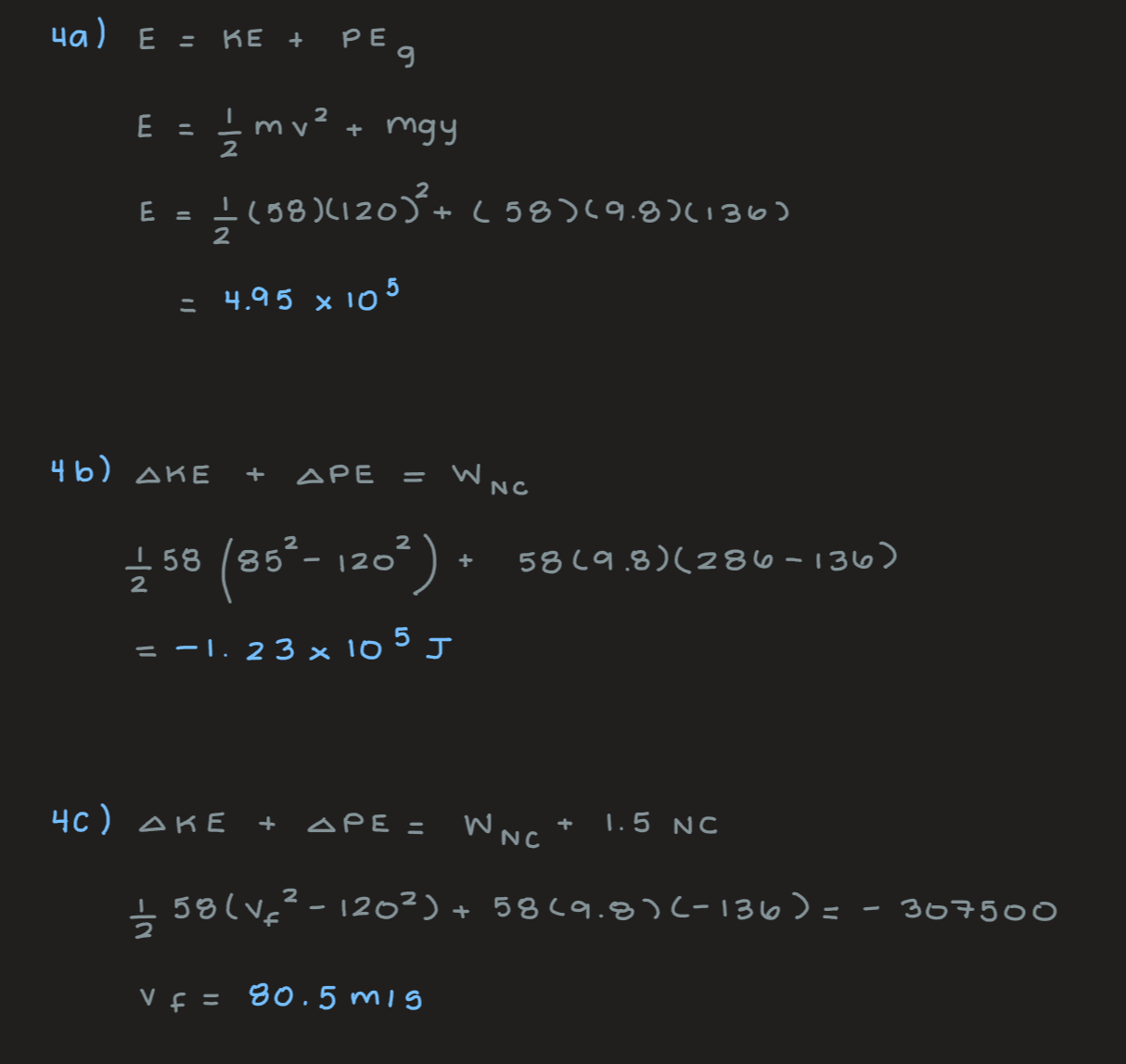

1.62 m/s², to the left
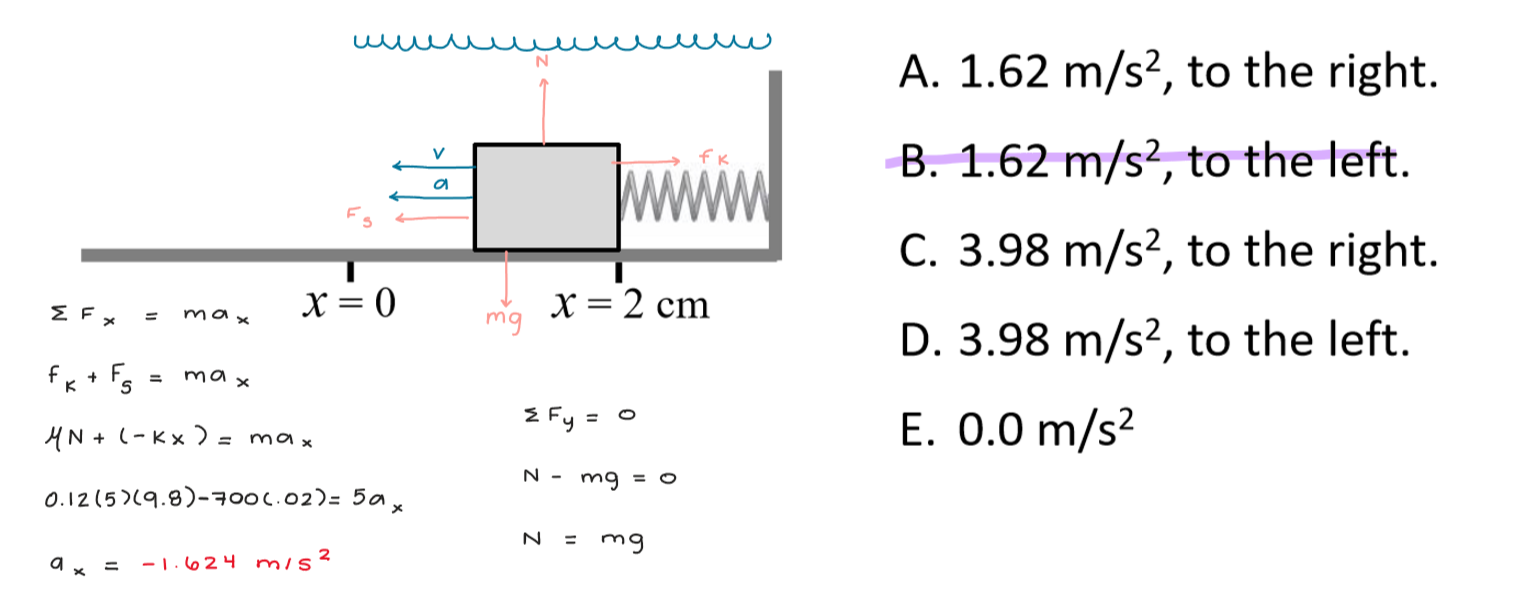
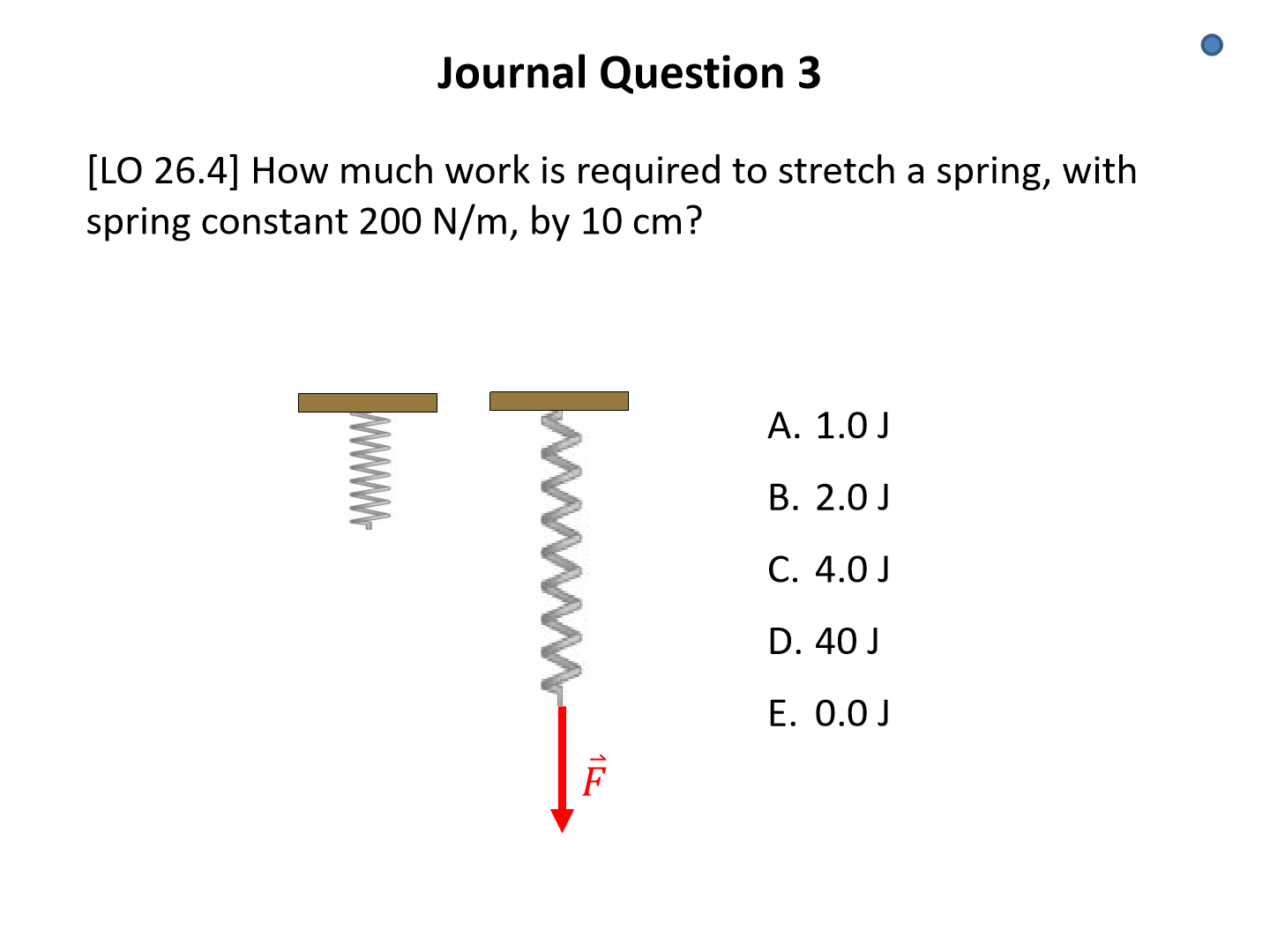
1.0 J
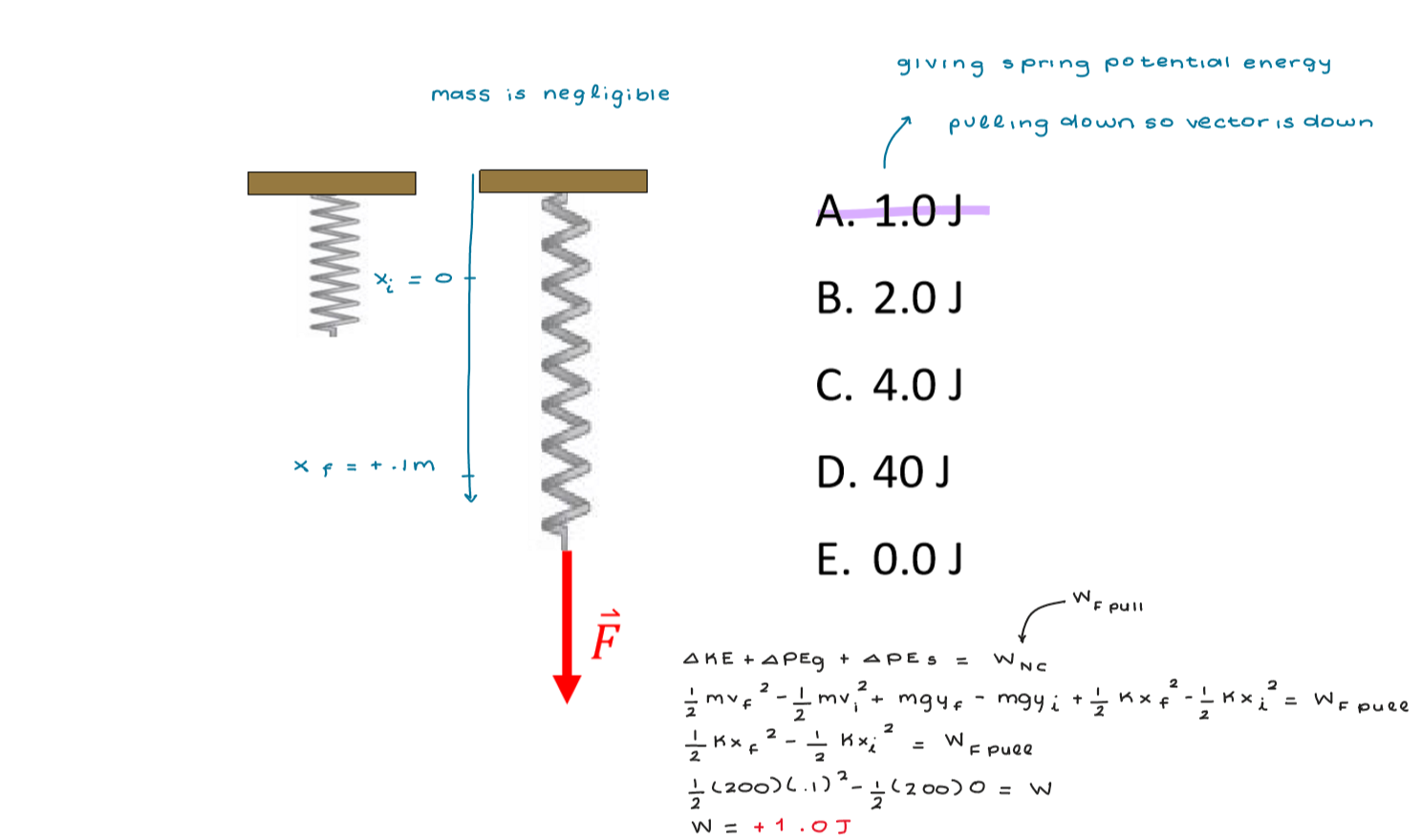
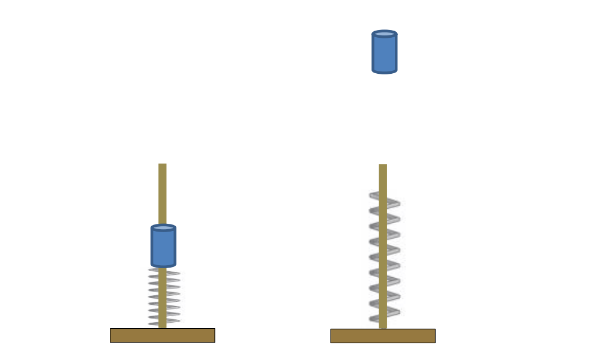
In the demonstration, a 50 g mass is pressed down on a spring (k = 120 N/m) so that the spring is compressed by 12 cm. The mass is then released so that it shoots up into the air.
How high does the mass go above the point where it was released? (Neglect air resistance & friction.)
What is the speed of the mass when it reaches the spring’s equilibrium position? (Neglect air resistance & friction.)
1.76 m
5.68 m/s

You have a light spring which obeys Hooke's law. This spring stretches 2.22 cm vertically when a 2.50 kg object is suspended from it. Determine the following.
the force constant of the spring (in N/m)
the distance (in cm) the spring stretches if you replace the 2.50 kg object with a 1.25 kg object
the amount of work (in J) an external agent must do to stretch the spring 7.30 cm from its unstretched position
1100 N/m
1.11 cm
2.94 J
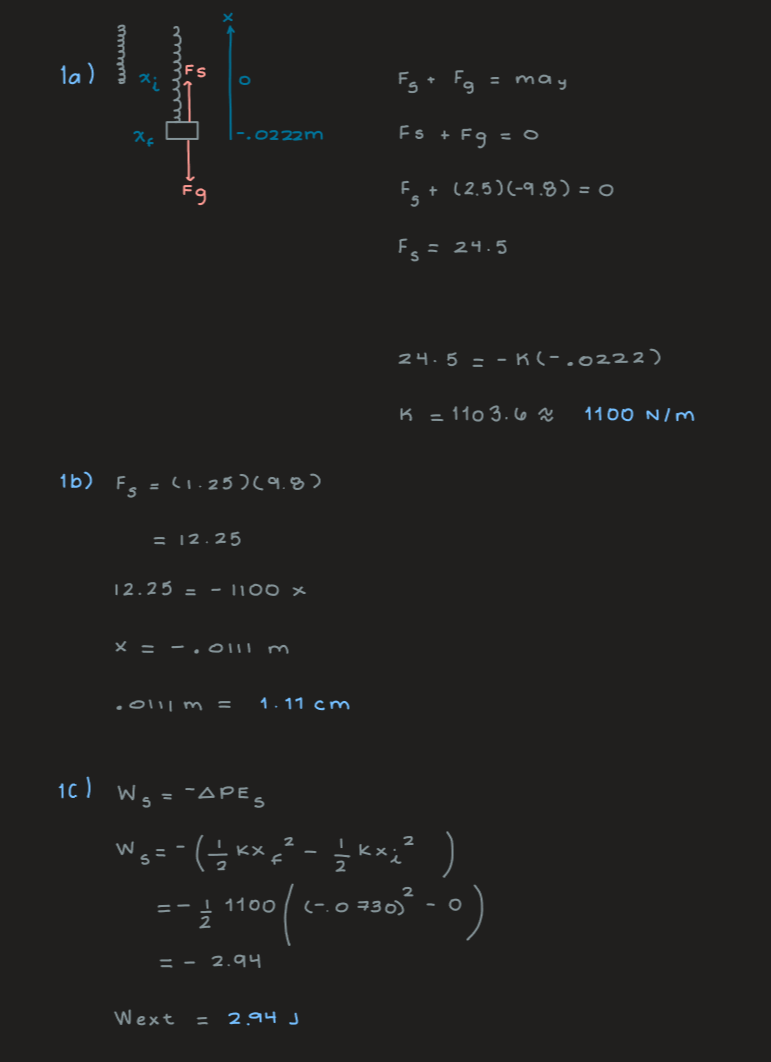

0.211 m


0.095 m

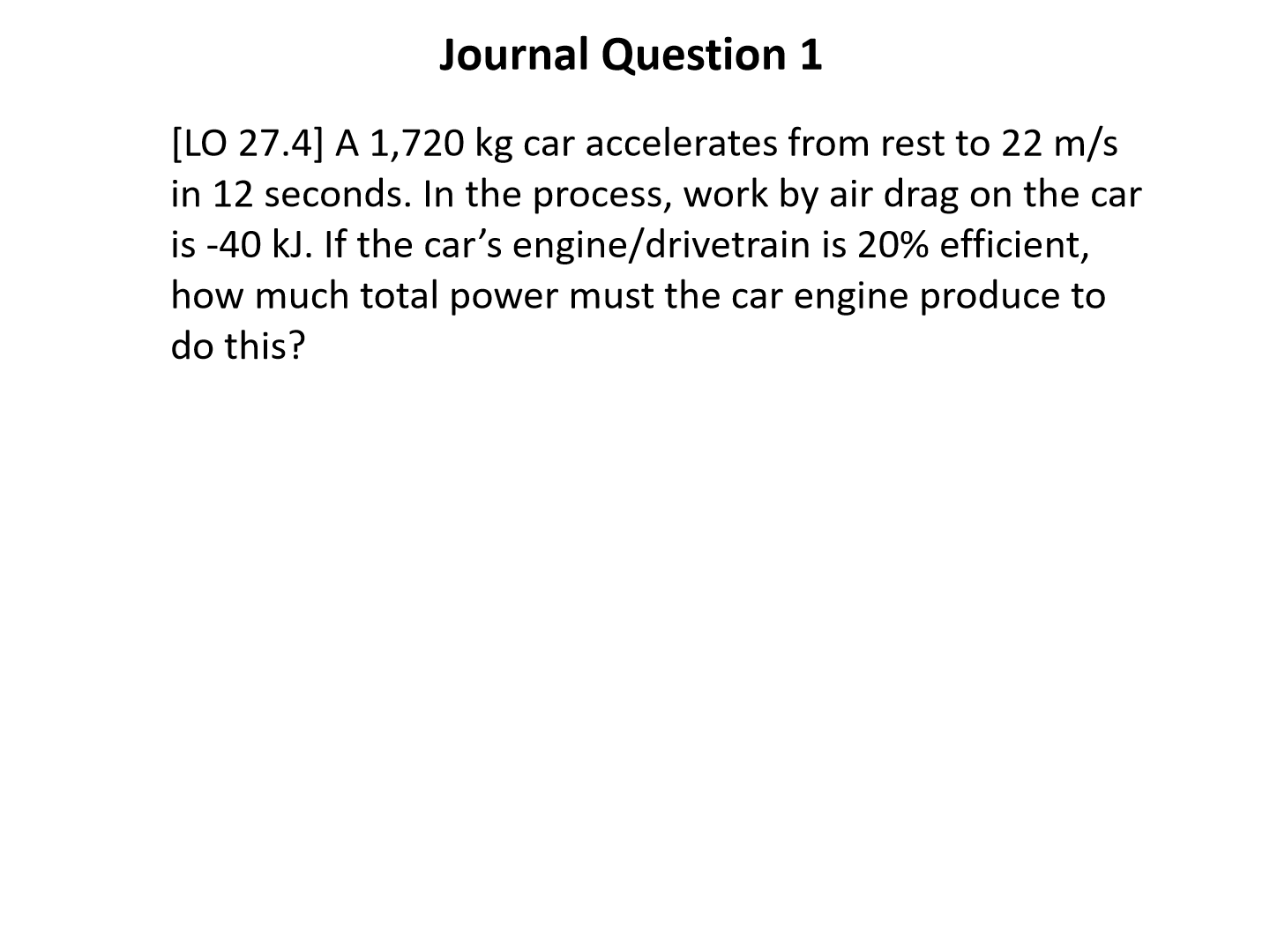
190100 W = 190 KW
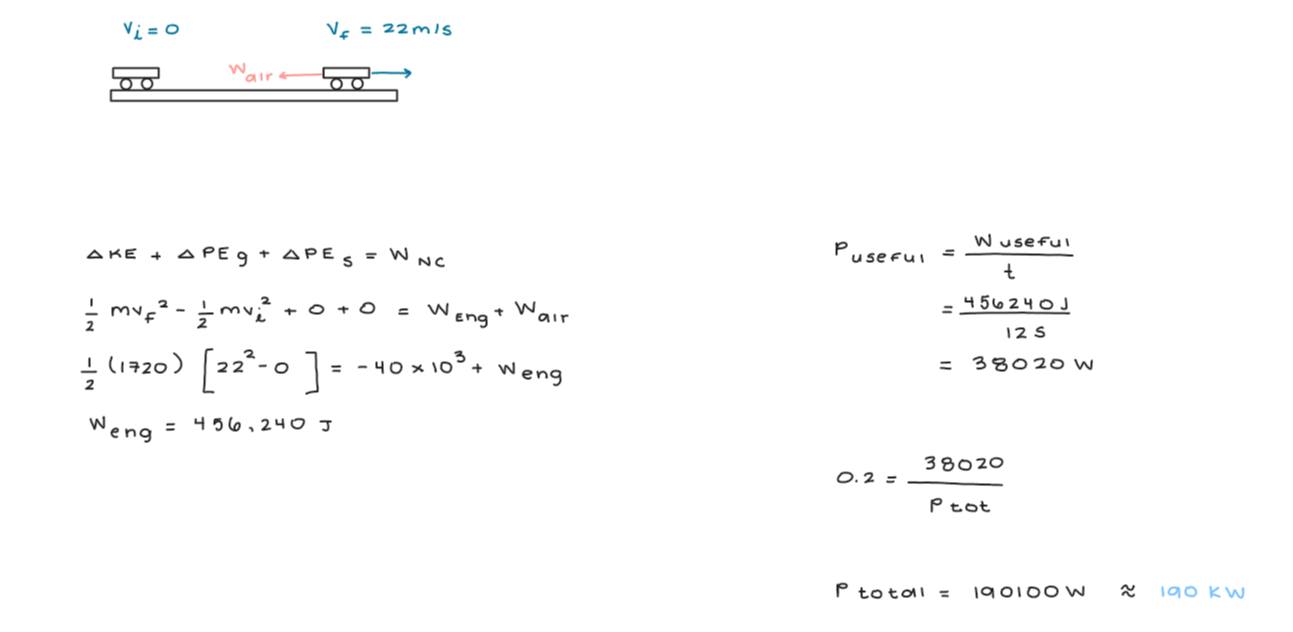
Shoveling snow can be extremely taxing since the arms have such a low efficiency in this activity. Suppose a person shoveling a sidewalk metabolizes food at the rate of 750 W. (The efficiency of a person shoveling is 3%.)
What is her useful power output (in W)?
How long (in s) will it take her to lift 2,800 kg of snow 1.20 m? (This could be the amount of heavy snow on 60.0 ft of sidewalk.)
How much waste heat (in J) will she generate in the process?
22.5 W
1463 s
1064672 J
